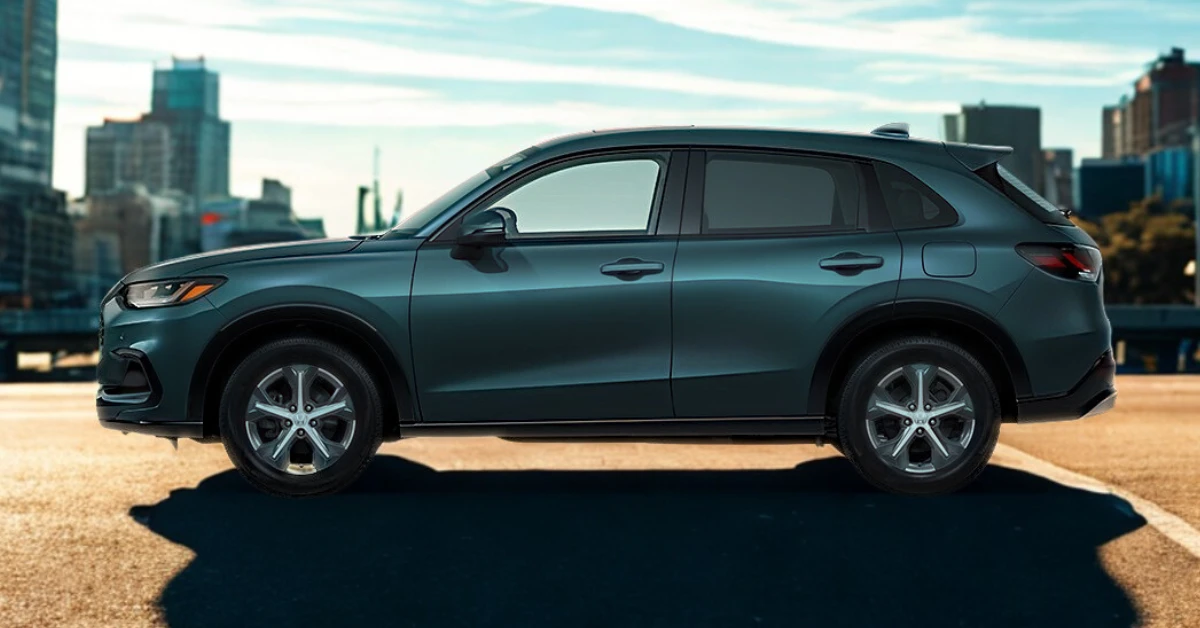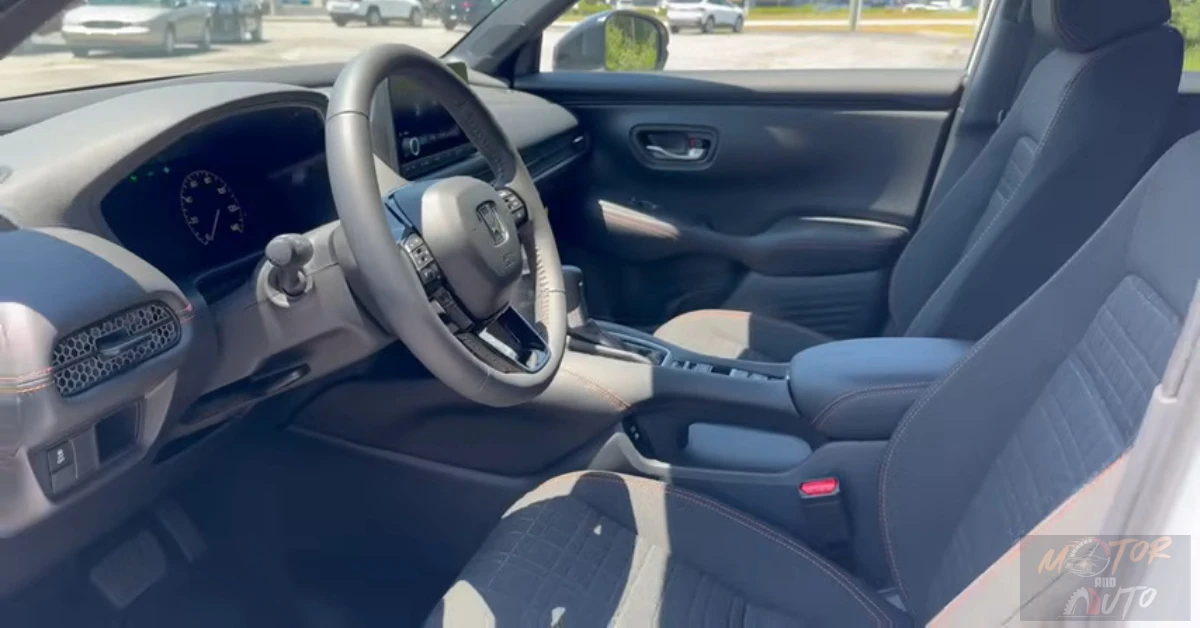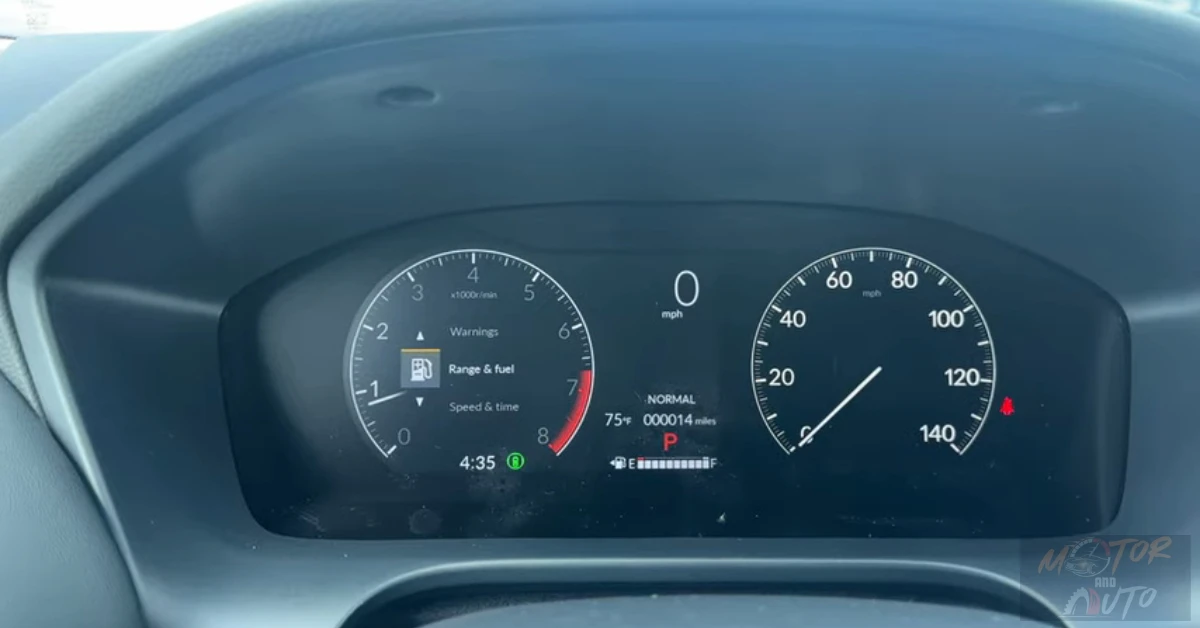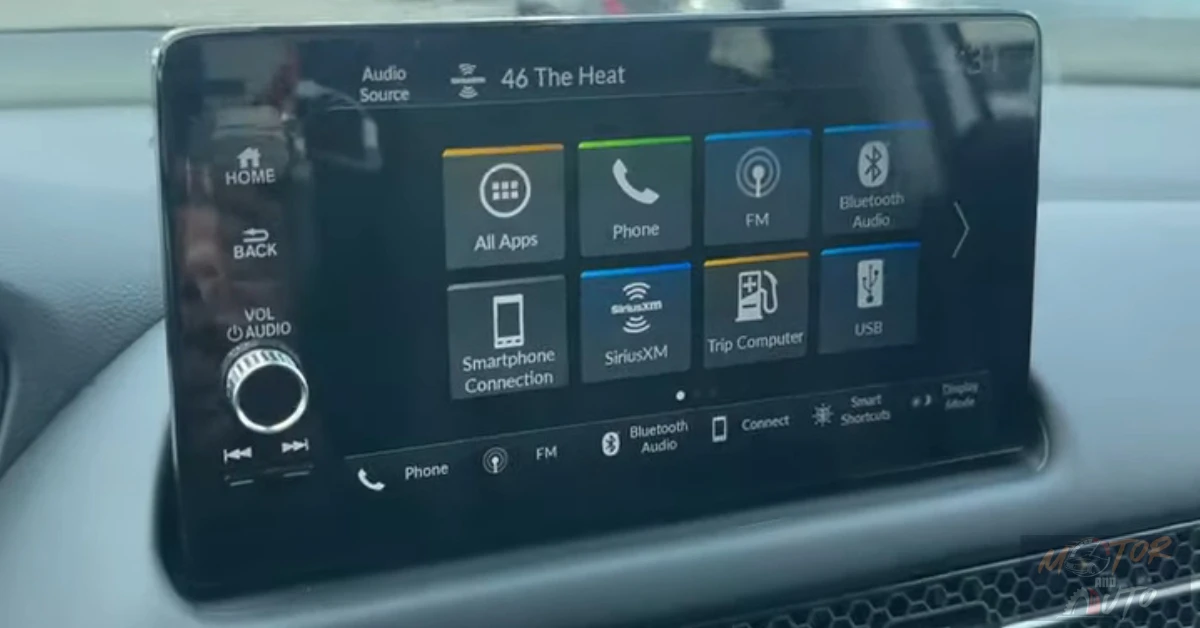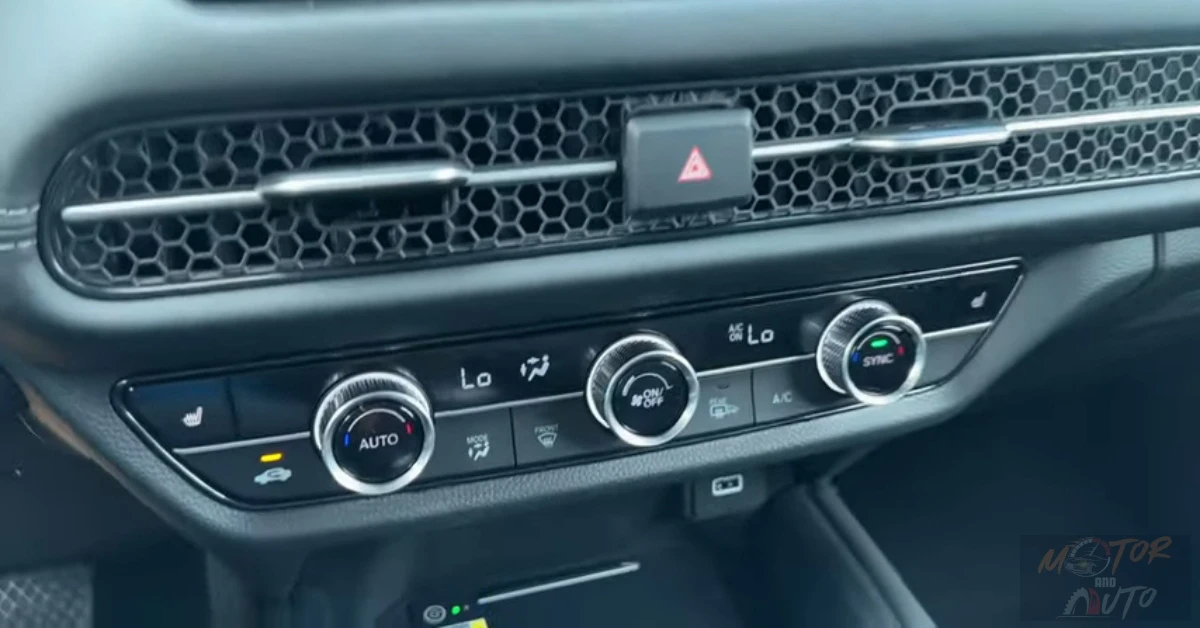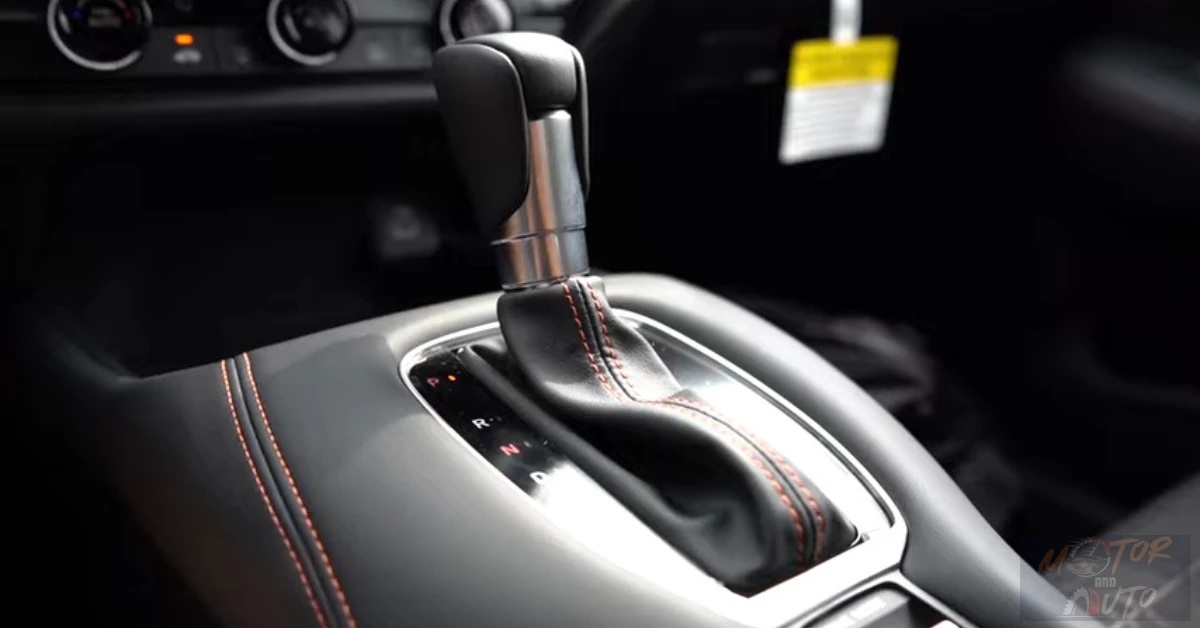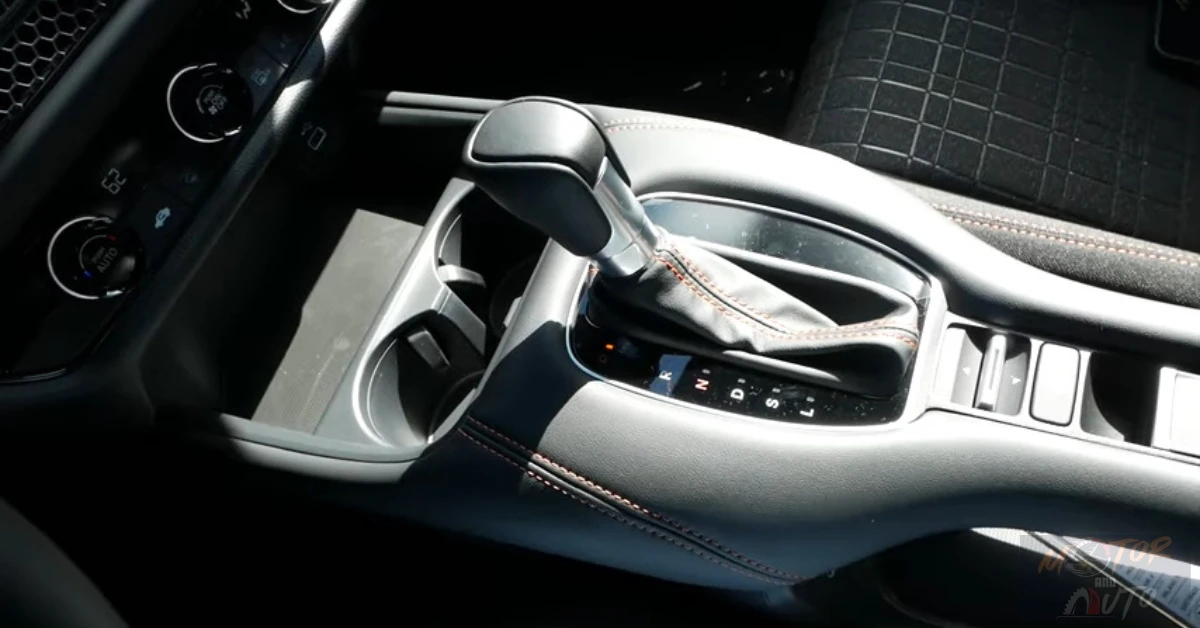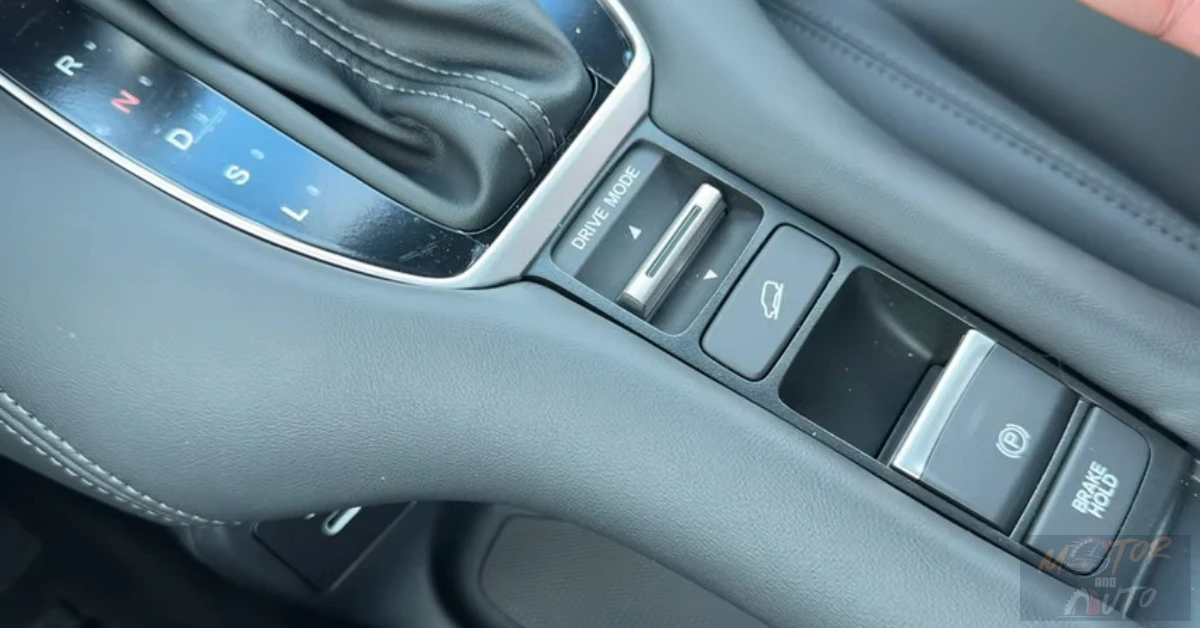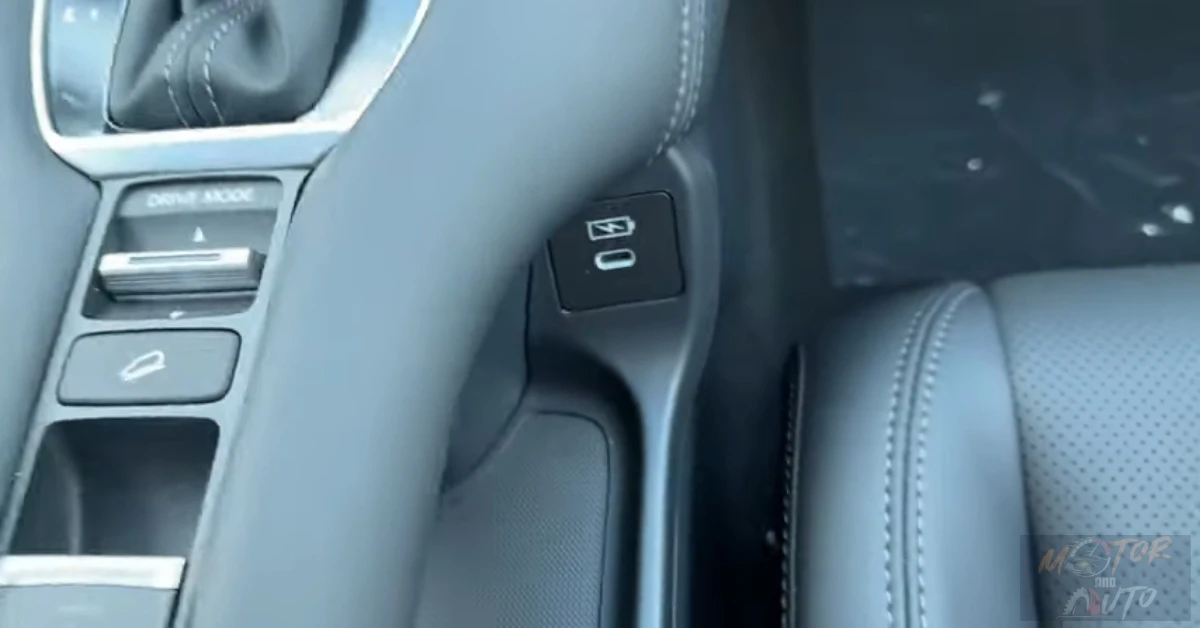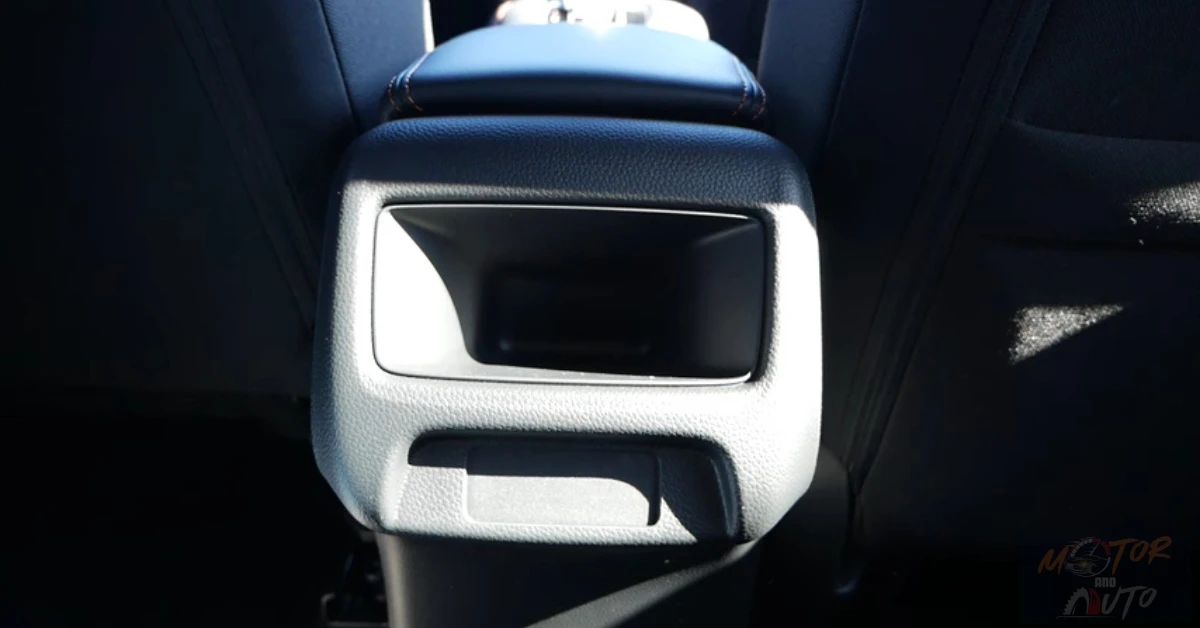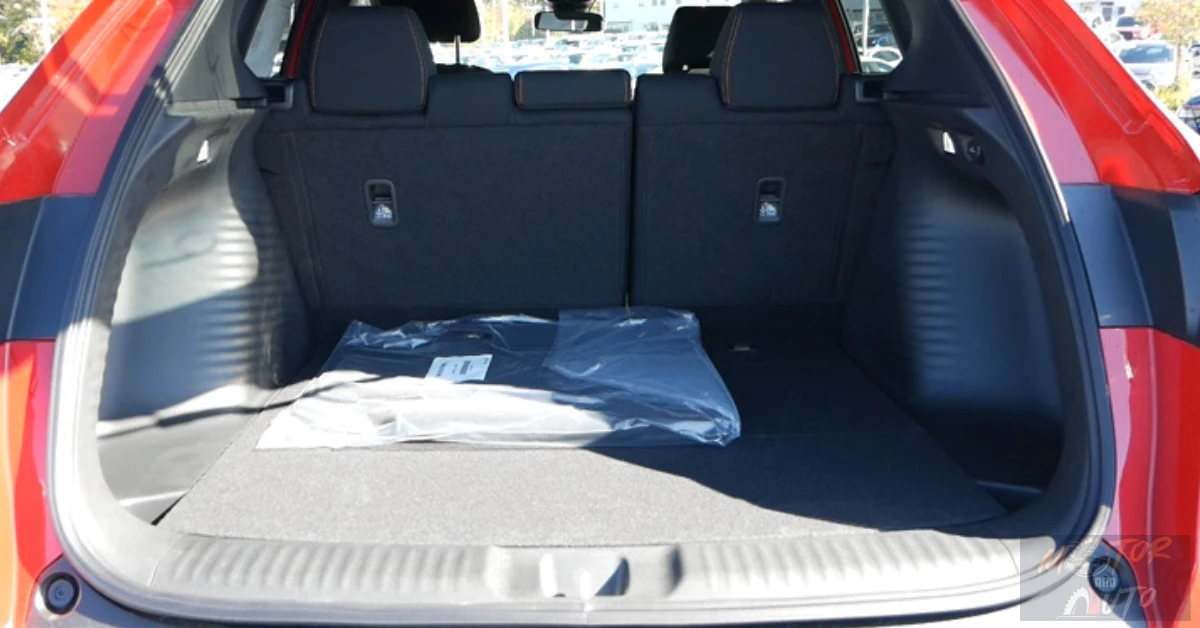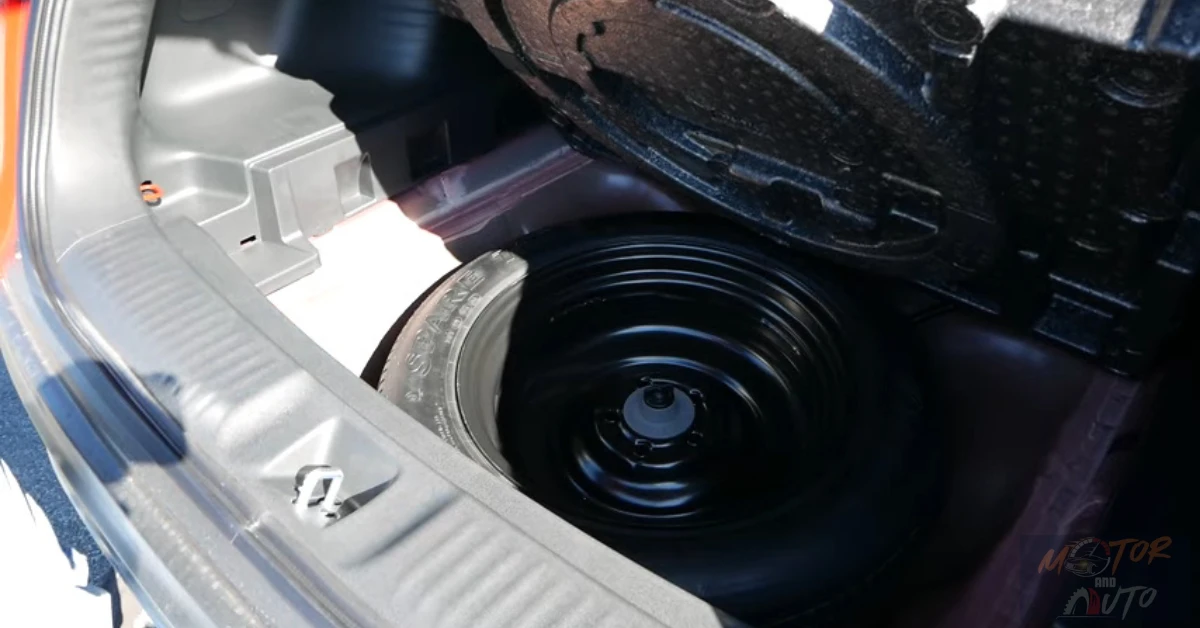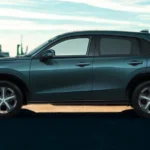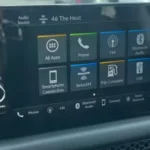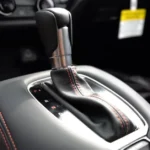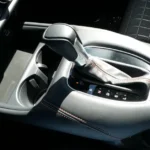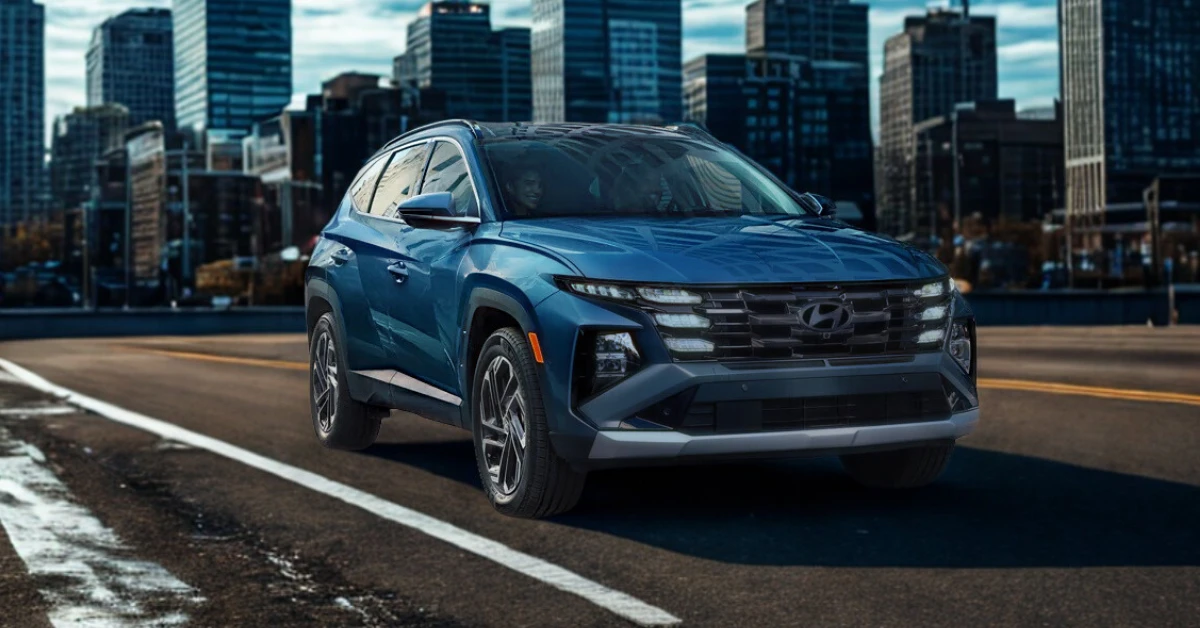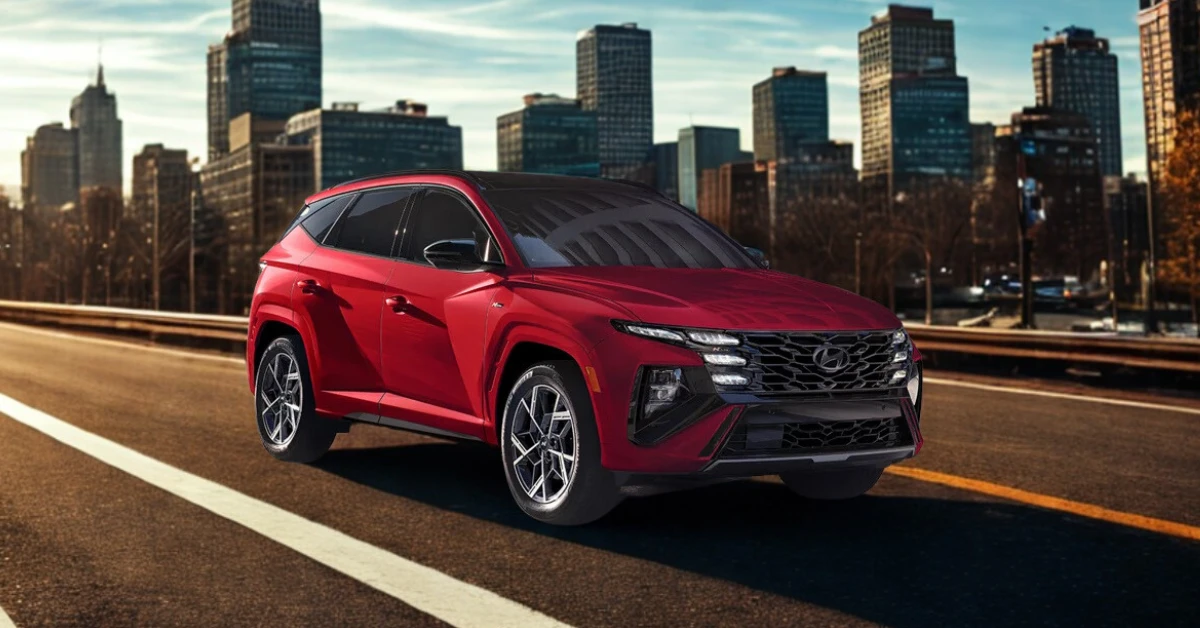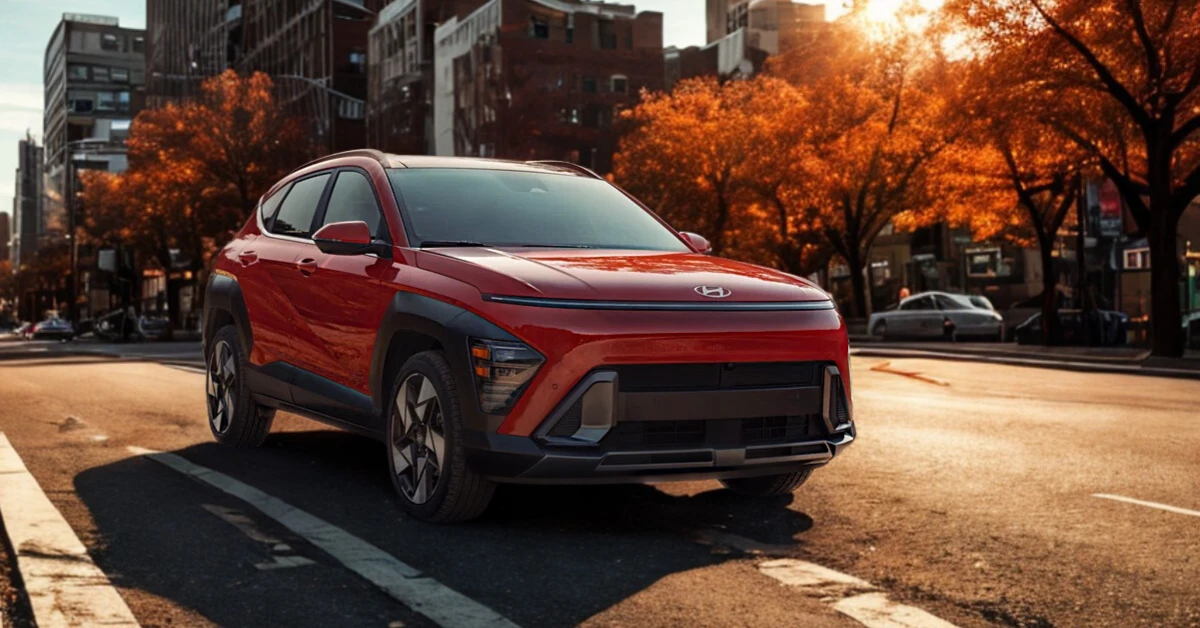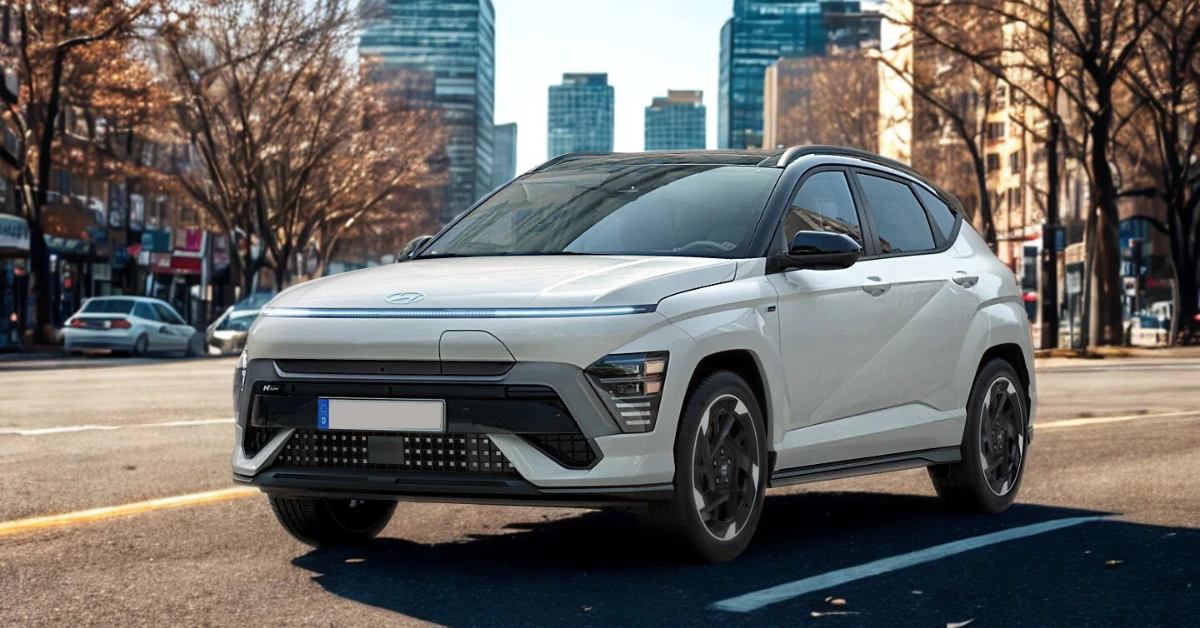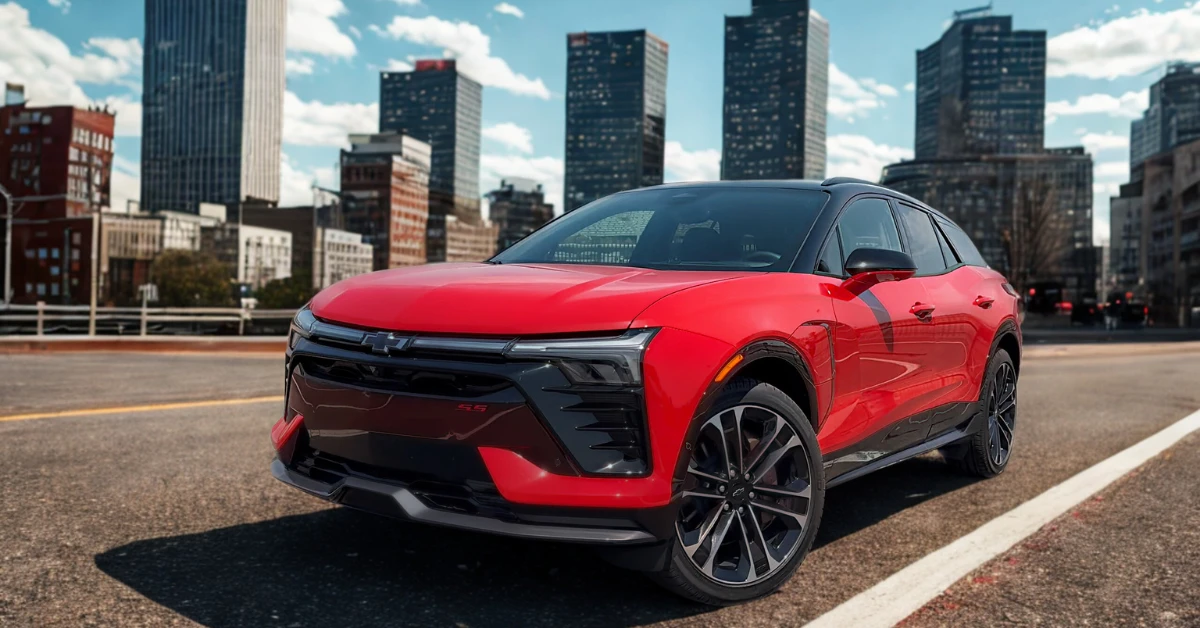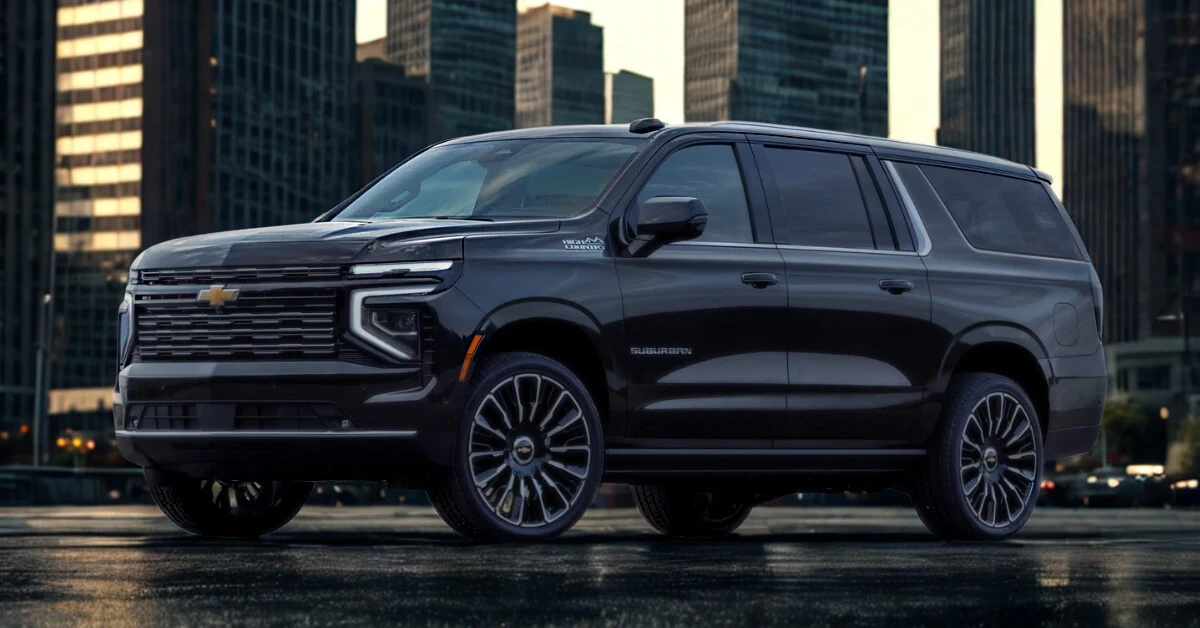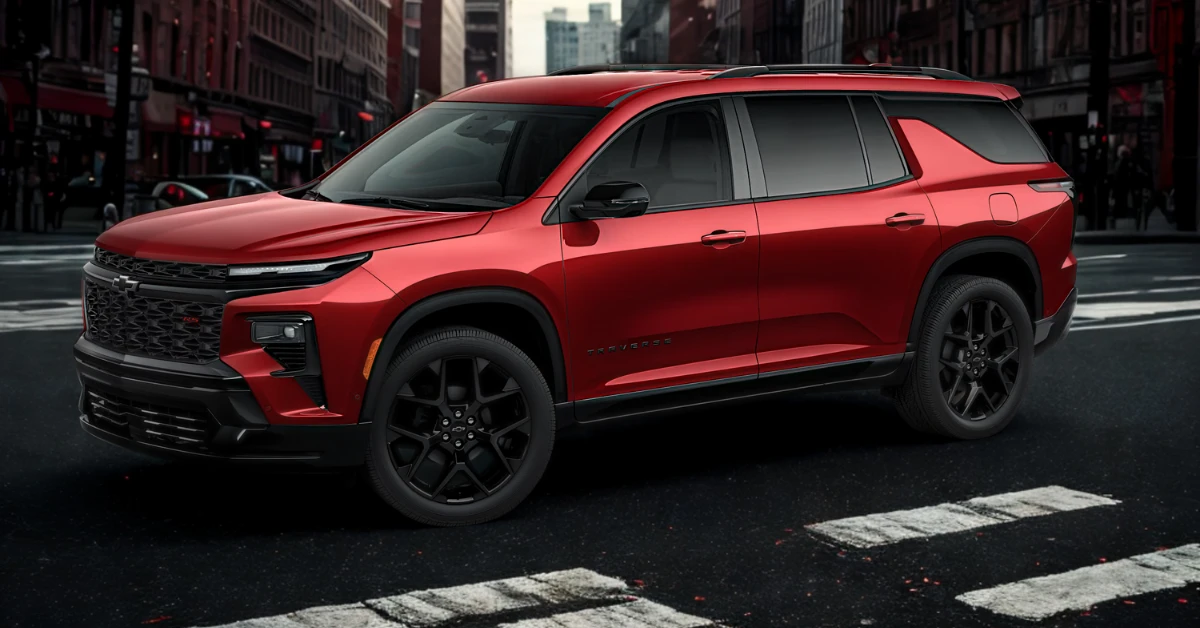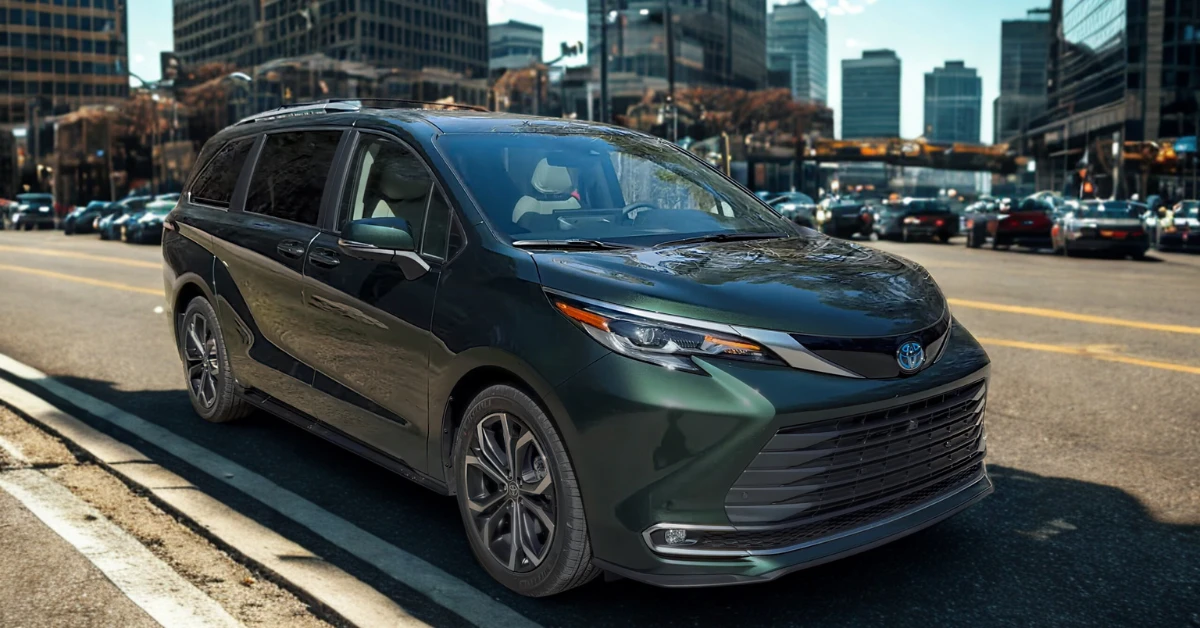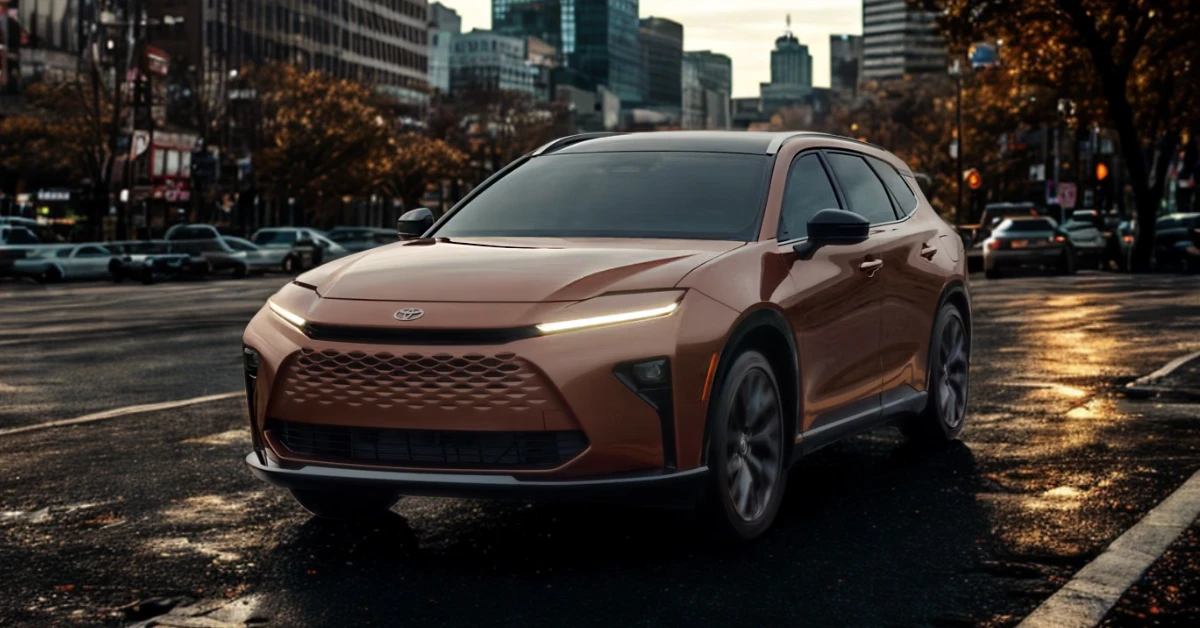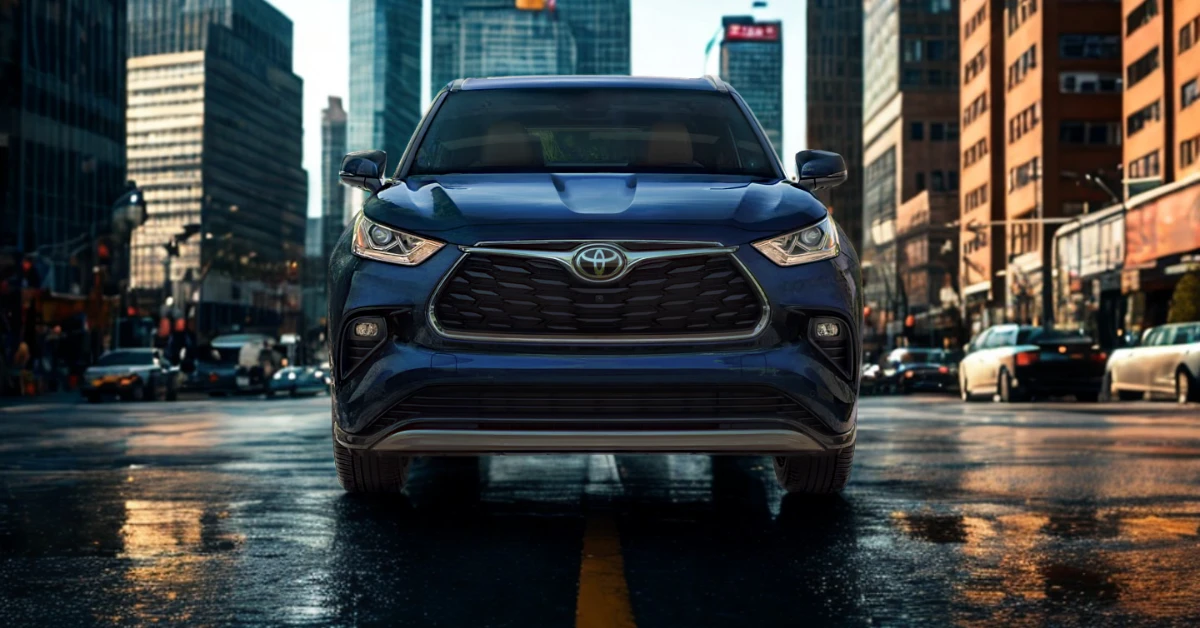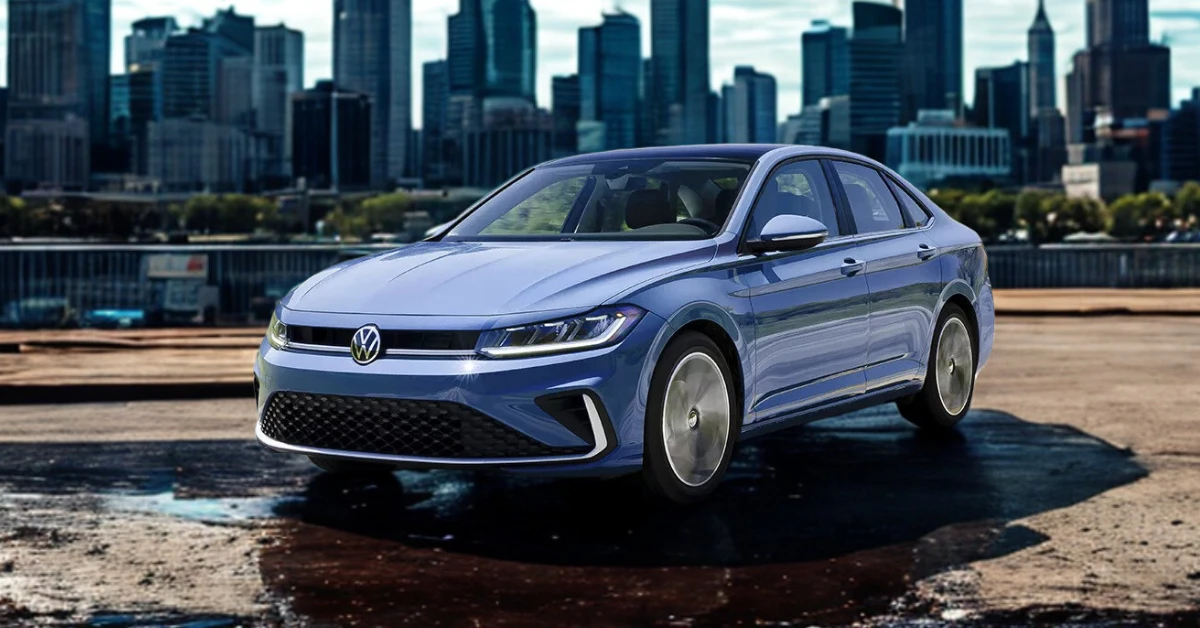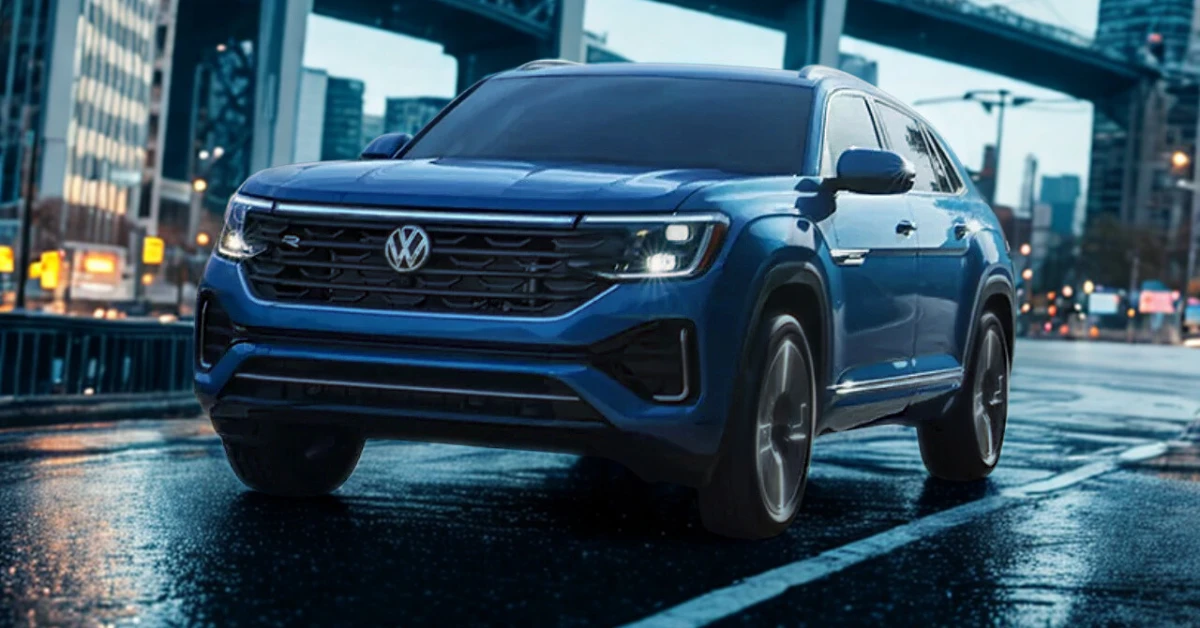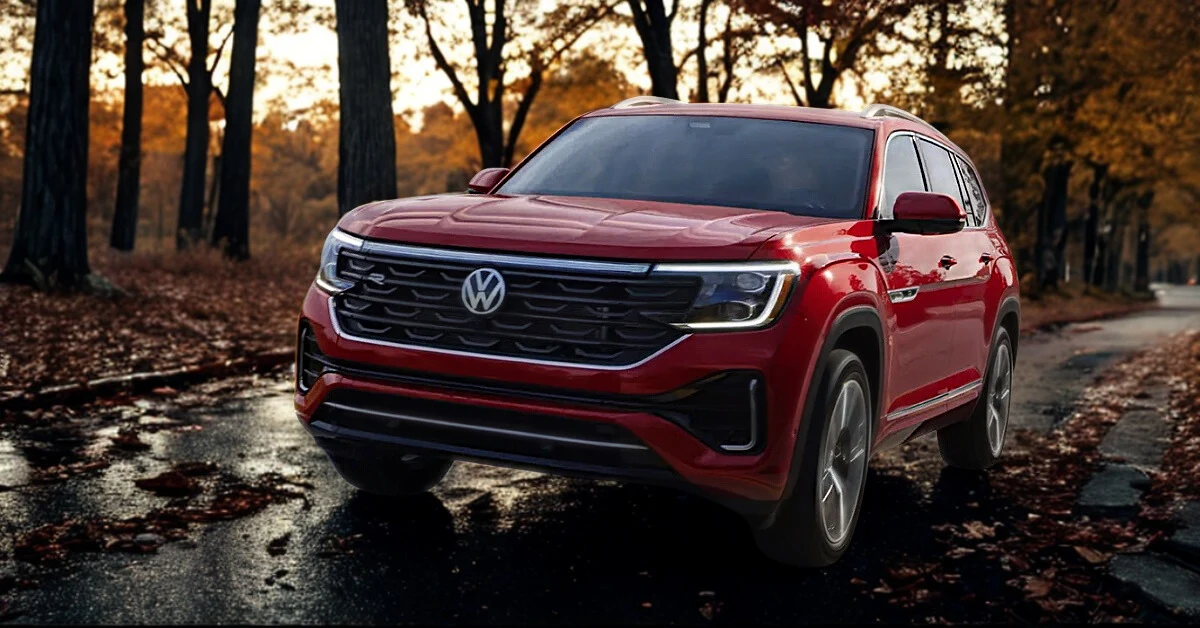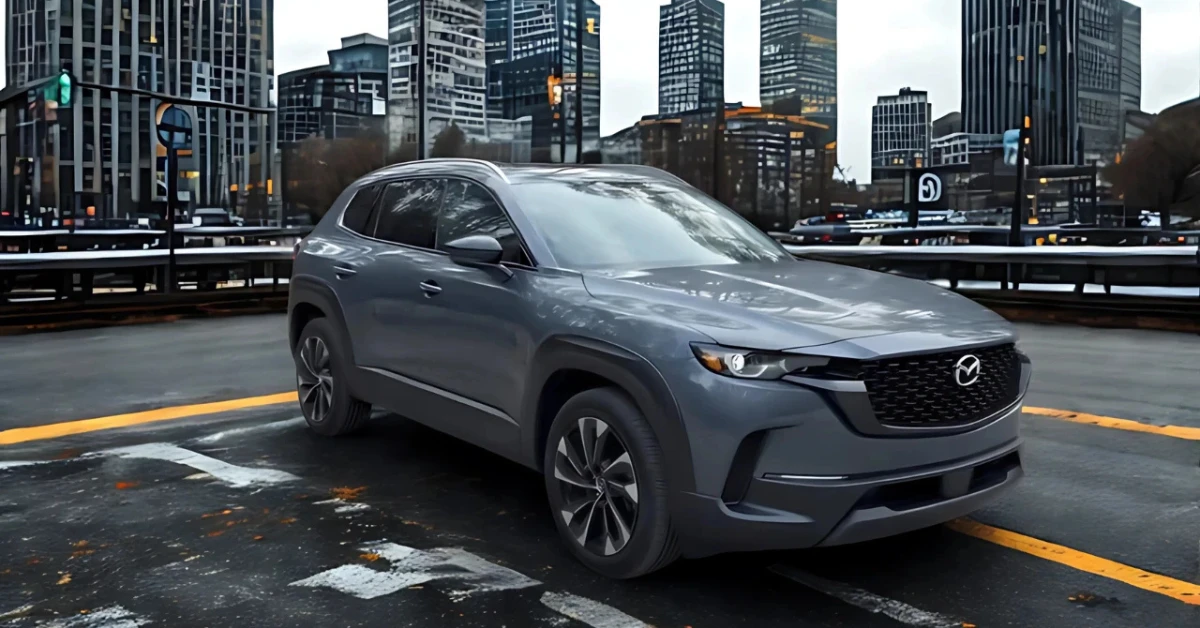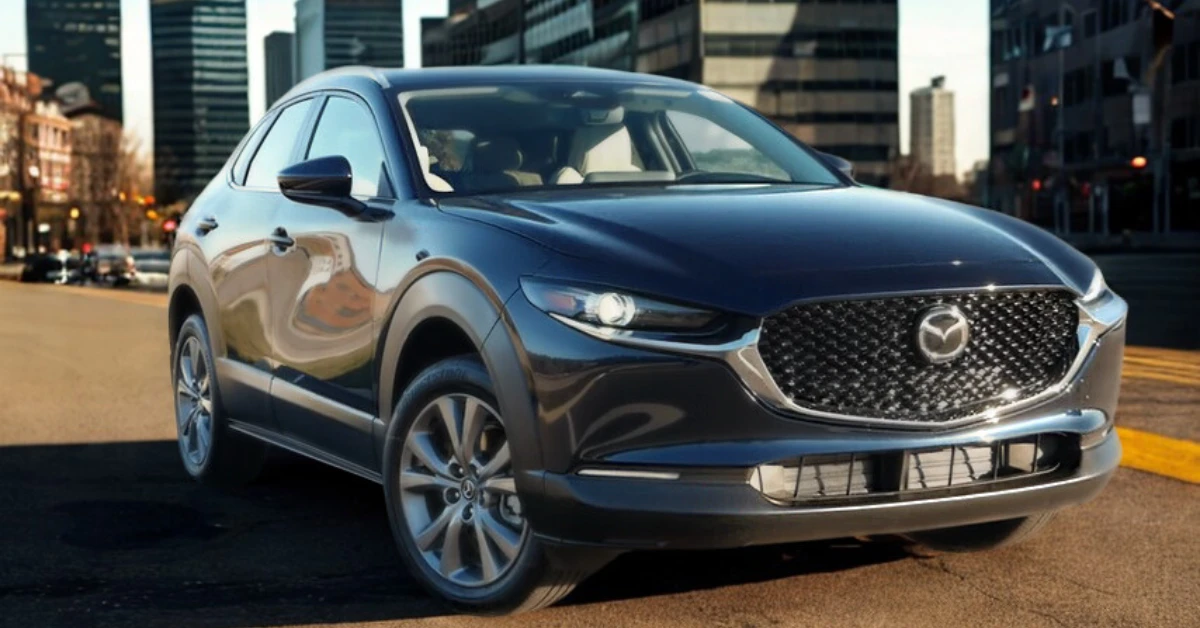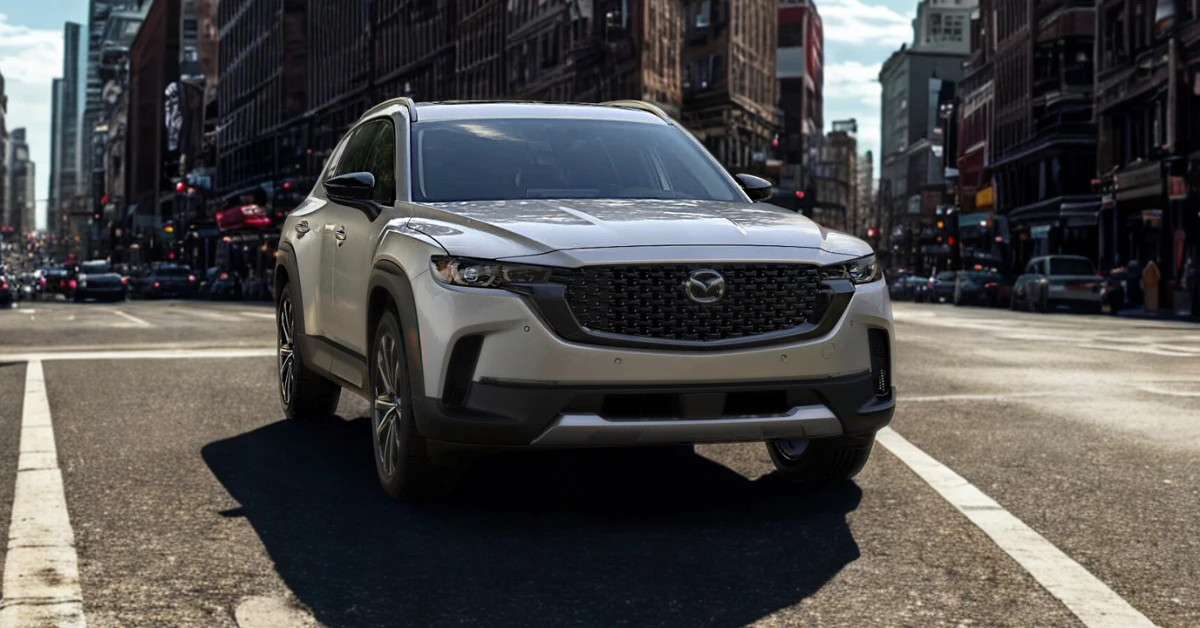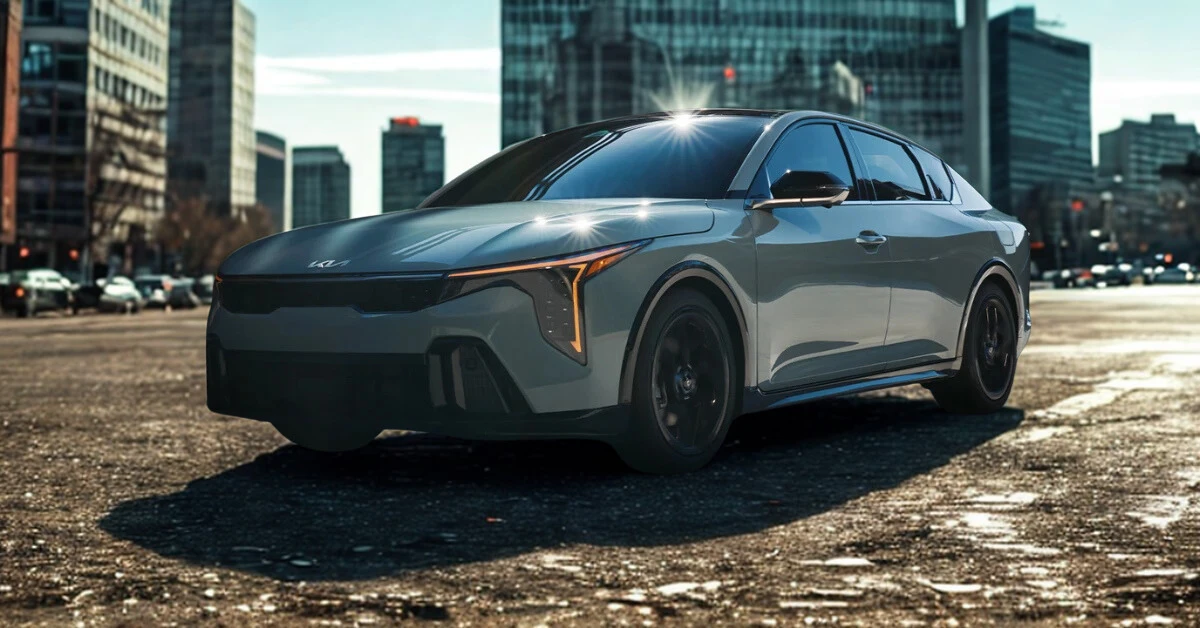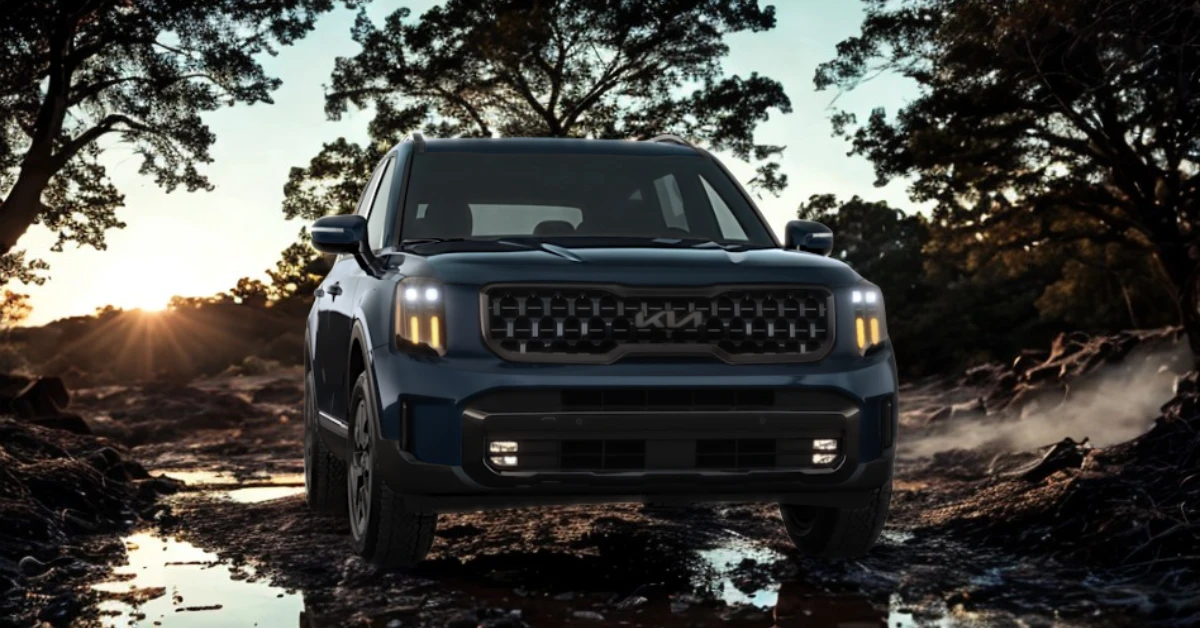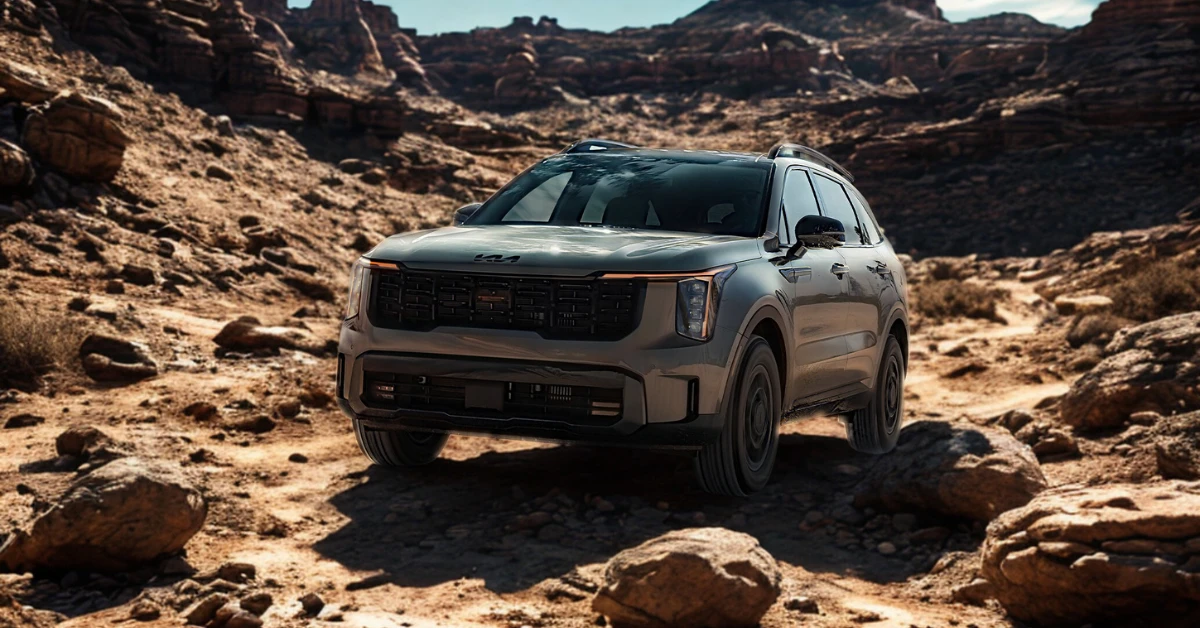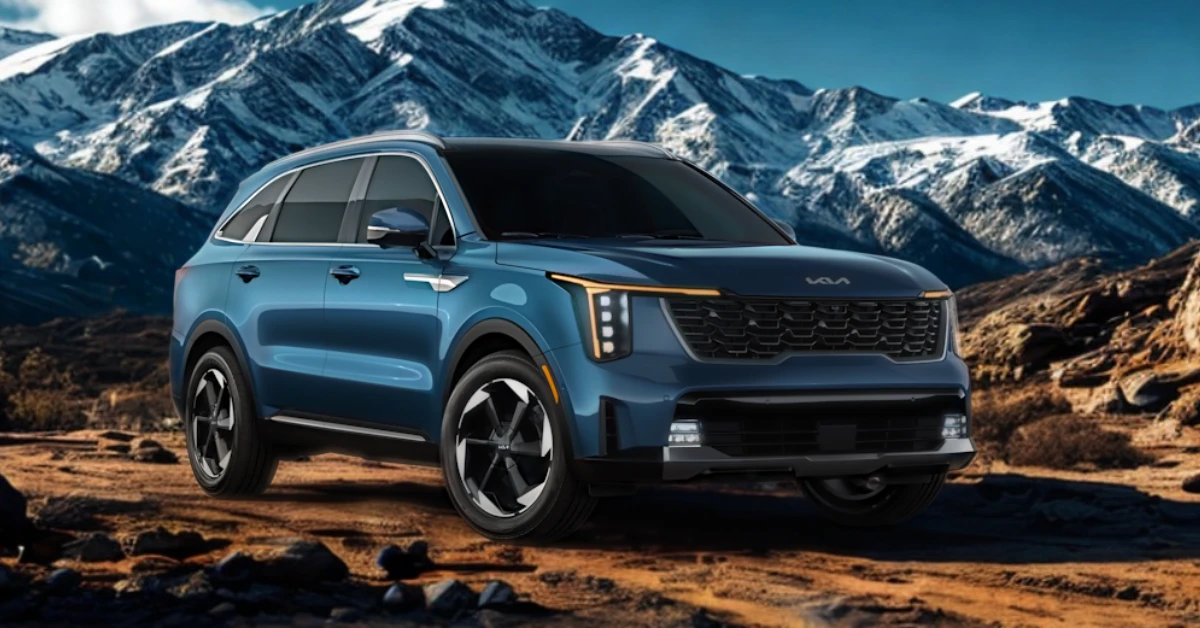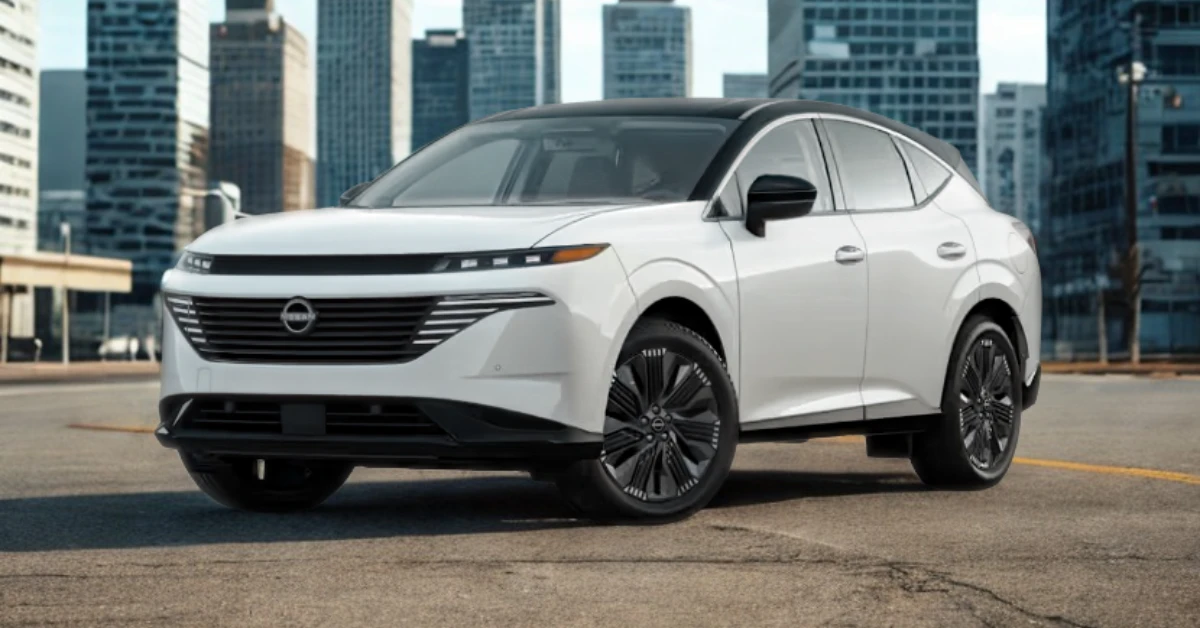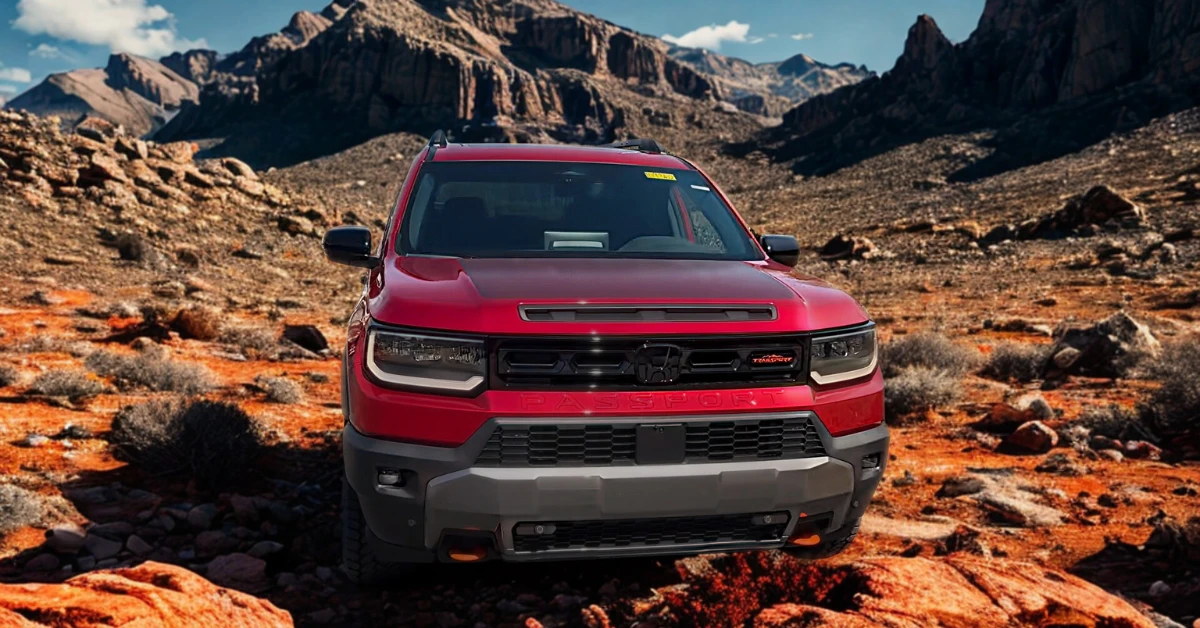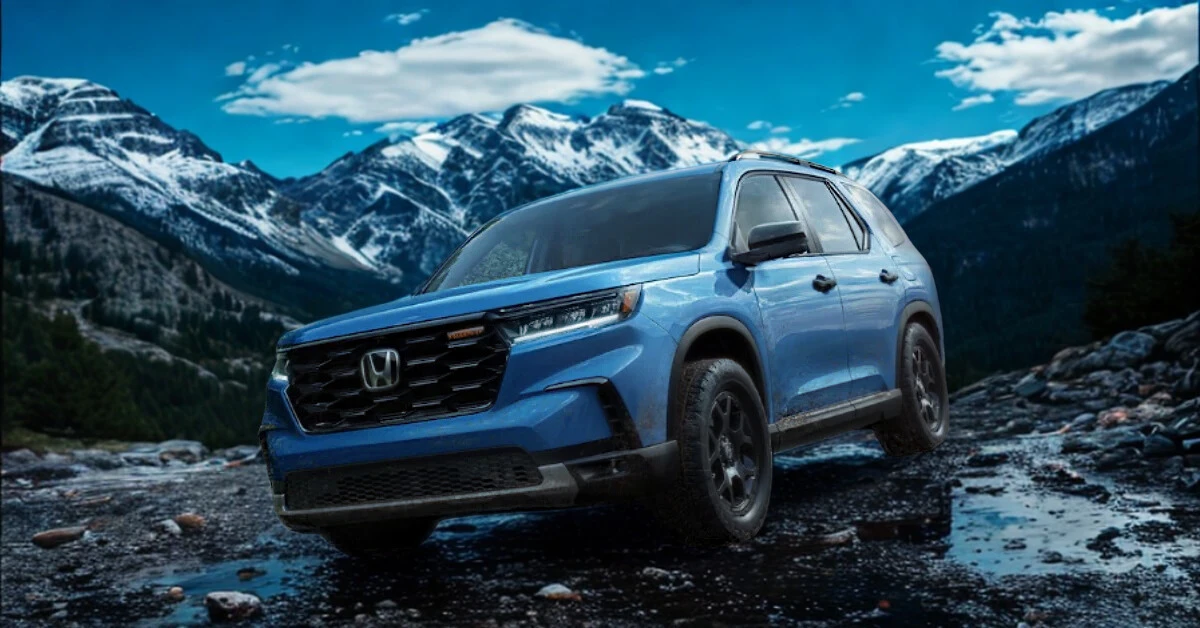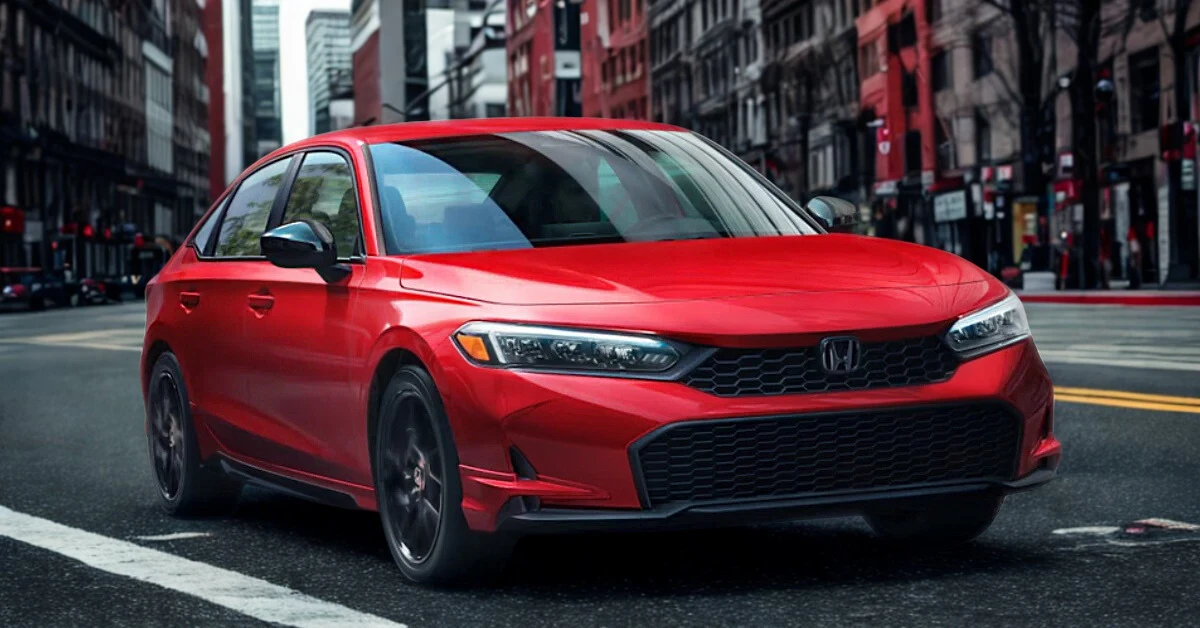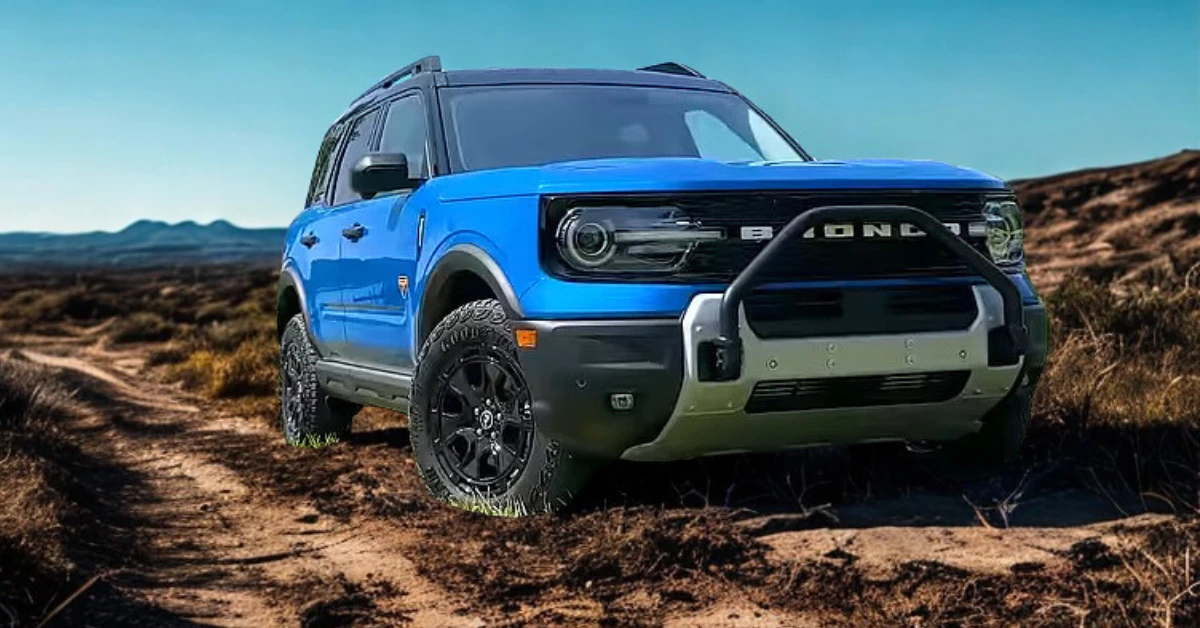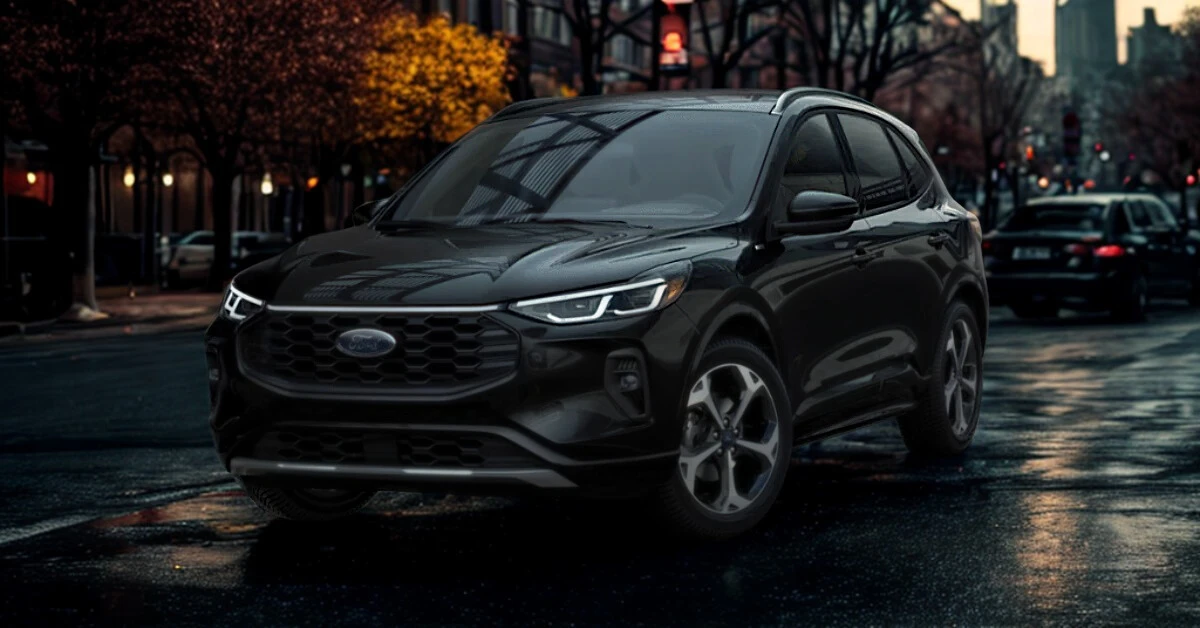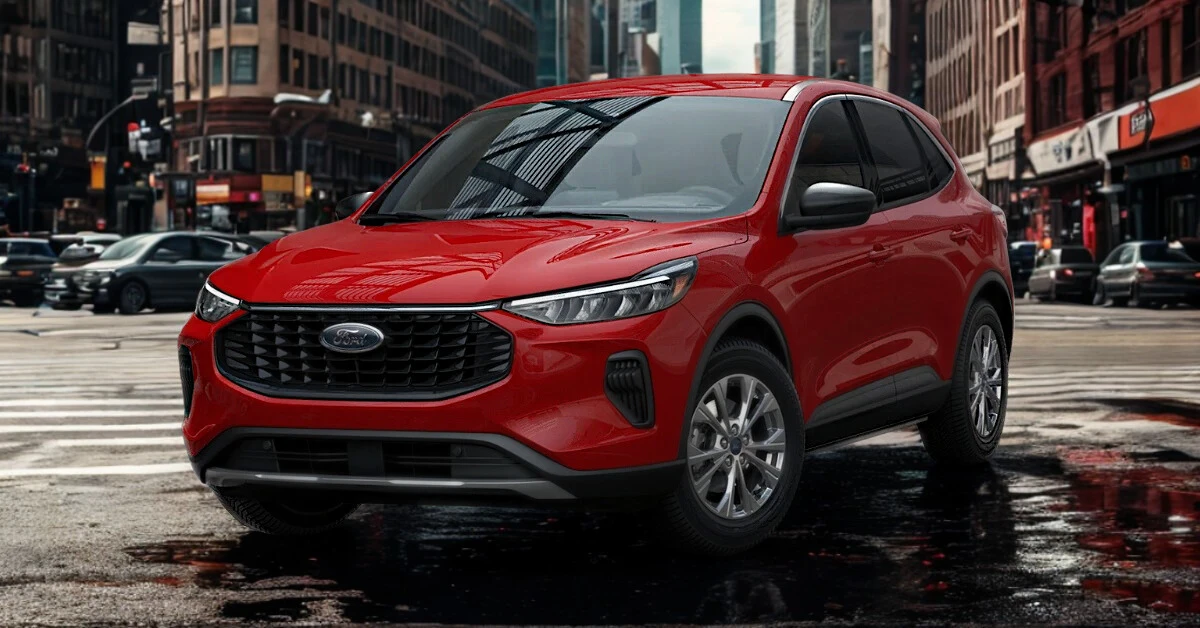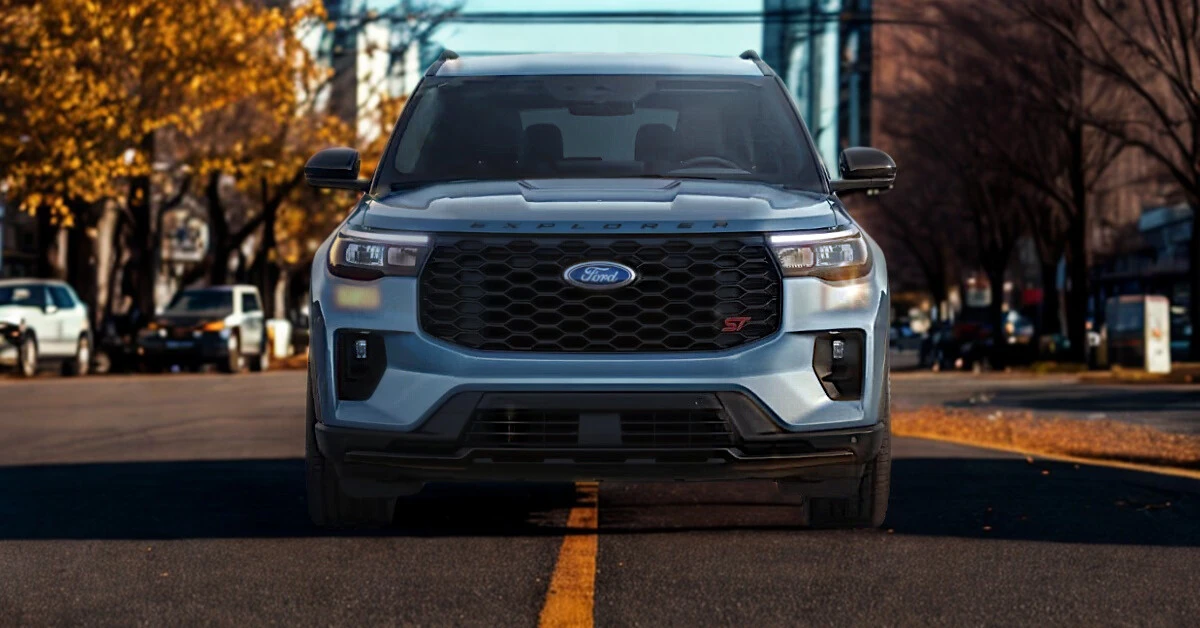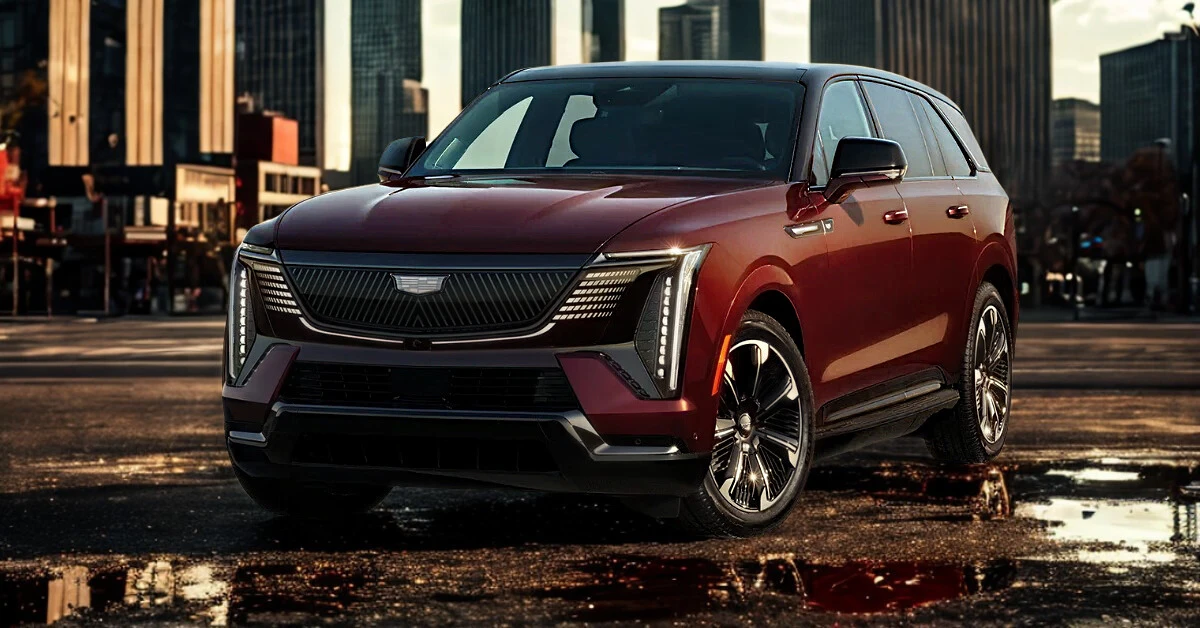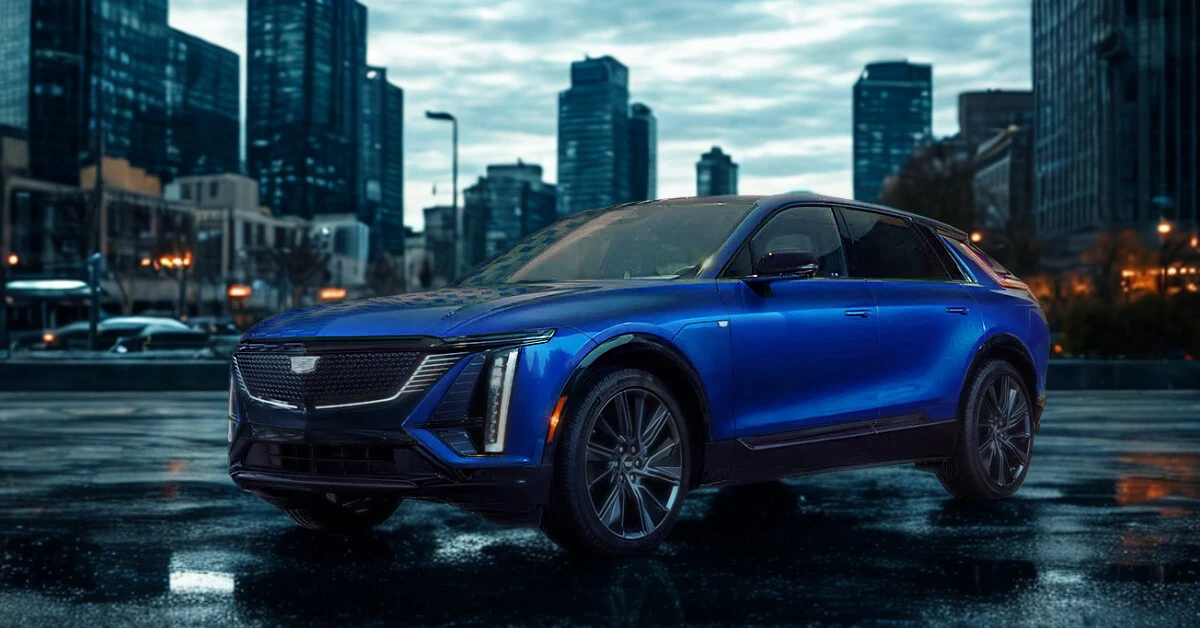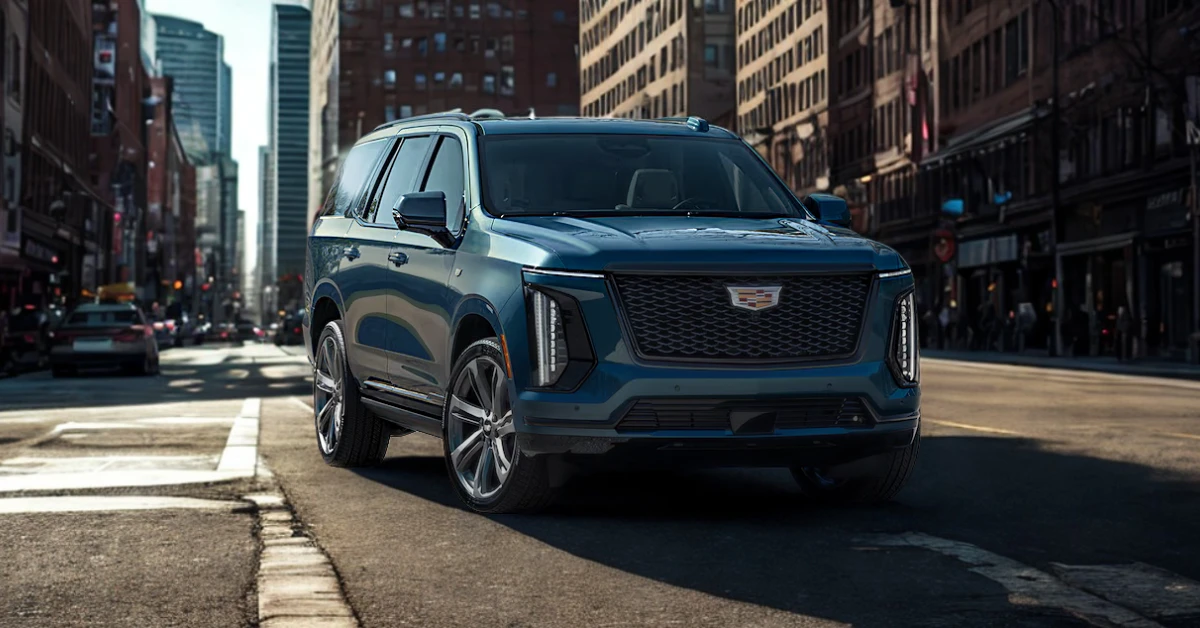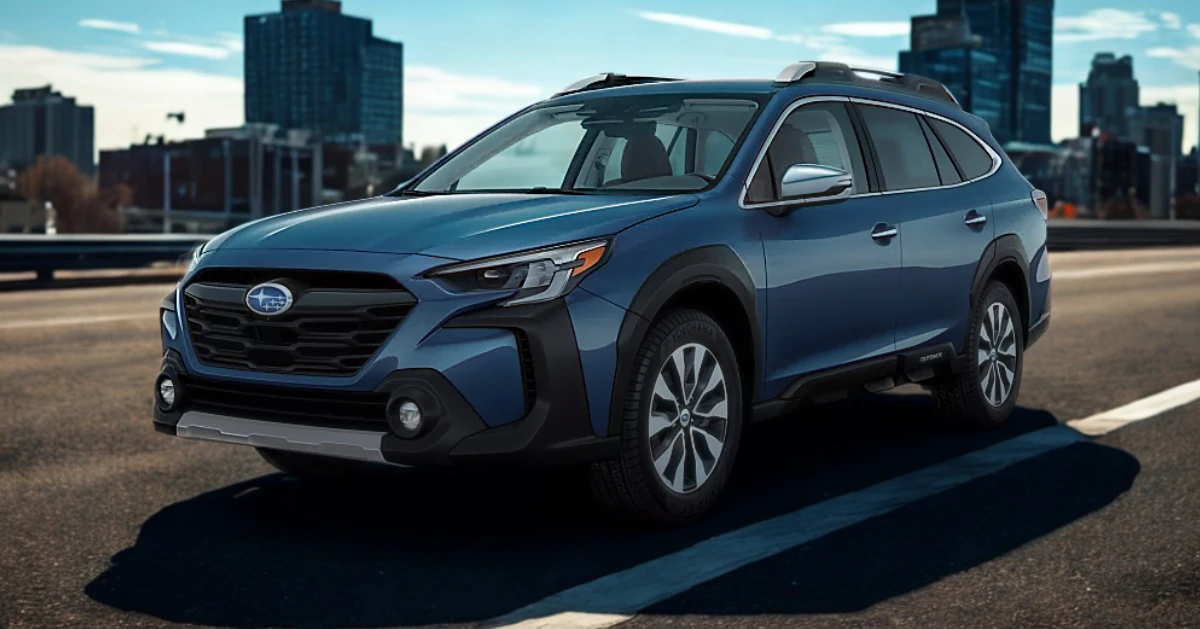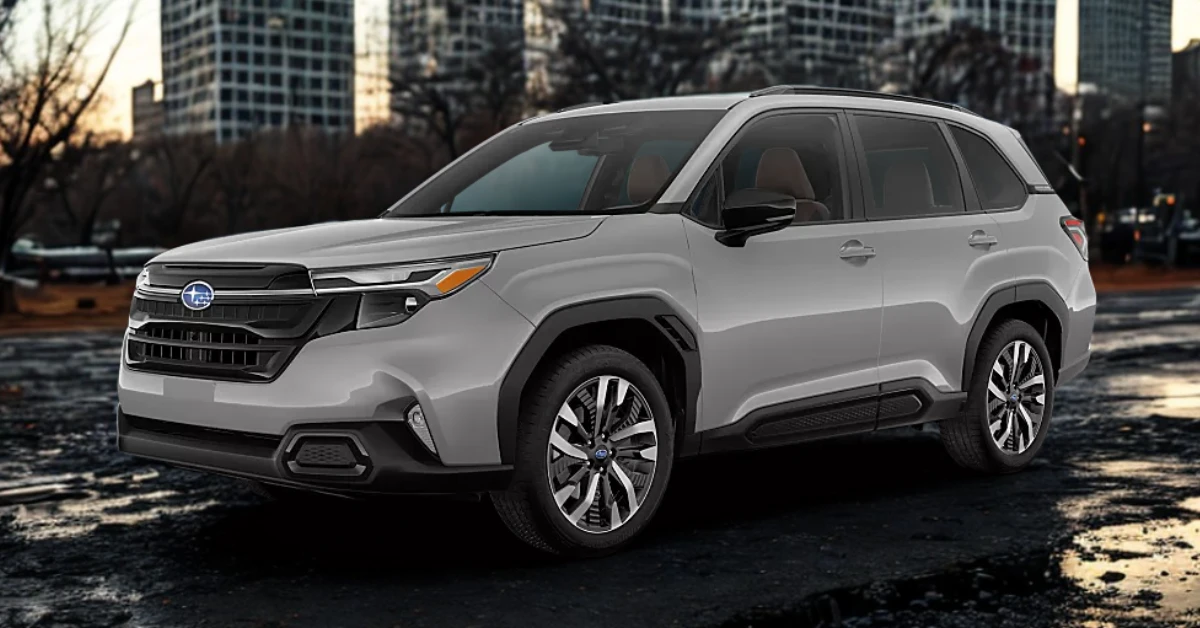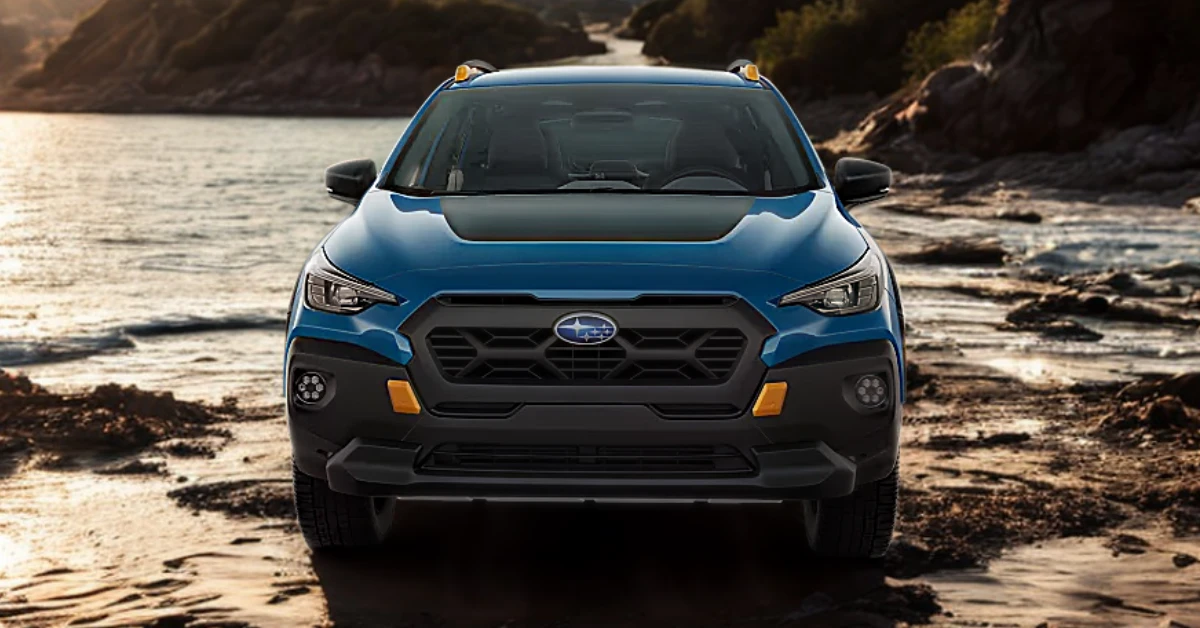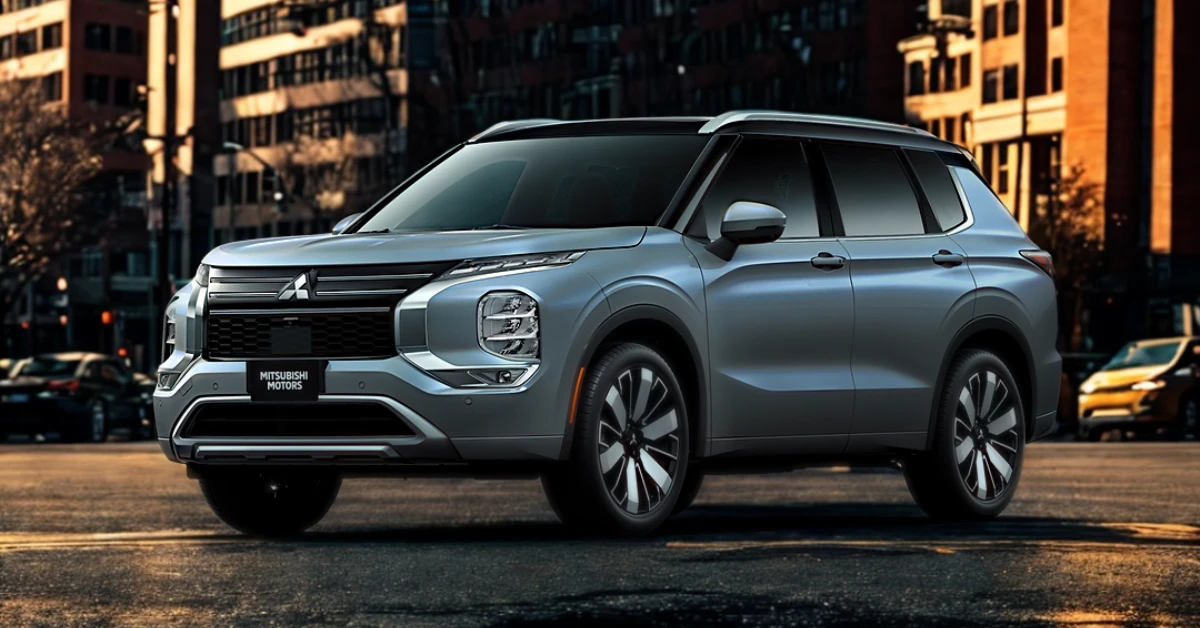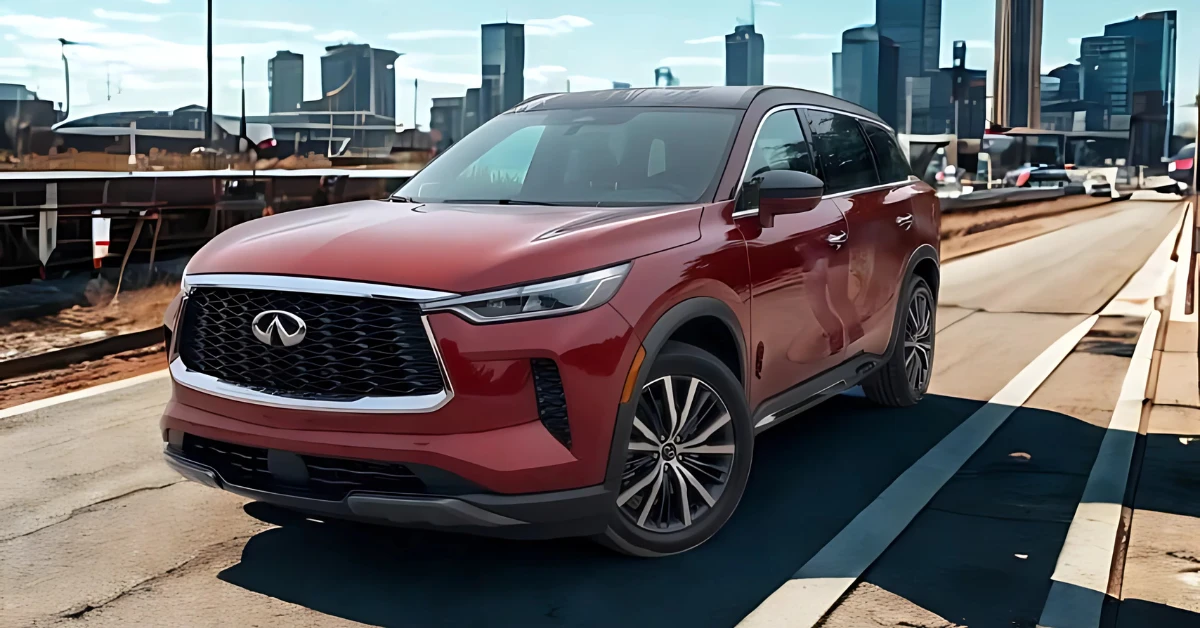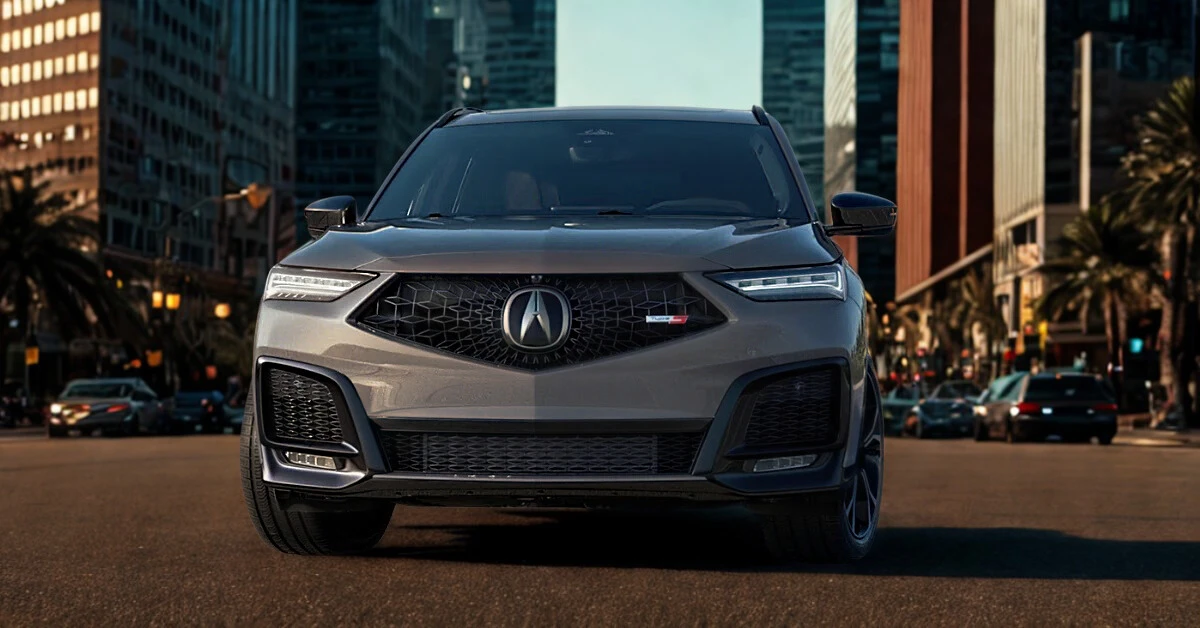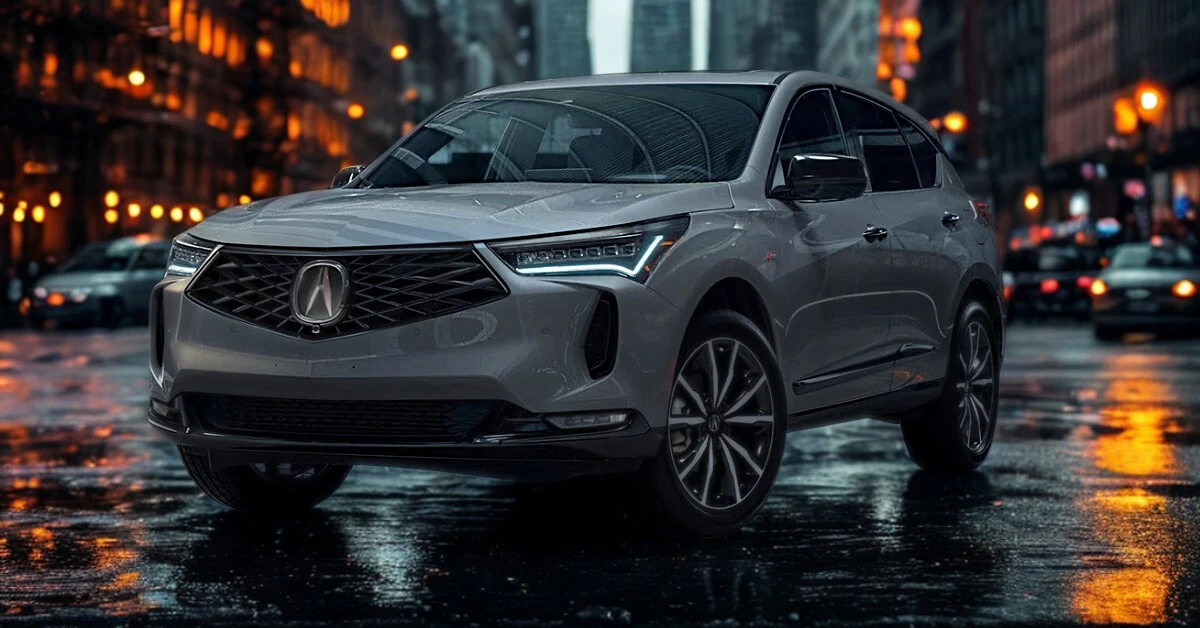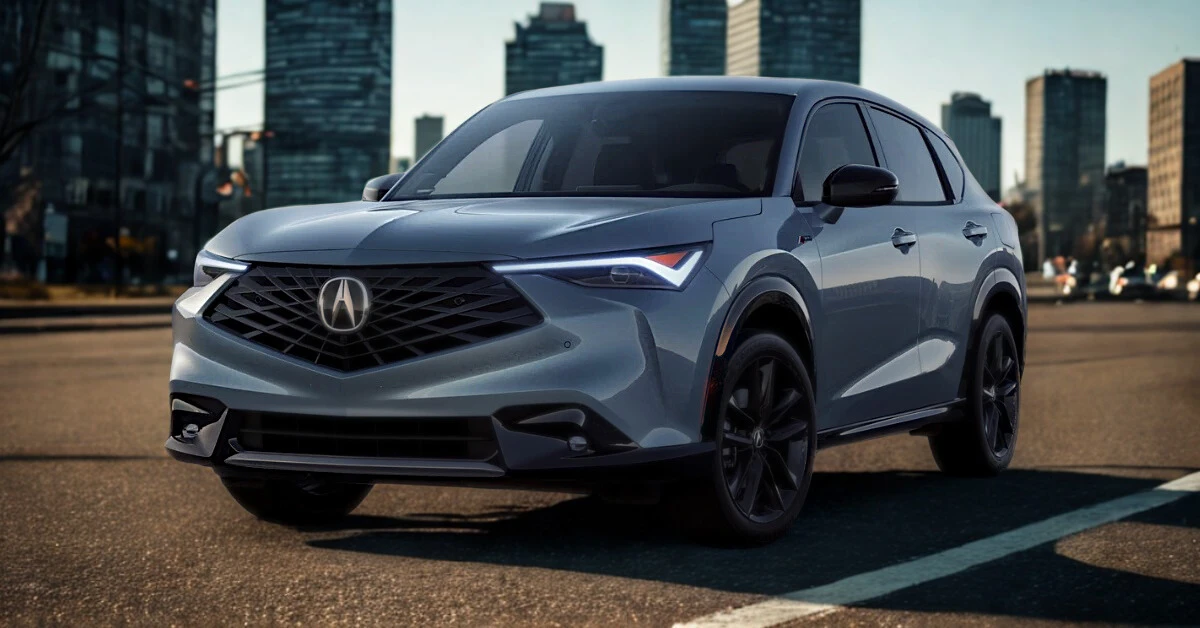2025 Honda HR-V Specifications
- POWERTRAINS
- TRIMS
- COLORS
- DIMENSIONS
| Specification | HR-V LX 2WD | HR-V Sport 2WD | HR-V EX-L 2WD | HR-V LX AWD | HR-V Sport AWD | HR-V EX-L AWD |
|---|---|---|---|---|---|---|
| Base Price | $26,795 | $28,895 | $30,895 | $28,295 | $30,395 | $32,395 |
| Engine Type | Regular Unleaded I-4 | Regular Unleaded I-4 | Regular Unleaded I-4 | Regular Unleaded I-4 | Regular Unleaded I-4 | Regular Unleaded I-4 |
| Displacement | 2.0L/122 cu. in. | 2.0L/122 cu. in. | 2.0L/122 cu. in. | 2.0L/122 cu. in. | 2.0L/122 cu. in. | 2.0L/122 cu. in. |
| Fuel System | Gasoline Direct Injection | Gasoline Direct Injection | Gasoline Direct Injection | Gasoline Direct Injection | Gasoline Direct Injection | Gasoline Direct Injection |
| Horsepower | 158 @ 6500 rpm | 158 @ 6500 rpm | 158 @ 6500 rpm | 158 @ 6500 rpm | 158 @ 6500 rpm | 158 @ 6500 rpm |
| Torque | 138 lb-ft @ 4200 rpm | 138 lb-ft @ 4200 rpm | 138 lb-ft @ 4200 rpm | 138 lb-ft @ 4200 rpm | 138 lb-ft @ 4200 rpm | 138 lb-ft @ 4200 rpm |
| Transmission | CVT w/OD | CVT w/OD | CVT w/OD | CVT w/OD | CVT w/OD | CVT w/OD |
| Drive Type | Front-Wheel Drive | Front-Wheel Drive | Front-Wheel Drive | All-Wheel Drive | All-Wheel Drive | All-Wheel Drive |
| Fuel Economy (city/hwy/combined) | 26/32/28 mpg | 26/32/28 mpg | 26/32/28 mpg | 25/30/27 mpg | 25/30/27 mpg | 25/30/27 mpg |
| Fuel Tank Capacity | 14.0 gal. | 14.0 gal. | 14.0 gal. | 14.0 gal. | 14.0 gal. | 14.0 gal. |
| Range (city/hwy) | 364/448 miles | 364/448 miles | 364/448 miles | 350/420 miles | 350/420 miles | 350/420 miles |
| CO2 Emissions (15K mi/year) | 6.2 tons | 6.2 tons | 6.2 tons | 6.5 tons | 6.5 tons | 6.5 tons |
| Curb Weight | 3,159 lbs | 3,197 lbs | 3,219 lbs | 3,276 lbs | 3,311 lbs | 3,333 lbs |
| Suspension Type (F/R) | Strut / Multi-Link | Strut / Multi-Link | Strut / Multi-Link | Strut / Multi-Link | Strut / Multi-Link | Strut / Multi-Link |
| Notable Features | Hill Descent Control, Hill Hold Control, Electric Parking Brake | Remote Engine Start, Heated Front Seats, Blind Spot Monitor | Sunroof, Navigation, Leather Seats, 8-way Power Driver Seat | Hill Descent Control, Hill Hold Control, Electric Parking Brake | Remote Engine Start, Heated Front Seats, Blind Spot Monitor | Sunroof, Navigation, Leather Seats, 8-way Power Driver Seat |
Interior Features
| Feature | HR-V LX 2WD | HR-V Sport 2WD | HR-V EX-L 2WD | HR-V LX AWD | HR-V Sport AWD | HR-V EX-L AWD |
|---|---|---|---|---|---|---|
| Seating Capacity | 5 | 5 | 5 | 5 | 5 | 5 |
| Seating Material | Cloth | Cloth | Leather-Trimmed | Cloth | Cloth | Leather-Trimmed |
| Front Seats | Manual Adjustable | Heated, Manual Adjustable | Heated, 8-way Power Driver | Manual Adjustable | Heated, Manual Adjustable | Heated, 8-way Power Driver |
| Driver Seat | 6-Way Manual w/Height Adjustment | 6-Way Manual w/Height Adjustment | 8-Way Power | 6-Way Manual w/Height Adjustment | 6-Way Manual w/Height Adjustment | 8-Way Power |
| Passenger Seat | 4-Way Manual | 4-Way Manual | 4-Way Manual | 4-Way Manual | 4-Way Manual | 4-Way Manual |
| Rear Seats | 60-40 Folding Bench | 60-40 Folding Bench | 60-40 Folding Bench | 60-40 Folding Bench | 60-40 Folding Bench | 60-40 Folding Bench |
| Steering Wheel | Urethane | Leather | Leather | Urethane | Leather | Leather |
| Heated Steering Wheel | Not Standard | Not Standard | Not Standard | Not Standard | Not Standard | Not Standard |
| Tilt/Telescoping Steering | Manual | Manual | Manual | Manual | Manual | Manual |
| Climate Control | Automatic Air Conditioning | Automatic Air Conditioning | Dual Zone Automatic | Automatic Air Conditioning | Automatic Air Conditioning | Dual Zone Automatic |
| Remote Engine Start | Not Standard | Standard | Standard | Not Standard | Standard | Standard |
Technology
| Feature | HR-V LX 2WD | HR-V Sport 2WD | HR-V EX-L 2WD | HR-V LX AWD | HR-V Sport AWD | HR-V EX-L AWD |
|---|---|---|---|---|---|---|
| Touchscreen | 7″ Color | 7″ Color | 9″ Color | 7″ Color | 7″ Color | 9″ Color |
| Audio System | 180-Watt w/4 Speakers | 180-Watt w/6 Speakers | 180-Watt w/8 Speakers | 180-Watt w/4 Speakers | 180-Watt w/6 Speakers | 180-Watt w/8 Speakers |
| Apple CarPlay/Android Auto | Standard | Standard | Wireless | Standard | Standard | Wireless |
| Bluetooth | Standard | Standard | Standard | Standard | Standard | Standard |
| HD Radio | Not Standard | Not Standard | Standard | Not Standard | Not Standard | Standard |
| SiriusXM | Not Standard | Not Standard | Standard | Not Standard | Not Standard | Standard |
| USB Ports | 1 USB-A (2.5-amp) | 1 USB-A (2.5-amp) | 1 USB-A (2.5-amp) | 1 USB-A (2.5-amp) | 1 USB-A (2.5-amp) | 1 USB-A (2.5-amp) |
| Navigation | Not Standard | Not Standard | Standard | Not Standard | Not Standard | Standard |
| Wi-Fi Hotspot Capability | Standard (HondaLink) | Standard (HondaLink) | Standard (HondaLink) | Standard (HondaLink) | Standard (HondaLink) | Standard (HondaLink) |
| Wireless Phone Charger | Not Standard | Not Standard | Standard | Not Standard | Not Standard | Standard |
Safety & Driver Assistance
| Feature | HR-V LX 2WD | HR-V Sport 2WD | HR-V EX-L 2WD | HR-V LX AWD | HR-V Sport AWD | HR-V EX-L AWD |
|---|---|---|---|---|---|---|
| Forward Collision Warning | Standard | Standard | Standard | Standard | Standard | Standard |
| Collision Mitigation Braking | Standard | Standard | Standard | Standard | Standard | Standard |
| Lane Departure Warning | Standard | Standard | Standard | Standard | Standard | Standard |
| Lane Keeping Assist | Standard | Standard | Standard | Standard | Standard | Standard |
| Road Departure Mitigation | Standard | Standard | Standard | Standard | Standard | Standard |
| Adaptive Cruise Control | W/Traffic Stop-Go | W/Traffic Stop-Go | W/Traffic Stop-Go | W/Traffic Stop-Go | W/Traffic Stop-Go | W/Traffic Stop-Go |
| Traffic Jam Assist | Standard | Standard | Standard | Standard | Standard | Standard |
| Blind Spot Information | Not Standard | Standard | Standard | Not Standard | Standard | Standard |
| Cross Traffic Monitor | Not Standard | Standard | Standard | Not Standard | Standard | Standard |
| Low Speed Braking Control | Not Standard | Not Standard | Standard | Not Standard | Not Standard | Standard |
| Front/Rear Parking Sensors | Not Standard | Not Standard | Standard | Not Standard | Not Standard | Standard |
| Back-Up Camera | Standard | Standard | Standard | Standard | Standard | Standard |
| Airbags | Front, Side, Knee & Curtain | Front, Side, Knee & Curtain | Front, Side, Knee & Curtain | Front, Side, Knee & Curtain | Front, Side, Knee & Curtain | Front, Side, Knee & Curtain |
Exterior Features
| Feature | HR-V LX 2WD | HR-V Sport 2WD | HR-V EX-L 2WD | HR-V LX AWD | HR-V Sport AWD | HR-V EX-L AWD |
|---|---|---|---|---|---|---|
| Sunroof | Not Standard | Not Standard | Express Open/Close Sliding/Tilting w/Sunshade | Not Standard | Not Standard | Express Open/Close Sliding/Tilting w/Sunshade |
| Headlights | Auto On/Off LED | Auto On/Off LED | Auto On/Off LED | Auto On/Off LED | Auto On/Off LED | Auto On/Off LED |
| Auto High-Beam | Standard | Standard | Standard | Standard | Standard | Standard |
| Side Mirrors | Body-Colored, Power | Black, Power, Heated w/Turn Signal | Body-Colored, Power, Heated w/Turn Signal | Body-Colored, Power | Black, Power, Heated w/Turn Signal | Body-Colored, Power, Heated w/Turn Signal |
| Side Windows Trim | Black | Black | Black | Black | Black | Black |
| Roof Rails | Not Standard | Not Standard | Not Standard | Not Standard | Not Standard | Not Standard |
| Liftgate/Tailgate | Manual | Manual | Manual | Manual | Manual | Manual |
| Exhaust | Single Stainless Steel | Single Stainless Steel w/Chrome Tailpipe Finisher | Single Stainless Steel | Single Stainless Steel | Single Stainless Steel w/Chrome Tailpipe Finisher | Single Stainless Steel |
| Wipers | Variable Intermittent | Variable Intermittent | Variable Intermittent | Variable Intermittent | Variable Intermittent | Variable Intermittent |
| Window Tint | Light Tinted | Deep Tinted | Deep Tinted | Light Tinted | Deep Tinted | Deep Tinted |
| Door Handles | Body-Colored | Body-Colored | Body-Colored | Body-Colored | Body-Colored | Body-Colored |
Suspension & Chassis
| Feature | HR-V LX 2WD | HR-V Sport 2WD | HR-V EX-L 2WD | HR-V LX AWD | HR-V Sport AWD | HR-V EX-L AWD |
|---|---|---|---|---|---|---|
| Front Suspension | Strut | Strut | Strut | Strut | Strut | Strut |
| Rear Suspension | Multi-Link | Multi-Link | Multi-Link | Multi-Link | Multi-Link | Multi-Link |
| Front Anti-Roll Bar | Standard | Standard | Standard | Standard | Standard | Standard |
| Rear Anti-Roll Bar | Standard | Standard | Standard | Standard | Standard | Standard |
| Steering Type | Electric Power-Assist Speed-Sensing | Electric Power-Assist Speed-Sensing | Electric Power-Assist Speed-Sensing | Electric Power-Assist Speed-Sensing | Electric Power-Assist Speed-Sensing | Electric Power-Assist Speed-Sensing |
| Turning Diameter | 35.1 ft. | 37.1 ft. | 35.1 ft. | 35.1 ft. | 37.1 ft. | 35.1 ft. |
| Brake Type | 4-Wheel Disc w/ABS | 4-Wheel Disc w/ABS | 4-Wheel Disc w/ABS | 4-Wheel Disc w/ABS | 4-Wheel Disc w/ABS | 4-Wheel Disc w/ABS |
| Front Brake Rotors | 12.3 in. | 12.3 in. | 12.3 in. | 12.3 in. | 12.3 in. | 12.3 in. |
| Rear Brake Rotors | 12.2 in. | 12.2 in. | 12.2 in. | 12.2 in. | 12.2 in. | 12.2 in. |
| Electronic Parking Brake | Standard | Standard | Standard | Standard | Standard | Standard |
| Brake Assist | Standard | Standard | Standard | Standard | Standard | Standard |
| Hill Descent Control | Standard | Standard | Standard | Standard | Standard | Standard |
| Hill Hold Control | Standard | Standard | Standard | Standard | Standard | Standard |
Off-Road Capability
| Feature | HR-V LX 2WD | HR-V Sport 2WD | HR-V EX-L 2WD | HR-V LX AWD | HR-V Sport AWD | HR-V EX-L AWD |
|---|---|---|---|---|---|---|
| Drive Mode Selector | Econ, Normal, Snow | Econ, Normal, Snow | Econ, Normal, Snow | Econ, Normal, Snow | Econ, Normal, Snow | Econ, Normal, Snow |
| Hill Descent Control | Standard | Standard | Standard | Standard | Standard | Standard |
| AWD System | Not Available | Not Available | Not Available | Real Time AWD | Real Time AWD | Real Time AWD |
| Ground Clearance (approx.) | 7.3 in. (est.) | 7.3 in. (est.) | 7.3 in. (est.) | 7.3 in. (est.) | 7.3 in. (est.) | 7.3 in. (est.) |
Wheels & Tires
| Feature | HR-V LX 2WD | HR-V Sport 2WD | HR-V EX-L 2WD | HR-V LX AWD | HR-V Sport AWD | HR-V EX-L AWD |
|---|---|---|---|---|---|---|
| Wheels | 17″ x 7.5″ Aluminum | 18″ x 7.5″ Aluminum | 17″ x 7.5″ Aluminum | 17″ x 7.5″ Aluminum | 18″ x 7.5″ Aluminum | 17″ x 7.5″ Aluminum |
| Wheel Finish | Silver Painted | Gloss Black | Machine-Finished w/Gloss Shark Gray Inserts | Silver Painted | Gloss Black | Machine-Finished w/Gloss Shark Gray Inserts |
| Tires | P215/60HR17 | P225/55HR18 | P215/60HR17 | P215/60HR17 | P225/55HR18 | P215/60HR17 |
| Spare Tire Type | Compact | Compact | Compact | Compact | Compact | Compact |
| Spare Wheel Material | Steel | Steel | Steel | Steel | Steel | Steel |
Cargo Capacity
| Feature | HR-V LX 2WD | HR-V Sport 2WD | HR-V EX-L 2WD | HR-V LX AWD | HR-V Sport AWD | HR-V EX-L AWD |
|---|---|---|---|---|---|---|
| Cargo Space Behind 2nd Row | 24.4 cu. ft. | 24.4 cu. ft. | 24.4 cu. ft. | 24.4 cu. ft. | 24.4 cu. ft. | 24.4 cu. ft. |
| Cargo Space Behind 1st Row | 55.1 cu. ft. | 55.1 cu. ft. | 55.1 cu. ft. | 55.1 cu. ft. | 55.1 cu. ft. | 55.1 cu. ft. |
| Passenger Volume | 98.7 cu. ft. | 98.7 cu. ft. | 97.3 cu. ft. | 98.7 cu. ft. | 98.7 cu. ft. | 97.3 cu. ft. |
| Total Interior Volume | 123.1 cu. ft. | 123.1 cu. ft. | 121.7 cu. ft. | 123.1 cu. ft. | 123.1 cu. ft. | 121.7 cu. ft. |
Convenience Features
| Feature | HR-V LX 2WD | HR-V Sport 2WD | HR-V EX-L 2WD | HR-V LX AWD | HR-V Sport AWD | HR-V EX-L AWD |
|---|---|---|---|---|---|---|
| Proximity Key Entry | Standard | Standard | Standard | Standard | Standard | Standard |
| Push Button Start | Standard | Standard | Standard | Standard | Standard | Standard |
| Power Windows | Standard w/Driver 1-Touch Up/Down | Standard w/Driver & Passenger 1-Touch Up/Down | Standard w/Driver & Passenger 1-Touch Up/Down | Standard w/Driver 1-Touch Up/Down | Standard w/Driver & Passenger 1-Touch Up/Down | Standard w/Driver & Passenger 1-Touch Up/Down |
| Power Door Locks | Standard w/Autolock | Standard w/Autolock | Standard w/Autolock | Standard w/Autolock | Standard w/Autolock | Standard w/Autolock |
| Auto-Dimming Rearview Mirror | Not Standard | Not Standard | Standard | Not Standard | Not Standard | Standard |
| 12V Power Outlets | 1 | 1 | 1 | 1 | 1 | 1 |
| Driver Information Center | Standard | Standard | Standard | Standard | Standard | Standard |
| Outside Temp Display | Standard | Standard | Standard | Standard | Standard | Standard |
| Trip Computer | Standard | Standard | Standard | Standard | Standard | Standard |
Warranty & Coverage
| Feature | HR-V LX 2WD | HR-V Sport 2WD | HR-V EX-L 2WD | HR-V LX AWD | HR-V Sport AWD | HR-V EX-L AWD |
|---|---|---|---|---|---|---|
| Basic Warranty | 3 years/36,000 miles | 3 years/36,000 miles | 3 years/36,000 miles | 3 years/36,000 miles | 3 years/36,000 miles | 3 years/36,000 miles |
| Powertrain Warranty | 5 years/60,000 miles | 5 years/60,000 miles | 5 years/60,000 miles | 5 years/60,000 miles | 5 years/60,000 miles | 5 years/60,000 miles |
| Corrosion Warranty | 5 years/Unlimited miles | 5 years/Unlimited miles | 5 years/Unlimited miles | 5 years/Unlimited miles | 5 years/Unlimited miles | 5 years/Unlimited miles |
| Roadside Assistance | 3 years/36,000 miles | 3 years/36,000 miles | 3 years/36,000 miles | 3 years/36,000 miles | 3 years/36,000 miles | 3 years/36,000 miles |
| Maintenance | 1 year/12,000 miles | 1 year/12,000 miles | 1 year/12,000 miles | 1 year/12,000 miles | 1 year/12,000 miles | 1 year/12,000 miles |
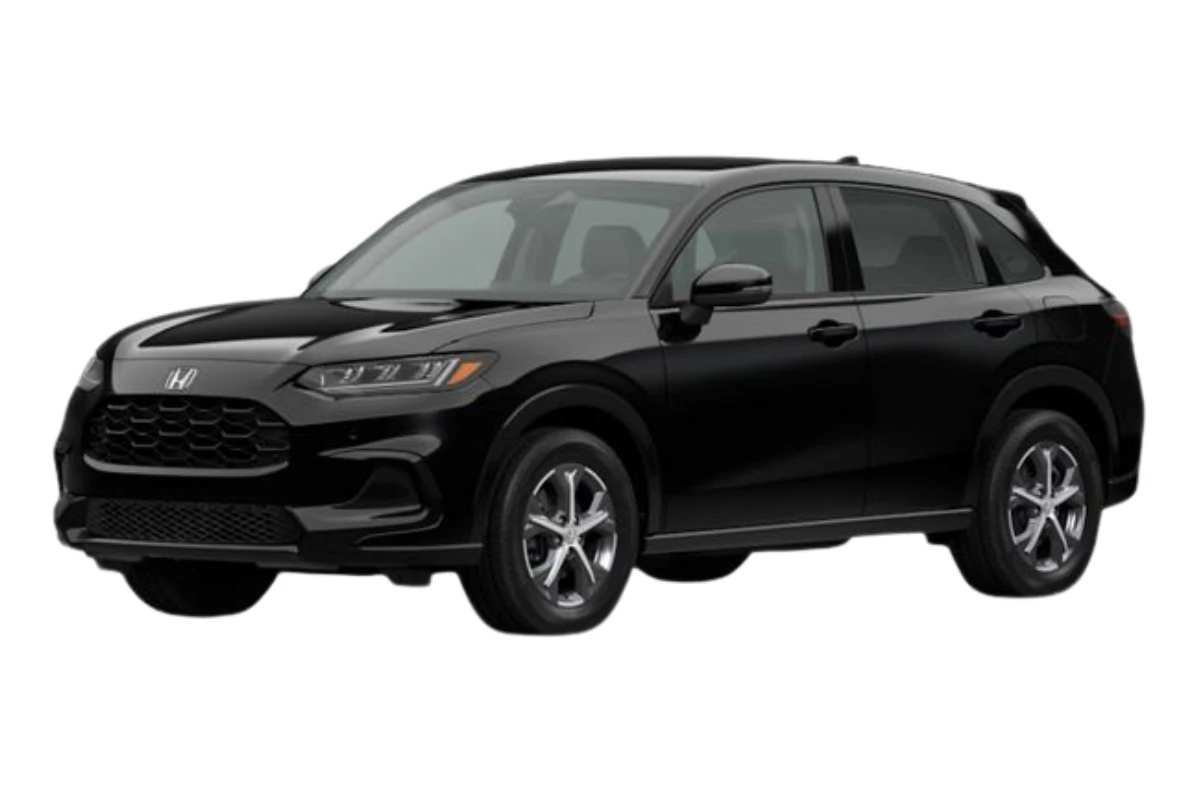
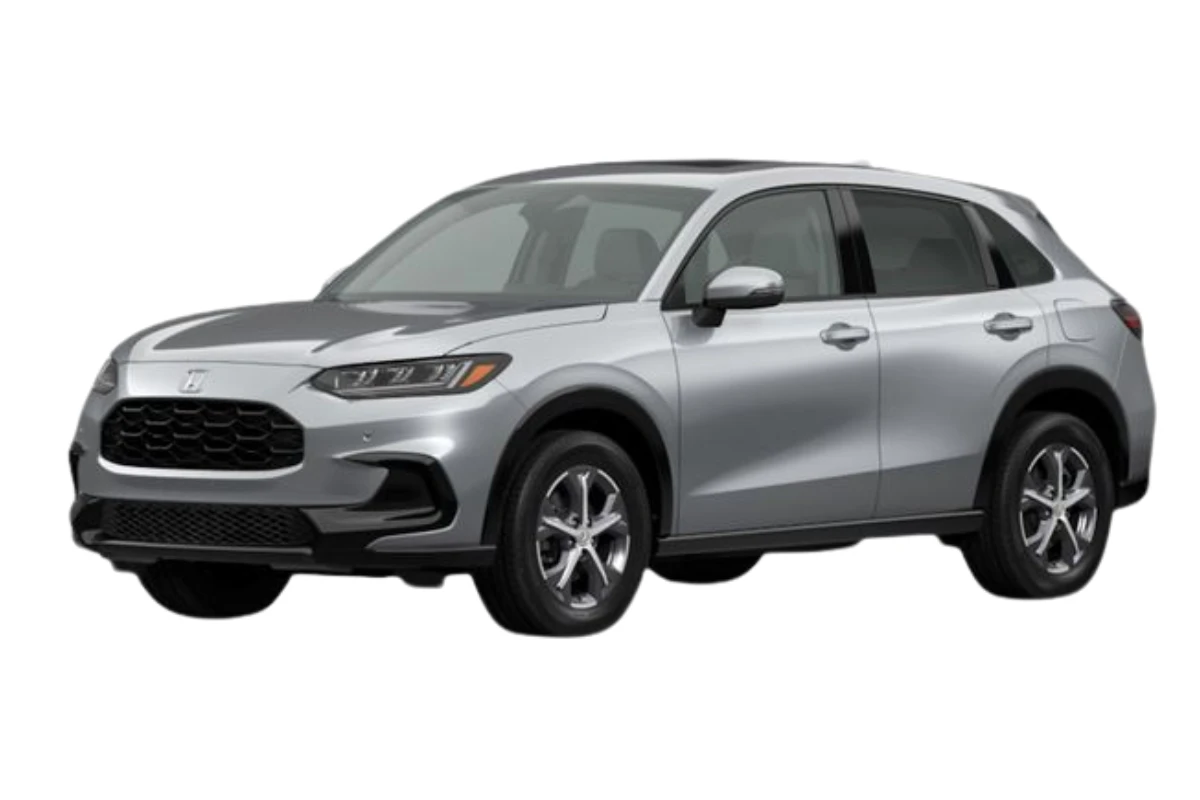
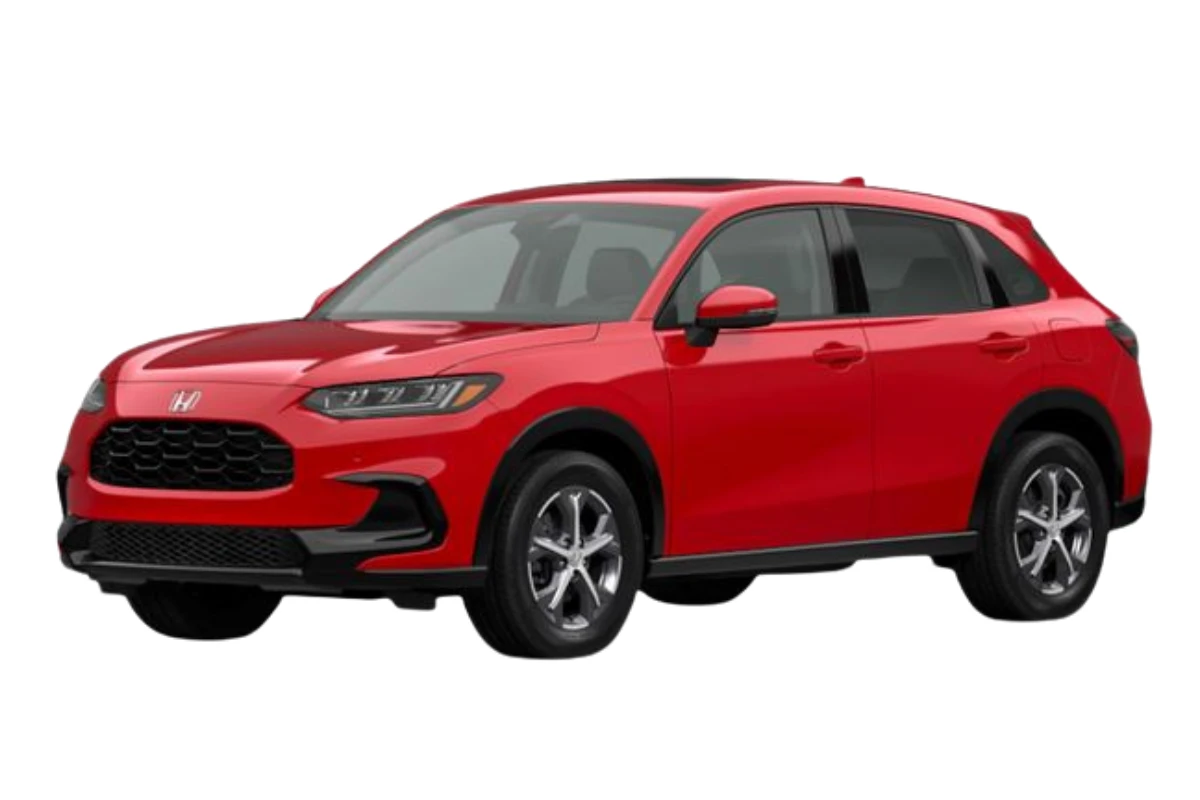

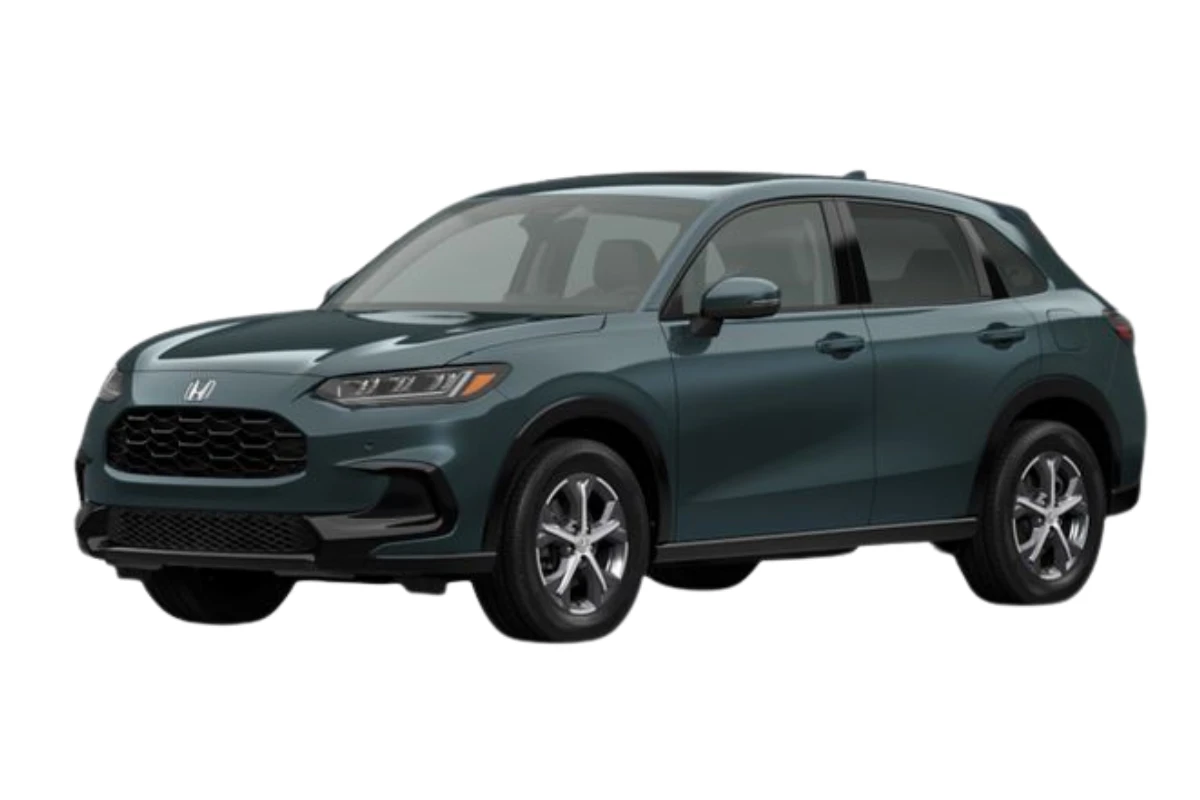
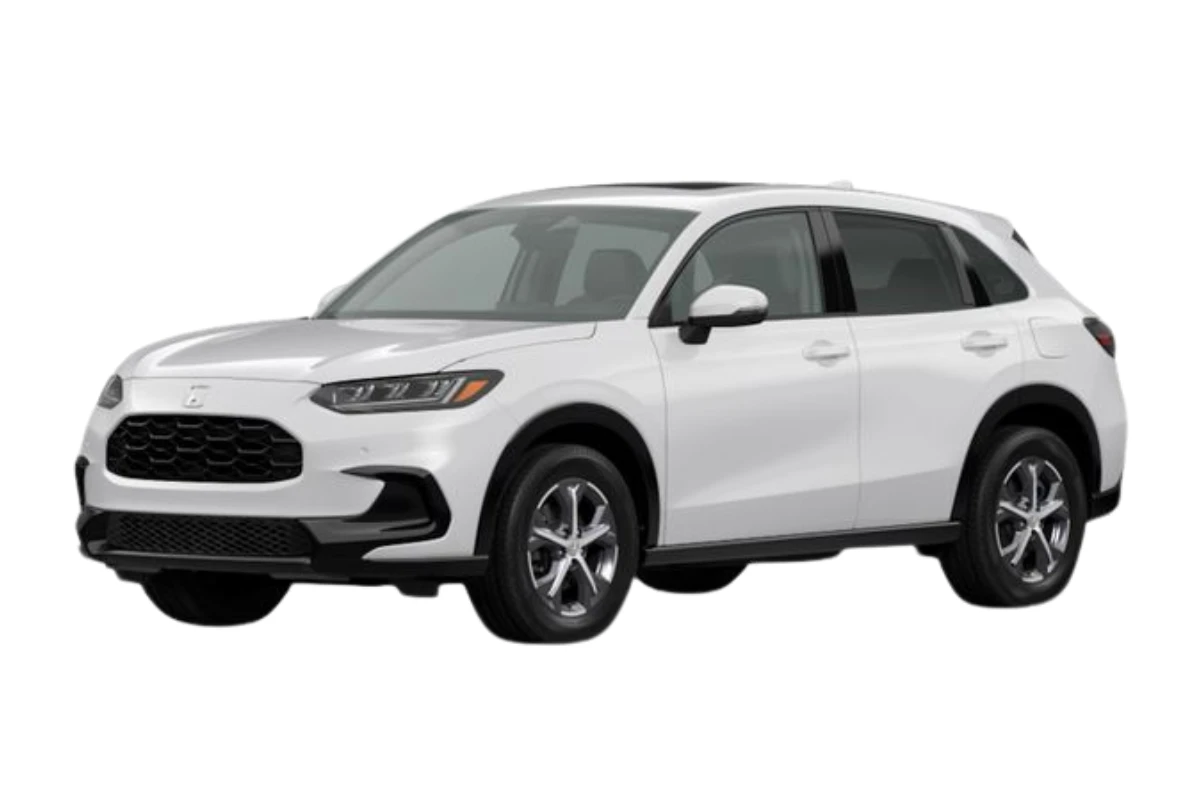
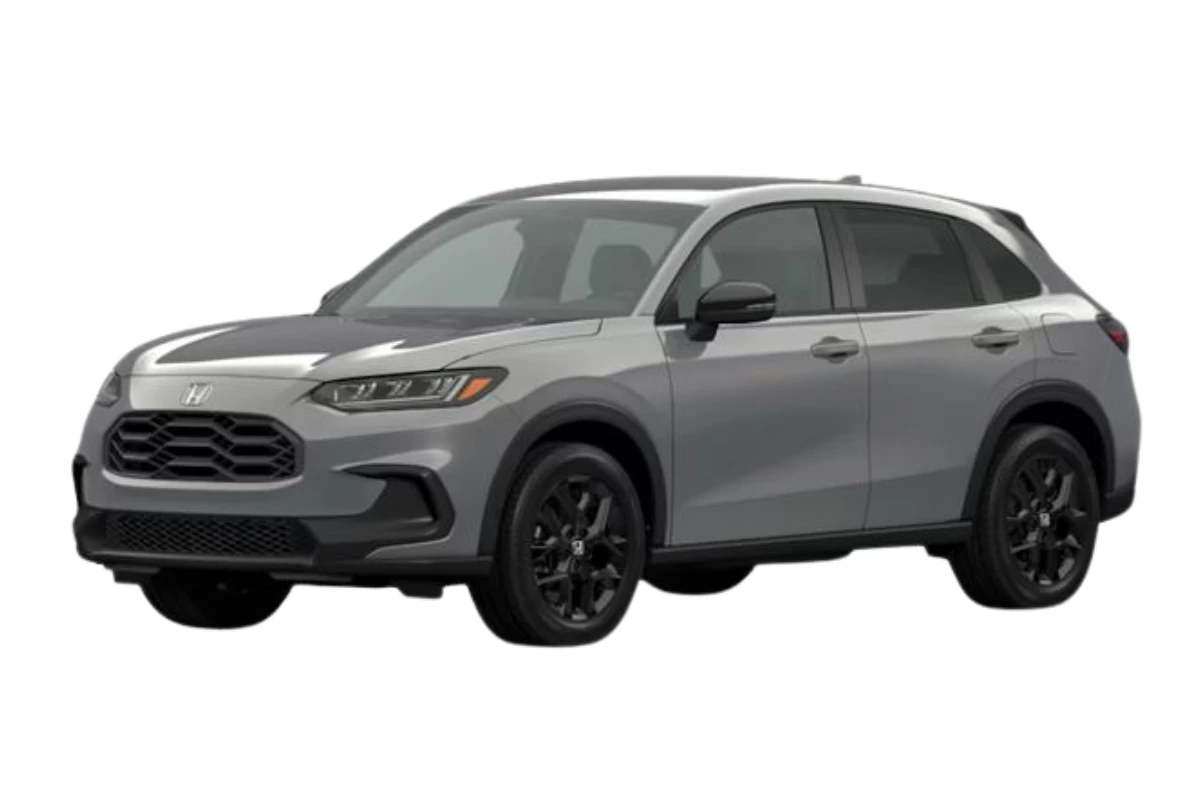
Exterior Dimensions
| Dimension | HR-V LX 2WD | HR-V Sport 2WD | HR-V EX-L 2WD | HR-V LX AWD | HR-V Sport AWD | HR-V EX-L AWD |
|---|---|---|---|---|---|---|
| Base Price | $26,795 | $28,895 | $30,895 | $28,295 | $30,395 | $32,395 |
| Wheelbase | 104.5 in | 104.5 in | 104.5 in | 104.5 in | 104.5 in | 104.5 in |
| Overall Length | 179.8 in | 179.8 in | 179.8 in | 179.8 in | 179.8 in | 179.8 in |
| Overall Width (without mirrors) | 72.4 in | 72.4 in | 72.4 in | 72.4 in | 72.4 in | 72.4 in |
| Overall Height | 63.4 in | 63.8 in | 63.4 in | 63.4 in | 63.8 in | 63.4 in |
| Front Track Width | 62.6 in | 62.6 in | 62.6 in | 62.6 in | 62.6 in | 62.6 in |
| Rear Track Width | 63.2 in | 63.2 in | 63.2 in | 63.2 in | 63.2 in | 63.2 in |
| Minimum Ground Clearance | Not Specified | Not Specified | Not Specified | Not Specified | Not Specified | Not Specified |
| Turning Diameter (curb to curb) | 35.1 ft | 37.1 ft | 35.1 ft | 35.1 ft | 37.1 ft | 35.1 ft |
Interior Dimensions
| Dimension | HR-V LX 2WD | HR-V Sport 2WD | HR-V EX-L 2WD | HR-V LX AWD | HR-V Sport AWD | HR-V EX-L AWD |
|---|---|---|---|---|---|---|
| Passenger Capacity | 5 | 5 | 5 | 5 | 5 | 5 |
| Total Passenger Volume | 98.7 cu ft | 98.7 cu ft | 97.3 cu ft | 98.7 cu ft | 98.7 cu ft | 97.3 cu ft |
| Front Head Room | 39.4 in | 39.4 in | 38.4 in | 39.4 in | 39.4 in | 38.4 in |
| Front Leg Room | 41.9 in | 41.9 in | 41.9 in | 41.9 in | 41.9 in | 41.9 in |
| Front Shoulder Room | 56.6 in | 56.6 in | 56.6 in | 56.6 in | 56.6 in | 56.6 in |
| Front Hip Room | 54.0 in | 54.0 in | 54.0 in | 54.0 in | 54.0 in | 54.0 in |
| Rear Head Room | 38.0 in | 38.0 in | 38.0 in | 38.0 in | 38.0 in | 38.0 in |
| Rear Leg Room | 37.7 in | 37.7 in | 37.7 in | 37.7 in | 37.7 in | 37.7 in |
| Rear Shoulder Room | 55.2 in | 55.2 in | 55.2 in | 55.2 in | 55.2 in | 55.2 in |
| Rear Hip Room | 47.4 in | 47.4 in | 47.4 in | 47.4 in | 47.4 in | 47.4 in |
Cargo Dimensions
| Dimension | HR-V LX 2WD | HR-V Sport 2WD | HR-V EX-L 2WD | HR-V LX AWD | HR-V Sport AWD | HR-V EX-L AWD |
|---|---|---|---|---|---|---|
| Cargo Space Behind Second Row | 24.4 cu ft | 24.4 cu ft | 24.4 cu ft | 24.4 cu ft | 24.4 cu ft | 24.4 cu ft |
| Cargo Space Behind First Row | 55.1 cu ft | 55.1 cu ft | 55.1 cu ft | 55.1 cu ft | 55.1 cu ft | 55.1 cu ft |
| Total Interior Volume | 123.1 cu ft | 123.1 cu ft | 121.7 cu ft | 123.1 cu ft | 123.1 cu ft | 121.7 cu ft |
Weight & Capacity
| Dimension | HR-V LX 2WD | HR-V Sport 2WD | HR-V EX-L 2WD | HR-V LX AWD | HR-V Sport AWD | HR-V EX-L AWD |
|---|---|---|---|---|---|---|
| Base Curb Weight | 3,159 lbs | 3,197 lbs | 3,219 lbs | 3,276 lbs | 3,311 lbs | 3,333 lbs |
| Fuel Tank Capacity | 14.0 gal | 14.0 gal | 14.0 gal | 14.0 gal | 14.0 gal | 14.0 gal |
| Maximum Payload Capacity | Not Specified | Not Specified | Not Specified | Not Specified | Not Specified | Not Specified |
| EPA Classification | Small Station Wagons | Small Station Wagons | Small Station Wagons | Small Station Wagons | Small Station Wagons | Small Station Wagons |
Wheels & Tires
| Dimension | HR-V LX 2WD | HR-V Sport 2WD | HR-V EX-L 2WD | HR-V LX AWD | HR-V Sport AWD | HR-V EX-L AWD |
|---|---|---|---|---|---|---|
| Front Wheel Size | 17 x 7.5 in | 18 x 7.5 in | 17 x 7.5 in | 17 x 7.5 in | 18 x 7.5 in | 17 x 7.5 in |
| Rear Wheel Size | 17 x 7.5 in | 18 x 7.5 in | 17 x 7.5 in | 17 x 7.5 in | 18 x 7.5 in | 17 x 7.5 in |
| Wheel Material | Aluminum | Aluminum | Aluminum | Aluminum | Aluminum | Aluminum |
| Front Tire Size | P215/60HR17 | P225/55HR18 | P215/60HR17 | P215/60HR17 | P225/55HR18 | P215/60HR17 |
| Rear Tire Size | P215/60HR17 | P225/55HR18 | P215/60HR17 | P215/60HR17 | P225/55HR18 | P215/60HR17 |
| Spare Tire Type | Compact | Compact | Compact | Compact | Compact | Compact |
| Spare Wheel Material | Steel | Steel | Steel | Steel | Steel | Steel |
Turning & Maneuverability
| Dimension | HR-V LX 2WD | HR-V Sport 2WD | HR-V EX-L 2WD | HR-V LX AWD | HR-V Sport AWD | HR-V EX-L AWD |
|---|---|---|---|---|---|---|
| Turning Diameter (curb to curb) | 35.1 ft | 37.1 ft | 35.1 ft | 35.1 ft | 37.1 ft | 35.1 ft |
2025 Honda HR-V Overview:
The 2025 Honda HR-V is still a key player in the crowded subcompact crossover market, bringing that classic Honda reliability and practicality in a more compact form than its well-loved CR-V counterpart. So, what’s new for 2025? Not much, really—just a slight bump in price across the different trim levels. This second-gen HR-V, which got a complete makeover in 2023 and is now built on the Civic platform (goodbye, Fit-based design!), offers a bit more room inside and smoother driving dynamics compared to the older model.
The subcompact crossover segment is fierce, with the HR-V up against some serious contenders from almost every big manufacturer out there. Take the Mazda CX-30, for example. It’s probably the sportiest ride in this class, boasting more power and a fancy interior but falling short on cargo space compared to the HR-V. On the other hand, the Toyota Corolla Cross brings that Toyota reliability and hybrid efficiency to the table. Then you’ve got the Hyundai Kona and Kia Seltos, which lure buyers in with longer warranties, unique designs, and loaded features. If you’re into adventures, the Subaru Crosstrek comes with standard all-wheel drive and is built for off-roading fun, while the Volkswagen Taos impresses with its solid German engineering and roomy interior.
What makes the HR-V shine amid all these options is how smartly it uses space. Even though it’s compact on the outside, it offers a surprising amount of interior room and cargo capacity that can match or beat many competitors. Thanks to that Civic-based platform, there’s noticeably more space, especially for passengers in the back. Plus, the HR-V comes with a full suite of Honda Sensing safety features as standard across all trims, along with comprehensive LED lighting and a driving experience that strikes a nice balance between comfort and handling.
For 2025, the HR-V lineup includes three clear trim levels: the base LX kicks off at around $26,450, the Sport comes in at $28,550, and the top-of-the-line EX-L starts at $30,550. Want all-wheel drive? You can add it to any trim for an extra $1,500, making a maxed-out EX-L AWD land around $32,500 before adding any extras or destination fees. This pricing puts the HR-V right in the mix of subcompact crossovers, but it’s worth mentioning that the higher trims can get close to what you’d pay for the starting price of the bigger CR-V.
Honda has really framed the HR-V as a practical choice for those who appreciate a higher seating position and flexible cargo space compared to the Civic. With about 7 inches of ground clearance, it can handle a bit of light off-roading for those spontaneous trips on unpaved paths, but let’s be honest—it’s mainly built for city and suburban driving. The bottom line? The HR-V brings Honda’s quality, safety, and reliability in a package that focuses on spaciousness and everyday functionality rather than sheer performance or the flashiest features.
However, here’s the catch for 2025: Honda is still only offering one powertrain option for U.S. buyers, even though there’s a hybrid version available in other markets. That’s kind of a bummer since it’s one of the main knocks against an otherwise solid vehicle. The lone 2.0-liter naturally aspirated engine provides decent performance, but it’s nothing to write home about. If you’re looking for more oomph or better fuel efficiency, you might want to check out other options in the segment or even consider moving up to the CR-V, which has both standard and hybrid powertrains
Engine Options and Performance Specs:
The 2025 Honda HR-V comes with just one engine option for all its different trims—a naturally aspirated 2.0-liter four-cylinder engine, which puts out 158 horsepower at 6,500 rpm and 138 lb-ft of torque at 4,200 rpm. Yep, it’s the same engine you’ll find in the Civic sedan and hatchback. But honestly, in the heavier HR-V, it feels a bit more under pressure. Power gets sent to either the front wheels or all four wheels if you opt for the all-wheel drive system, and it’s managed by a continuously variable transmission (CVT).
Now, if we’re being real, performance is probably where the HR-V struggles the most. Acceleration? Well, let’s just say it’s on the leisurely side of things. Independent tests show it takes about 9.4 seconds to go from 0 to 60 mph, which puts it near the back of the pack in the subcompact crossover category. Just to give you an idea, the non-turbo Mazda CX-30 can do that same sprint a whole second faster. You definitely feel this lack of power when merging onto highways or trying to pass someone. It’s like you need a game plan and some patience. The engine’s working hard in those moments, which makes the CVT hold onto those high rpms, resulting in a noticeable drone echoing through the cabin.
About that CVT—it’s tuned more for efficiency than for giving you thrills. When you accelerate gently, it does its thing smoothly and quietly, helping the HR-V score decent fuel economy ratings. There is an “S” (Sport) mode you can switch to by pulling the shifter back a notch from Drive, which tweaks the throttle response and keeps the engine revved higher for a bit more punch. Plus, there’s a “Low” mode if you’re going down steep hills, which helps with engine braking.
You can access different drive modes using a toggle switch found just behind the shifter. There are three options: Normal, Econ, and Snow. Normal is your go-to for a balanced drive, Econ tweaks things to boost fuel efficiency, and Snow mode adjusts power delivery to help with traction on slippery surfaces. These modes do make some subtle changes in how the HR-V feels, but don’t expect it to suddenly become a sporty beast.
Honestly, the HR-V’s power output is a bit of a letdown, especially considering Honda’s knack for crafting more engaging powertrains in other vehicles. A lot of competitors are moving towards turbocharged engines or hybrid systems that can deliver better performance while still being fuel-efficient. And here’s the kicker—there’s no hybrid option available in the U.S. market, even though it’s offered elsewhere. That’s a missed chance, especially since fuel economy is becoming such a big deal for buyers these days. The current 2.0-liter engine is reliable and fine for daily driving, but it just doesn’t have that snappy performance that many folks expect, even in this segment.
But hey, if you’re someone who values reliability and longevity over high-speed thrills, there’s a silver lining with the HR-V’s engine choice. The naturally aspirated engine and tried-and-true CVT should hold up well over time, as long as you keep up with maintenance. You might even dodge some of the costly repairs that come with more complicated turbocharged or hybrid systems. This straightforward powertrain setup could be a big draw for buyers looking to keep their vehicle for the long haul, especially considering Honda’s solid reputation for durability.
Despite the performance shortcomings, the HR-V’s powertrain does deliver a smooth ride for everyday driving. In town, where you don’t often need to hit the gas hard, the engine and transmission team up nicely to provide a pleasant driving experience. The CVT keeps the engine in its sweet spot for efficiency during gentle accelerations and cruising, which helps the HR-V often exceed its EPA fuel economy estimates when you hit the highway.
Closer Look at the Honda HR-V Brakes:
All the trim levels come packed with 12.3-inch ventilated front disc brakes and 12.2-inch solid rear brakes, giving you plenty of stopping power for a vehicle of its size. That’s a big deal because, let’s face it, some competitors in the subcompact crossover scene still stick with drum brakes in the back, which aren’t quite as reliable—especially when you’re slamming on the brakes repeatedly.
When you’re just cruising along, the HR-V’s brake pedal feels firm and responsive, which is nice. You don’t usually find this kind of firm feel in this category; most tend to have softer pedals that engage more gradually. Thanks to this more direct braking response, the HR-V feels a bit sportier compared to some rivals, letting drivers have more control when slowing down. The initial bite is easy to gauge, so even if you’re not super experienced, you can make smooth stops without any hassle.
Now, when you need to hit the brakes hard—like in an emergency—the HR-V holds its ground pretty well. During some independent tests, it recorded a stopping distance of about 172 feet from 70-0 mph. That’s standard for this class but still respectable, especially since the HR-V leans more toward comfort than all-out performance. Even under tough conditions, the brakes don’t show much fade, which highlights Honda’s solid engineering and the well-sized brake components.
Every HR-V model also comes with an electronic parking brake that has this handy auto-hold feature. It’s one of those conveniences that’s becoming more common but isn’t always found in this price range. So, when you stop—say, at a red light—the auto-hold keeps the brake pressure on, letting you take your foot off the pedal until you’re ready to go again. This little feature works like a charm, especially in stop-and-go traffic.
On the safety front, the HR-V doesn’t skimp either. It features several brake-related technologies as part of the Honda Sensing suite. For instance, the Collision Mitigation Braking System can automatically apply the brakes if it senses a potential collision and you don’t react to the warnings. Plus, if you opt for the EX-L trim, you get Low Speed Braking Control, which is super useful in parking lots to help you avoid those annoying low-speed bumps. It uses sensors to spot obstacles and can brake for you if it detects a potential impact, making tricky parking maneuvers a bit less stressful.
If you’re someone who likes to venture off the beaten path, the HR-V has got your back with Hill Descent Control. This feature manages braking on steep downhill grades up to 12 mph, so you can focus on steering while it keeps your speed in check during the descent. It’s handy for light off-roading, though keep in mind the HR-V’s ground clearance and all-wheel drive are more suited for casual trails than heavy-duty off-roading.
When you go for the all-wheel-drive option, the HR-V’s braking system teams up with traction control to give you more stable stopping power, especially in tough conditions. It can adjust the braking force to individual wheels as needed, which is a real lifesaver when you’re driving on slippery surfaces, like partially wet or icy roads.
Steering and Suspension Performance on Various Terrains:
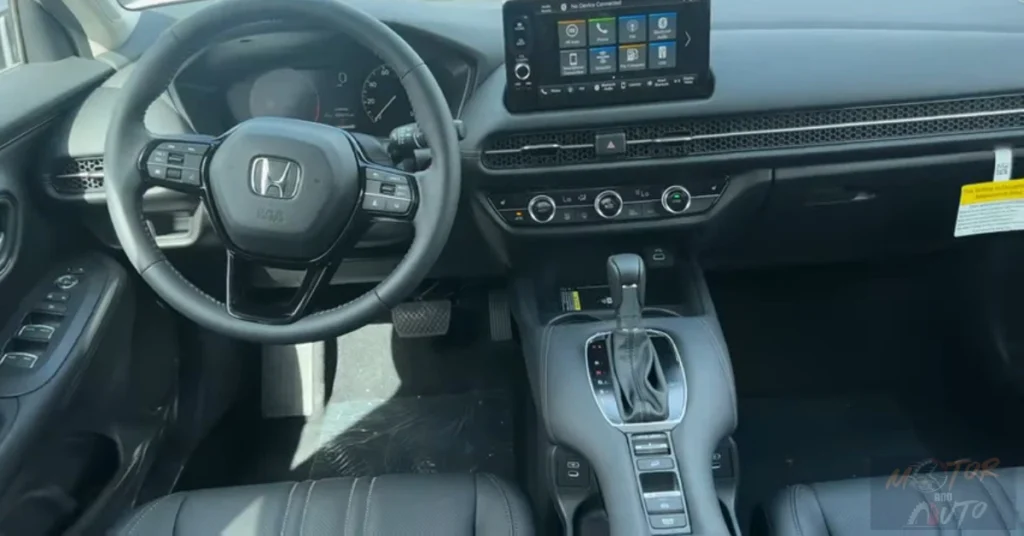
The 2025 Honda HR-V really shines, thanks to its well-crafted chassis, which takes a lot of inspiration from the Civic. Because of this, the handling is, frankly, pretty engaging for a subcompact crossover. The steering system? Well, it manages to hit a sweet spot between being easy to handle and giving solid feedback to the driver. It’s got a bit more weight compared to some of its rivals, which actually gives it that nice, connected feel—something that’s often linked with more upscale rides. Plus, you won’t have to strain yourself when parking or making your way through tight spots.
The HR-V uses a MacPherson strut setup in the front and an independent multi-link suspension system at the back. That’s a step up from some competitors that stick with a simpler torsion beam rear suspension just to cut costs. This advanced setup really makes a difference, contributing to a smoother ride and confident handling. There are stabilizer bars in the front and back that help keep the vehicle stable while cornering, reducing body roll without making the ride feel too stiff for everyday use.
Speaking of ride quality, it’s noticeably better than both the previous HR-V model and the current Honda Civic. The way the suspension is tuned smooths out those annoying road imperfections—like expansion joints and little potholes—without turning the cabin into a harsh experience. And while it’s comfortable, it’s firm enough to avoid that floaty feeling that some comfort-focused crossovers can have. So, whether you’re commuting in the city or hitting the highway for a longer trip, the HR-V feels right at home.
When you take it around corners, it handles predictably. You’ll notice a progressive body roll, which helps you understand the limits of the vehicle pretty clearly. Now, don’t get us wrong, it’s not a sports car, but it definitely offers more engagement than a good number of vehicles in its class. The chassis responds nicely to your steering inputs, with the front end turning in quickly while the rear follows along without any unsettling movements. This kind of behavior can give you a real sense of confidence on twisty roads or in emergency situations, which is great for overall safety.
If you’re thinking about driving in tricky conditions, the all-wheel drive system is available on every trim for an extra $1,500. It boosts the HR-V’s stability when the weather gets rough. Unlike other systems that only kick in the rear wheels when the front ones slip, Honda’s Real Time AWD keeps an eye on the driving conditions and can send power to the rear wheels before you even need it—like when you’re trying to get going from a stop on a slippery road. You won’t even notice it working, but there’s a cool torque distribution display in the instrument cluster that shows how power is being shared between the axles.
For those who often face bad weather, the Snow drive mode tweaks the throttle response and transmission settings to help with traction on slick surfaces. When paired with the all-wheel drive, it gives the HR-V decent capability in tough conditions. But, just a heads up, its ground clearance is about 7 inches, so it’s more suited for light trails than hardcore off-roading. Plus, there’s Hill Descent Control that helps you manage steep downhill slopes by automatically controlling braking to keep you steady at speeds up to 12 mph.
The HR-V’s steering precision contributes significantly to its driving dynamics, providing good on-center feel on the highway and requiring minimal corrections to maintain a straight line. The system’s weight builds naturally as cornering forces increase, giving drivers clear feedback about the available grip. While it doesn’t offer the razor-sharp responses of some sportier competitors like the Mazda CX-30, the HR-V’s steering strikes an excellent balance between comfort and engagement that should satisfy a wide range of drivers.
Tires and Traction:
The 2025 Honda HR-V comes with a variety of tire and wheel combinations, which change depending on the trim level. Each setup has its own unique traits that affect how the ride feels, how it handles, and, of course, how it looks. So, for example, the base LX trim rolls out with 17-inch wheels that are silver-painted alloy. If you move up to the Sport trim, you get 18-inch gloss black alloy wheels. It’s kind of interesting that the top-tier EX-L goes back to 17-inch wheels, but they sport a fancy machine-finish design that sets them apart from the basic model’s wheels.
If we talk about the LX and EX-L trims, those 17-inch wheels are wrapped in 215/60R17 all-season tires. These tires have a taller sidewall, which helps make the ride a bit more comfortable. That extra sidewall flex? It’s handy for soaking up those little bumps in the road before they mess with the suspension. On the flip side, the Sport trim’s 18-inch wheels come with 225/55R18 all-season tires. They give off a sportier vibe with their lower-profile sidewalls, but you might feel a slightly firmer ride because of it.
Speaking of tires, every HR-V model comes equipped with all-season tires from well-known brands. You’ll often find Hankook Kinergy GT tires as the original choice. These tires are made to work well in different conditions, even light snow, while also offering decent tread life. The all-season design fits perfectly with the HR-V’s image as a practical, all-year-round vehicle for folks who deal with a variety of weather but don’t really want to bother with specialized winter tires.
Now, let’s get into how the tire choice affects things beyond just ride quality. The Sport trim’s bigger wheels and those lower-profile tires should, in theory, give you a bit more responsiveness and sharper turns. But honestly, unless you’re really paying attention, most drivers probably won’t even notice a huge difference day to day. On the other hand, the LX and EX-L setups with their taller sidewalls offer better protection against potholes and a more forgiving ride on those bumpy city streets. This probably explains why Honda chose to stick with the 17-inch wheels for the premium EX-L trim instead of going with the Sport’s 18-inch ones—comfort takes precedence for buyers looking for a more luxurious feel.
When it comes to noise, tire sound is well-managed in all models, which is great for keeping the cabin quiet at highway speeds. In fact, testing at 55 mph showed sound levels around 57 decibels, putting the HR-V in the upper half of its class for keeping things peaceful inside. The all-season tires do a nice job of striking a balance between good grip and low rolling resistance, helping the HR-V not just meet but actually beat its EPA fuel economy estimates in real-world conditions.
Oh, and if you’re considering the available all-wheel drive system, the choice of tires becomes even more crucial. The HR-V’s AWD system teams up with the tires to give you better traction in slippery situations. But the all-season tires kind of represent a trade-off, focusing on usability all year instead of top-tier performance. So, if you’re often dealing with harsh winter conditions, you might want to think about swapping in some dedicated winter tires during the colder months to get the most out of that all-wheel drive.
Also, Honda has some cool wheel design options available through its accessory program for those wanting to jazz up their HR-V’s look. You can get HPD (Honda Performance Development) wheels in both black and bronze finishes. They give your ride a sportier appearance without messing with the vehicle’s warranty. Plus, these dealer-installed options let buyers customize their HR-V while still keeping that factory-level quality and fit.
Inside the Honda HR-V:

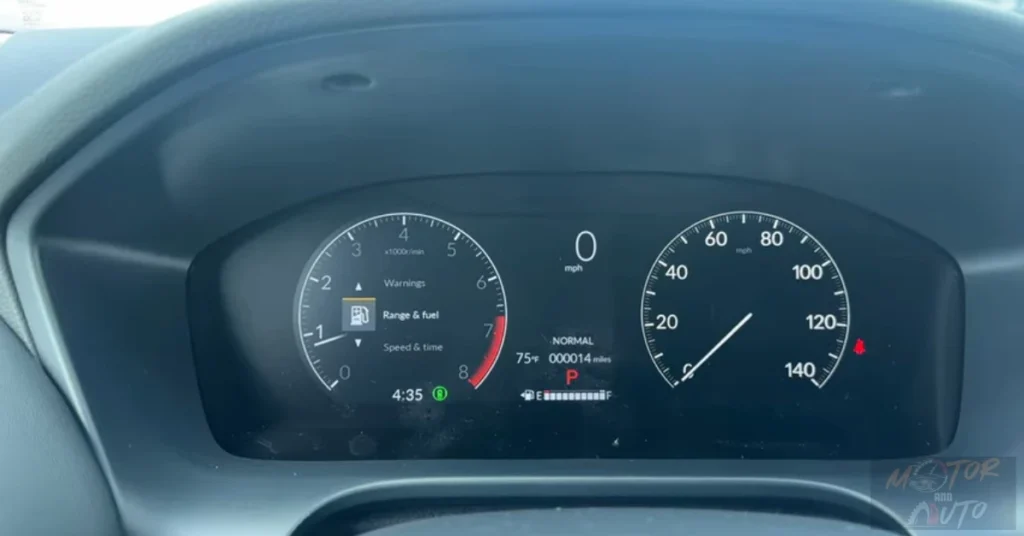
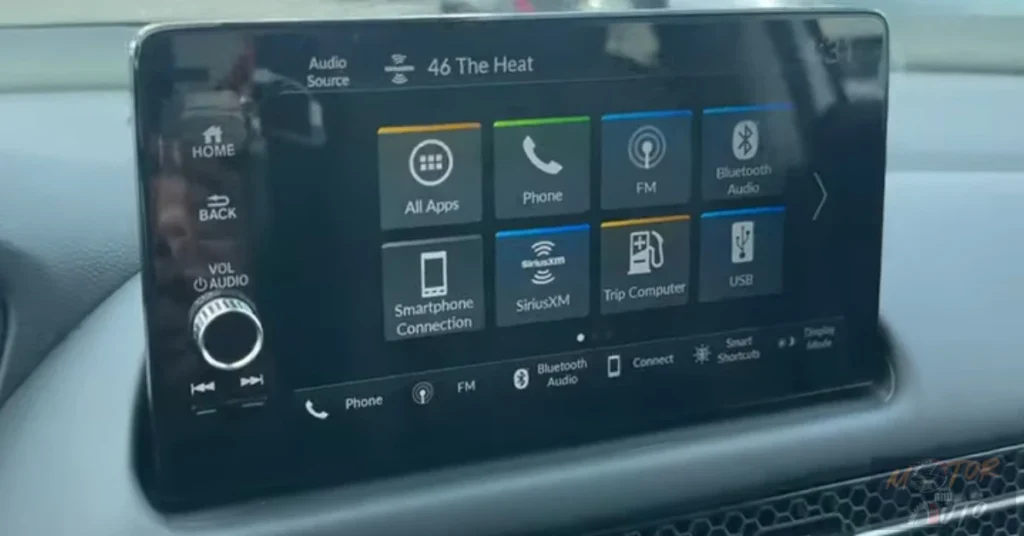
The 2025 Honda HR-V’s interior is a big upgrade from the previous model. It embraces a clean, horizontal design that takes cues from the current Civic. When you step inside, it’s hard not to notice how modern and well-organized everything feels—it definitely has a more upscale vibe than you’d expect for its price. The dashboard features a unique honeycomb-pattern mesh that stretches across the cabin and smartly integrates the air vents. It adds a nice touch of visual flair without feeling over-the-top.
The materials used throughout the interior are impressive for this segment. You’ll find soft-touch surfaces on the dashboard, door panels, and center console, no matter which trim you choose. Even the base LX model manages to avoid that cheap, plasticky feel that some rivals struggle with. If you go for the Sport trim, you get some eye-catching orange contrast stitching on the seats, steering wheel, and shifter, which definitely amps up the sporty vibe. If you opt for the EX-L, it takes things a step further with leather-trimmed seats and a leather-wrapped steering wheel, giving it a classy look.
Honda’s thoughtfulness shines through in the HR-V’s control layout. You’ve got physical buttons and dials for things like climate control, which is so much easier than those touchscreen controls some competitors have switched to—those can take your focus off the road. The climate control panel sits conveniently below the infotainment screen, with clear, easy-to-use knobs for adjusting temperature and fan speed. Plus, the EX-L trim features a dual-zone climate control system, letting the driver and front passenger set their own temperature preferences—something the lower trims don’t offer.
Now, about the instrument cluster: it’s a bit different depending on the trim, but they all come with a 7-inch digital display on the left and an analog speedometer on the right. This semi-digital setup looks modern and keeps the clarity of traditional gauges. You can customize the digital part, cycling through displays for fuel economy, audio info, driver assistance status, and all-wheel drive power distribution if you have the AWD model. It’s a smart design that minimizes distractions, even if some competitors are going all-in on fully digital clusters that offer more customization.
When it comes to lighting, the HR-V doesn’t skimp. You get LED illumination on all trims, which gives the cabin a warm, inviting glow. The EX-L even throws in some ambient LED lighting that brings a touch of sophistication at night. All trims have illuminated vanity mirrors, and the EX-L features an auto-dimming rearview mirror that helps cut down on glare from headlights behind you.
The center console has a unique bridge-like design that cleverly houses the shift lever and drive mode controls while also creating extra storage underneath. This thoughtful layout makes the most of the available space, with USB-C ports on either side for easy charging of your devices. And the center armrest lifts up to reveal a surprisingly roomy storage bin—big enough for items that might not fit in many other cars’ center consoles.
Seating varies across the trims, with cloth upholstery in the LX and Sport and leather in the EX-L. The Sport trim’s cloth seats sport that distinctive orange stitching that ties in with the cabin’s orange accents. All front seats are comfortable and supportive for everyday driving, but only the EX-L comes with an 8-way power-adjustable driver’s seat. The rear seats are nicely padded and at a comfortable height, although they lack the “Magic Seat” feature that was a standout in the previous HR-V generation. Still, the rear seating area is spacious and comfortable for this class.
The EX-L trim exclusively offers a one-touch power moonroof that introduces additional natural light into the cabin, enhancing the feeling of spaciousness. The moonroof includes a tilt function for ventilation without fully opening the roof, and a manual sunshade allows occupants to block out harsh sunlight when desired. This feature, while common in the segment, is notably absent from the LX and Sport trims, which may disappoint buyers looking for this popular feature at a lower price point.
Exterior Design Impressions:


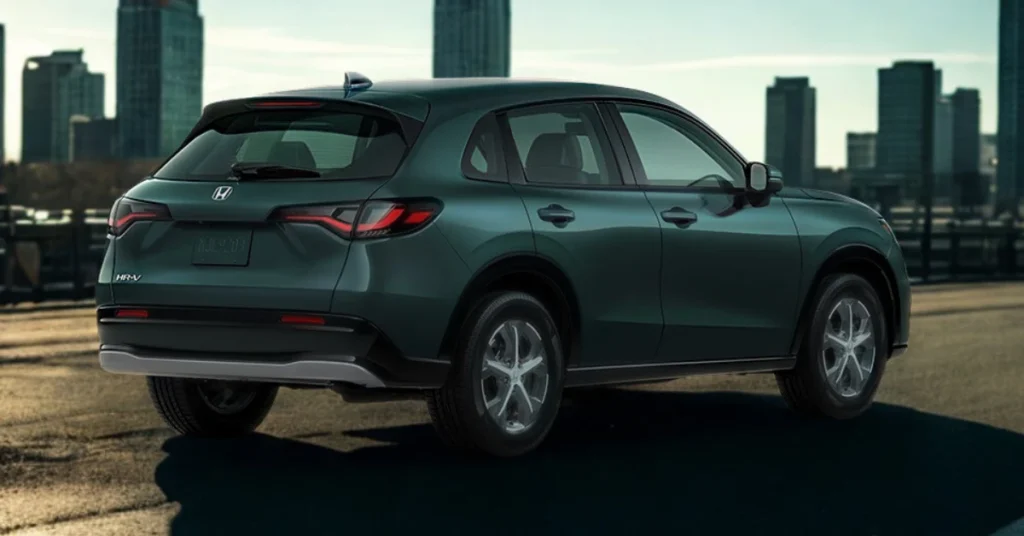
The 2025 Honda HR-V steps up its game with a design that feels a lot more refined compared to the previous generation’s quirky vibes. It’s like Honda took a leap forward, aligning better with their current style. Up front, you’ve got a wide grille that changes depending on the trim level. The Sport trim, for instance, boasts a bold black mesh pattern that gives it a bit of an edge. And hey, all trims come with full LED headlights—definitely a nice perk that not every car in this segment offers. These lights are sharp and angular, giving the HR-V that modern, techy look we all like. You get a complete LED setup, including low beams, high beams, daytime running lights, and turn signals, which means great visibility and a sleek look.
As we shift to the side view, the HR-V has adopted more typical crossover proportions. It’s got a longer hood and a silhouette that feels more like your classic SUV. The rear quarter window has this nice upward curve, adding a bit of flair to an otherwise straightforward design. All trims come with black window surrounds, and the LX and EX-L have body-colored side mirrors, while the Sport trim sports glossy black mirror caps to match its darker vibe. Plus, the Sport and EX-L trims come with LED turn signals integrated into the mirrors, which is a nice touch for both safety and style.
Wheels? Oh, they really help set the trims apart. The base LX rolls on 17-inch silver-painted alloy wheels, but the Sport gets a bump up to 18-inch gloss black alloys that fit its aggressive look. Interestingly, the top-of-the-line EX-L goes back to 17-inch wheels, but these have a fancy machine finish that looks a bit more upscale compared to the base model’s wheels. It seems like Honda is prioritizing comfort for the EX-L, since those smaller wheels can better soak up bumps thanks to their taller tires.
Heading to the back, the HR-V keeps that modern design going with full LED taillights that have a unique light signature. They wrap around the corners, ensuring visibility and a look that’s easily recognizable, especially at night. There’s also an integrated spoiler on the rear window, giving it a sporty flair without being over the top, and a standard rear wiper to keep things clear during bad weather. The liftgate is all about simplicity, too, with minimal badging that adds to its polished look.
Around the lower body, you’ll find some subtle black plastic cladding around the wheel arches and along the door edges. It’s a common crossover feature that hints at off-road capabilities while also protecting against little dings and scratches. Compared to some competitors, the amount of cladding is pretty restrained, which helps reinforce the HR-V’s identity as an urban crossover rather than a tough off-roader. With about 7 inches of ground clearance, it’s got enough lift for those occasional off-pavement adventures without making it a pain to get in and out.
Now, if you opt for the Sport trim, there’s a shiny chrome exhaust finisher that adds a touch of class to the rear view—something you won’t see on the other trims. This little detail shows how Honda pays attention to the differences between trims, giving you more than just different badges. The Sport also features unique bumper designs that enhance its aggressive look without going overboard.
As for colors, the 2025 HR-V offers a range of premium paint options. The Nordic Forest Pearl and Platinum White Pearl come with a $455 premium, but they really pop and change in depth depending on the light. You’ll find a nice mix of conservative colors like Crystal Black Pearl and Lunar Silver Metallic, alongside bolder choices like Milano Red and Modern Steel Metallic. Interior colors vary too, with the LX and EX-L having both black and gray options, while the Sport sticks to a black interior with cool orange contrast stitching.
Honda offers several accessory packages to further customize the HR-V’s appearance, including an HPD (Honda Performance Development) package that adds more aggressive styling elements and a Rugged package that includes fender flares and other SUV-inspired design touches. These dealer-installed options allow buyers to personalize their HR-V while maintaining factory-quality fit and finish, an advantage over aftermarket modifications.
Comfort and Convenience Features

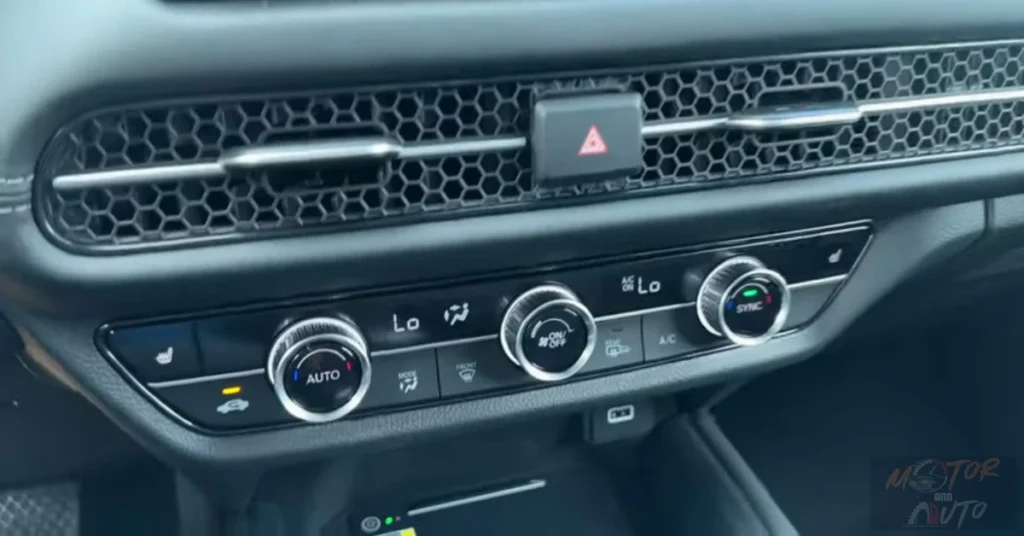

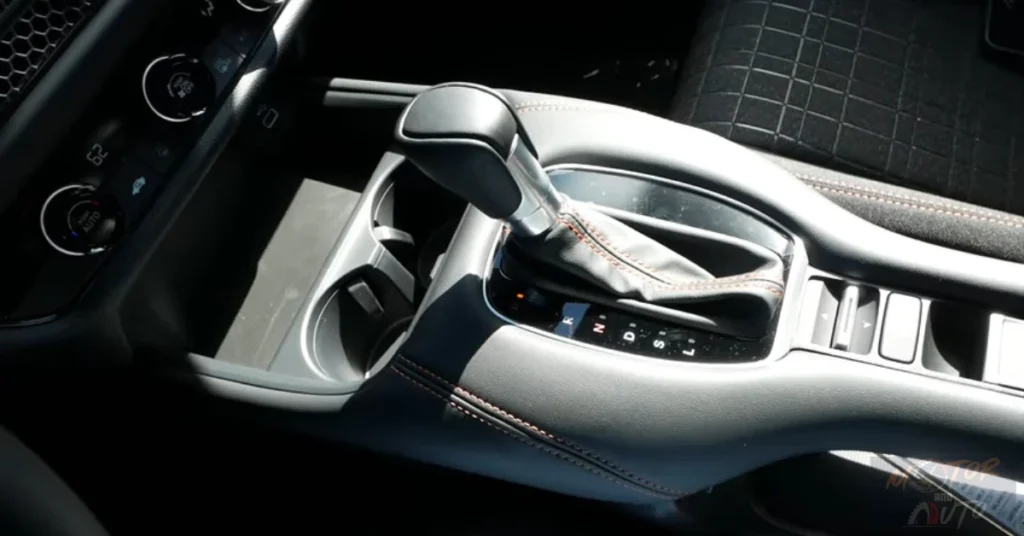


The 2025 Honda HR-V puts passenger comfort first. It’s got well-thought-out seating and a cabin layout that makes the most of the space available. You’ll find that the front seats in all trims offer solid support for everyday driving. They’re cushioned enough to keep you in place during turns, but they don’t feel overly confining. Now, if you go for the LX and Sport trims, you’ll get manually adjustable cloth seats. But if you opt for the EX-L, you’re in for a treat with leather upholstery and an 8-way power-adjustable driver’s seat. Plus, the Sport and EX-L trims come with heated front seats that have three different heat levels. This is a nice touch for those chillier days, heating up quickly and spreading warmth evenly.
Speaking of space, the front legroom is quite impressive at 41.9 inches—yup, that’s even more than the bigger CR-V, which has 41.3 inches. So, tall drivers? No worries about cramping up! Also, the driver’s seat across all models is height adjustable, making it easier for shorter folks to see the road and reach all the controls without a hassle. Now, the rear isn’t too shabby either, with 37.7 inches of legroom. That’s decent for average adults, but taller passengers might feel a bit squished on long trips. The rear seats sit at a comfy height and offer good thigh support, plus there’s a flat floor—thanks to its Civic-based platform—which makes the middle seat more usable than in many other vehicles.
When it comes to climate control, it varies by trim. The LX and Sport models come with single-zone manual air conditioning, while the EX-L gets a dual-zone automatic system all to itself. They’ve kept the controls nice and simple so you can adjust things while driving without any fuss. You’ll find dedicated buttons for front and rear defrost, along with a recirculation function. The Sport and EX-L trims even have heated side mirrors that clear ice and fog in a snap. However, one thing you might miss is rear air vents, which could make things a bit uncomfortable for back-seat passengers when the weather gets extreme.
Storage is another strong point for the HR-V. Honda really knows how to make the most of limited space. The center console has this cool bridge design that allows for pass-through storage under the shift lever—perfect for stashing your phone or wallet. Plus, the cupholders are designed to hold standard-sized drinks securely, and there are spacious pockets in all four doors that even have dedicated spots for bottles. Oh, and don’t forget about the center armrest, which hides a surprisingly big storage bin—wer even managed to fit 12 donuts in there, which is quite the feat for a car in this class!
As you step up in trims, you’ll notice more convenience features. All models come with a push-button start and a tilt/telescoping steering wheel. If you choose the Sport or EX-L, you’ll get a remote engine start—that way, you can warm up the cabin before you hop in. The EX-L also throws in a one-touch power moonroof with tilt, wireless phone charging, an auto-dimming rearview mirror, and a parking sensor system that alerts you when you’re getting close to obstacles at low speeds.
Now, in terms of tech, it’s all about practicality rather than flashy features. Every trim comes with a USB-A port for connecting your smartphone, and the EX-L adds a wireless charging pad upfront. The Sport and EX-L also have extra USB-C ports on either side of the center console, which is super handy for both the driver and passenger. These ports charge faster than the standard USB-A, but here’s a little drawback—there are no charging ports for passengers in the back, which is something to think about nowadays when everyone’s so plugged in.
Getting in and out of the HR-V is a breeze, thanks to the wide-opening doors and a step-in height that finds a sweet spot between the elevated seating of SUVs and the easy access of sedans. The hip point is higher than in a Civic, giving drivers that nice, commanding view of the road that many crossover fans are after, but without the struggle of climbing into a bigger SUV. This design makes it appealing for older drivers or anyone who might have mobility issues but still wants that crossover vibe without the extra hassle of a taller vehicle.
Visibility from the driver’s seat is excellent, with thin A-pillars that minimize blind spots at intersections and large side windows that provide good lateral visibility. The rear window offers a clear view through the rearview mirror, though the standard multi-angle rearview camera provides additional assistance during reverse maneuvers. The Sport and EX-L trims add blind spot monitoring with cross-traffic alert, using indicators in the side mirrors to warn when vehicles are detected in areas not visible in the mirrors.
The sound system quality varies by trim level, with the base LX featuring a four-speaker, 180-watt setup, the Sport upgrading to six speakers while retaining the same power output, and the EX-L topping the range with eight speakers and the same 180 watts of amplification. Audio quality is decent across all systems, with adequate clarity for casual listening, though audiophiles might find even the eight-speaker system lacking compared to premium audio options available in some competitors. The EX-L exclusively adds SiriusXM satellite radio with a 90-day trial subscription and HD Radio capability for enhanced digital AM/FM reception.
Safety and Security:
The 2025 Honda HR-V is stepping up as a real safety champ in the subcompact crossover world, snagging that impressive IIHS Top Safety Pick+ award. That’s the highest honor you can get from the Insurance Institute for Highway Safety, and it really shows how serious Honda is about safety. The HR-V’s solid performance in crash tests? Well, it’s all thanks to its tough ACE™ (Advanced Compatibility Engineering) body structure, which is built to spread crash energy around during frontal impacts, keeping everyone inside safer.
When it comes to airbags, the HR-V doesn’t skimp. You get front, side, and curtain airbags, plus knee airbags for both the driver and passenger. That’s not something you see in every car in this category. And the front seats? They’ve got Honda’s next-gen design that’s meant to help reduce whiplash injuries if you’re hit from behind. Plus, for parents, there’s the LATCH (Lower Anchors and Tethers for Children) system in the back seats. Those anchors are super easy to reach, and they’ve been rated highly in tests for how user-friendly they are.
Now, all the 2025 HR-V models come with Honda Sensing®—that’s their suite of driver assistance tech. You’re getting a good deal here. This package includes the Collision Mitigation Braking System, which can spot potential frontal collisions and hit the brakes for you to lessen the impact or even avoid it entirely. Road Departure Mitigation and Lane Keeping Assist work together too, helping you stay on track and not drift into another lane.
On the highway, Adaptive Cruise Control with Traffic Jam Assist is a game-changer. It keeps a safe distance from the car in front, even if you’re stuck in stop-and-go traffic. It’s smooth sailing in the HR-V—no jerky movements or harsh braking like you might find in some other vehicles. You can also customize the following distance with four options, so you can adjust it depending on the traffic. And don’t forget about Traffic Sign Recognition; it’ll spot common road signs and show them right in your dashboard, keeping you in the loop about speed limits and other important stuff.
If you opt for the Sport or EX-L trims, you’ll get some extra safety goodies too, like a blind spot information system that uses radar to catch vehicles in adjacent lanes that you might miss in your mirrors. If there’s a car in your blind spot, an indicator lights up in your mirror, and if you signal to change lanes, it’ll flash and beep at you. Plus, there’s cross-traffic monitoring when you’re backing up, which checks for cars coming from the sides that you can’t see in your rearview camera—super handy when you’re trying to back out of a tight spot.
For the EX-L trim, you get even more safety tech—like low-speed braking control and a parking sensor system. The low-speed braking control kicks in to help prevent those annoying little bumps you might have in parking lots, automatically applying the brakes if it senses something in the way at low speeds. The parking sensors use ultrasonic tech to give you both sound and visual alerts as you get close to obstacles while parking so you can avoid those costly scrapes.
And it doesn’t stop there. Every HR-V comes with a multi-angle rearview camera that offers three different views: normal, wide-angle, and top-down. This makes it easy to see what’s behind you, even when it’s a bit dark outside. The EX-L takes it up a notch with dynamic guidelines that curve as you steer, helping you visualize where you’re going while backing up. Plus, all trims have automatic high-beam headlights that adjust based on oncoming traffic, so you get the best visibility without blinding other drivers.
For security, the LX has standard remote entry, while the Sport and EX-L trims feature remote proximity entry. So, you can unlock your doors just by grabbing the handle with your key fob in your pocket—pretty neat, right? Plus, those trims come with a walk-away auto lock feature that locks up the vehicle automatically when you walk a certain distance away. That’s a nice safety net in case you forget to lock up. And every trim includes an immobilizer system that stops the engine from starting without the right key—definitely a smart move to cut down on theft.
The HR-V also boasts great visibility, thanks to its slim A-pillars that help keep blind spots to a minimum and a design that offers good sightlines all around. When you put all these active and passive safety features together, it’s more than just a vehicle that keeps you safe in a crash. It actually works to help you avoid accidents altogether. That’s a big win for the HR-V and gives it a serious edge in its class.
On the Road with the Honda HR-V:
Behind the wheel of the 2025 Honda HR-V, you really get a driving experience that favors comfort and capability over pure sportiness. But hey, it still manages to keep things engaging enough to stand out from some rivals. Right off the bat, the seating position feels welcoming. You have a great view all around, thanks to those reasonably slender pillars and big windows. Plus, the driver sits a good bit higher than in a Civic, which is exactly what many crossover buyers are after—a nice, commanding view of the road. The flat hood? It’s super helpful for judging how much space you’ve got in tight spots.
When you set off, the first thing that strikes you is how refined it feels. At lower speeds, especially in the city, the 2.0-liter engine and CVT work together smoothly, offering a nice, linear acceleration that’s perfect for urban driving. This powertrain suits the stop-and-go style of city life, where you’re not often in a rush. The continuously variable transmission? It’s great because it avoids that annoying hunting behavior you sometimes get with traditional automatics in city traffic. Instead, it keeps the engine at an optimal speed, balancing responsiveness and fuel efficiency. This is where the HR-V shines—its compact size, tight turning radius, and great visibility make it a breeze to navigate through crowded streets and squeeze into those snug parking spots.
When you hit the highway, you get to see both the strengths and some weaknesses of the HR-V. Once you reach cruising speed, it settles into a comfortable and stable ride that gives you a lot of confidence. The steering feels good, needing only a little adjustment to stay straight, even when the winds pick up. You’ll notice that road and wind noise are kept in check at highway speeds, too—about 57 decibels at 55 mph, which is quiet for this class. The suspension? It does a good job of soaking up those highway bumps without letting them disrupt the cabin, all while keeping control over larger dips and rises.
However, one of the HR-V’s weaker points pops up during highway merges and when you’re trying to pass. That 2.0-liter engine’s modest power output really shows itself here. If you’re looking to go from 50 to 70 mph to pass someone, you’ll need to be patient and plan ahead—because the engine’s working hard and the CVT holds high RPMs, which creates a bit of a drone inside the cabin. This lack of extra power can be frustrating, especially when you need a quick boost, like merging onto busy highways or passing slower vehicles on two-lane roads. Engaging the Sport mode—just pull the shifter back one notch from Drive—does help a bit by keeping the engine revving higher, but it doesn’t completely fix the power issue.
When it comes to handling, you can feel the HR-V’s Civic roots. The chassis feels stable and composed in corners, although there’s a bit of body roll that’s well-managed. It communicates the vehicle’s limits clearly to you without feeling too loose. The steering is precise and on the heavier side, which gives a nice sense of connection that some competitors lack. Sure, it doesn’t quite match the sporty feel of the Mazda CX-30, but overall, the HR-V finds a good middle ground between comfort and handling that should please most buyers in this segment.
The optional all-wheel drive system is seamless in dry conditions, directing power mainly to the front wheels for better efficiency. If it detects a slip or you’re getting on the gas from a stop, it can send up to 50% of the torque to the rear wheels, which helps with traction and stability. There’s even a nifty display in the instrument cluster that shows real-time torque distribution so you can see how it’s working. In low-traction situations—think snowy or gravelly roads—the AWD system does a solid job of helping you keep moving. But you should keep in mind that the HR-V’s ground clearance, at around 7 inches, means it’s best for light trails rather than serious off-roading.
As for the drive mode selector, it’s right behind the shifter and gives you three options: Normal, Econ, and Snow. Normal is great for everyday driving, while Econ tweaks throttle response and climate control to help save on fuel. Snow mode changes the throttle and transmission behavior to reduce wheel spin on slippery surfaces, working alongside the all-wheel drive system if you have it. These modes are handy for different conditions, though none really change the HR-V’s overall driving personality.
The braking performance is confidence-inspiring, with a firm pedal feel that provides good modulation. The initial bite is strong without being grabby, allowing for smooth stops in everyday driving. The 12.3-inch front and 12.2-inch rear disc brakes provide adequate stopping power for a vehicle of this size and weight, with a 70-0 mph stopping distance of approximately 172 feet in independent testing—an average figure for the segment. The braking system maintains consistency during repeated stops, showing minimal fade even under strenuous conditions.
For those who venture off the beaten path, the HR-V includes Hill Descent Control, which automatically manages braking on steep downhill grades to maintain a steady speed of up to 12 mph. This allows drivers to focus on steering while the system handles precise braking control, a useful feature for the occasional off-road excursion. Combined with the available all-wheel drive system, this gives the HR-V modest capability for light trail driving, though it remains firmly in the “soft-roader” category rather than a genuine off-road vehicle.
Honda HR-V Rear Seat Comfort
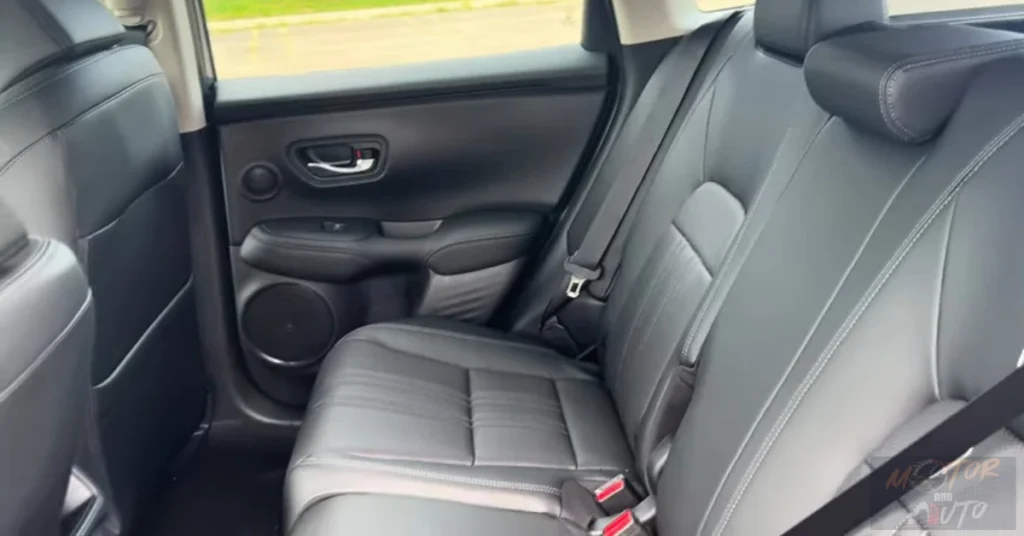

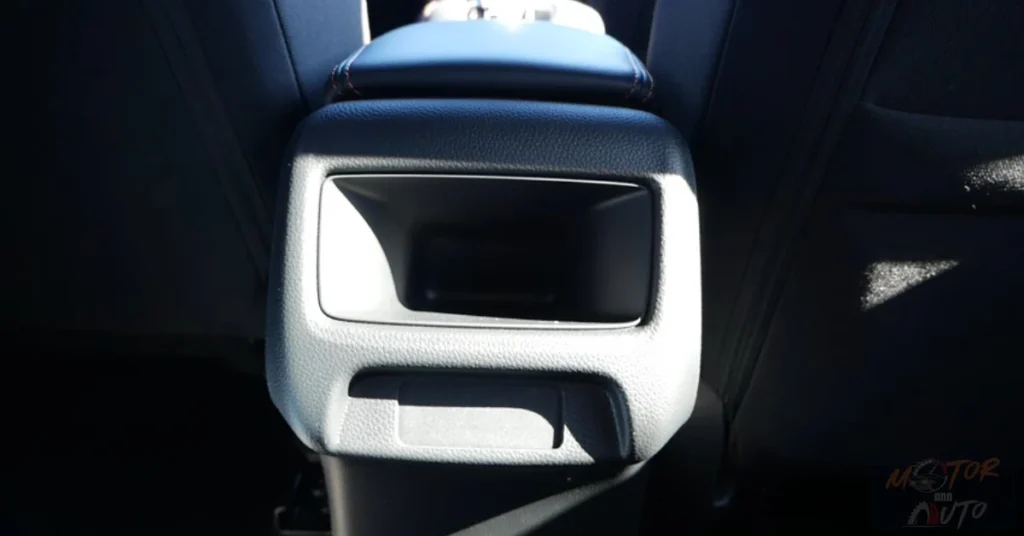
The back seating area is surprisingly roomy given how compact the car is on the outside. With about 37.7 inches of legroom, the HR-V does a decent job for average-sized adults. Sure, it doesn’t quite match the more spacious CR-V, which offers around 41 inches, but still, this legroom places the HR-V in the upper half of the subcompact crossover crowd. You’re getting more space than some rivals while keeping up with its compact vibe in Honda’s lineup.
Getting into the back seat is pretty easy. The doors swing open wide—around 80 degrees—making it easy to hop in and out. The door sills are nicely narrow, and the floor isn’t too high up, so you don’t have to do that awkward climb-in thing you get with some taller SUVs. Once you’re settled, the seating position is well thought out, giving good thigh support and a comfy backrest angle that strikes a balance between being upright and relaxed. Unlike some rivals that put rear seats low to maximize headroom, the HR-V has its rear bench at a natural height, which makes longer drives more comfortable.
Speaking of headroom, you’re looking at about 38 inches back there. That’s enough for most folks up to around 6 feet tall before they start feeling a bit cramped. The HR-V keeps a traditional crossover shape rather than going for that trendy sloped look that some others have, which helps maintain usable space for those sitting in the back. Sure, the power moonroof in the EX-L trim does shave off a bit of headroom compared to the LX and Sport trims, but honestly, it’s a minor difference, and most people probably won’t even notice.
Now, the rear seating can fit three passengers, but like with many cars in this segment, the middle seat is more suited for short trips or smaller folks. The good news is that the floor is nearly flat, thanks to the Civic-based platform, which makes it easier for the center passenger to find a comfy spot for their feet. The middle seat isn’t as contoured as the side ones, but it’s still got enough padding for occasional use. Safety-wise, all three rear seats come with three-point seatbelts and properly positioned headrests.
One thing that’s a bit disappointing? There’s no rear center armrest with cupholders, which is something you’d find in many of its competitors nowadays. So, if you’re in the back, you’ll have to make do with the bottle holders in the door panels. They can fit standard water bottles, but they don’t offer the same convenience as dedicated cupholders. It’s a little surprising since Honda usually pays great attention to practical details.
As for the materials in the back, they hold up pretty well against what you find up front, keeping a consistent feel throughout the cabin. The LX and Sport trims come with cloth upholstery, while the EX-L steps it up with leather seats. The Sport trim even has some cool orange contrast stitching on the cloth seats for a pop of style, although, unfortunately, none of the rear seats have heating like the front ones do. The door panels feature soft-touch materials where passengers might rest their arms, showing Honda’s efforts to keep things comfortable, even in the less visible spots.
When it comes to storage, rear passengers might find it a bit lacking. The seatback pockets are only on the passenger side in the EX-L, and there are no pockets on the front seatbacks in the LX and Sport trims. The door pockets have built-in bottle holders, but overall, they’re pretty slim—leaving little room for personal items. And here’s a big one: the HR-V doesn’t have any USB ports or power outlets for those in the back. In today’s world, that’s a big miss, especially with families who have kids relying on devices for entertainment during longer drives.
Another thing to note is that there are no rear air vents. Some competitors in this price range offer them, but here, rear passengers have to depend on airflow from the front vents. This can lead to uneven heating or cooling, especially on scorching summer days when it might take a while for that cool air to reach the back. Given Honda’s focus on family-friendly features, not having dedicated rear climate controls or even basic vents feels like a missed opportunity to boost comfort for everyone.
Child seat accommodation is well-executed, with LATCH anchors in both outboard seating positions that provide secure attachment points for compatible child restraints. The anchors are easily accessible beneath small plastic covers, earning good ratings for ease of use in independent evaluations. The rear doors open wide enough to facilitate installing bulky car seats, though the compact dimensions of the vehicle mean that front passengers may need to adjust their seating position forward when rear-facing infant seats are installed behind them—a common compromise in vehicles of this size.
Bootspace and Practicality

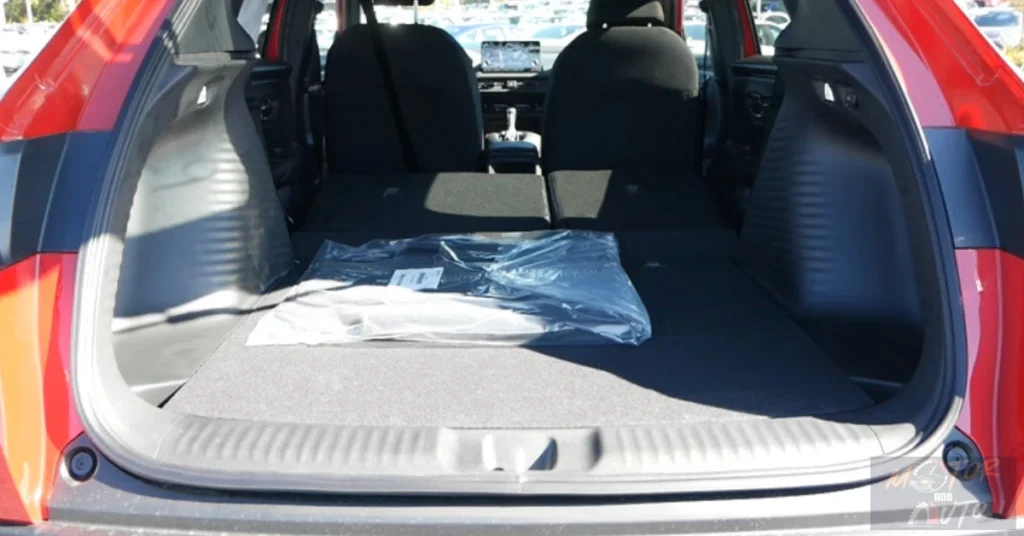
The 2025 Honda HR-V stands out when it comes to cargo space for a subcompact crossover. Seriously, it offers a level of utility that competes with or even beats many rivals in its class. You’re looking at about 24.4 cubic feet of cargo room behind the rear seats. That’s more than what you get in some popular models like the Mazda CX-30, Toyota Corolla Cross, and Subaru Crosstrek. This spaciousness is thanks to the HR-V’s smart, upright rear design, which makes the most of the available space. Plus, its exterior size is still manageable for city driving.
Getting into the cargo area is pretty easy, too. Every trim level comes with a liftgate that you operate manually. Sure, some competitors have power liftgates on their higher trims, but Honda decided to prioritize other features for the EX-L instead of that convenience. When you open the liftgate, you’ll find a wide and nicely shaped cargo area with a low load floor. This makes it a breeze to slide in heavier items without having to hoist them high up. The opening is about 41 inches wide and 28 inches tall, which is great for fitting in larger boxes and bulky stuff that might be tricky to manage in other vehicles with fancier rear designs.
The cargo floor is carpeted across all trims, though the EX-L does use slightly nicer materials. If you want a little extra security, there’s a removable cargo cover available as an accessory, perfect for hiding your valuables from nosy eyes. And let’s not forget the handy tie-down anchors in all four corners—these are super useful for keeping your stuff secure while you’re driving. There’s also a 12-volt power outlet back there, which is perfect for plugging in things like coolers or inflators, especially when you’re out on road trips or outdoor adventures.
One of the most convenient features of the HR-V has to be its 60/40 split-folding rear seats. When you fold them down, the cargo capacity expands to a whopping 55.1 cubic feet! Unlike some competitors that leave you with an annoying step or incline, the HR-V’s seats fold almost flat. This creates a seamless cargo floor, making it way easier to load longer items. You can fold the seats down using release levers located near the headrests, but here’s the catch—you have to do it from the side doors, not from the back. It’s a little annoying, but honestly, it’s not a huge deal compared to systems that let you fold from either side.
In real-world tests, the HR-V’s cargo area could fit seven standard carry-on suitcases behind the rear seats and an impressive 22 with the seats folded down. That’s remarkable if you think about it—it means this vehicle can handle everything from airport runs to road trips. Even when the car’s packed with passengers, there’s still enough room for groceries or luggage for a weekend getaway. It’s definitely a versatile option for active folks, even with its compact size.
Now, if you look beneath the cargo floor, there are additional storage compartments that add to the versatility without taking away from the main cargo space. These little nooks are perfect for keeping smaller items organized and preventing them from rolling around while you’re driving. You could stash emergency kits, small tools, or those rarely used items out of sight but still within reach. And if you lift one of those compartments, you’ll find a spare tire—a full-diameter temporary spare that offers more security than those tire repair kits some competitors provide.
For anyone who needs to haul longer items while still having space for passengers, the split rear seats offer plenty of flexibility. You can fold down the smaller section for things like skis or lumber while still keeping two rear seats available. The nearly flat load floor, when the seats are down, means those longer items slide right in without snagging on uneven bits. This is a real bonus for people who regularly transport sports gear or home improvement supplies.
The cargo area also comes with LED lighting on all trims, which is a nice touch for loading and unloading in low light. Combined with that wide opening and low lift-over height, it makes the HR-V’s cargo space user-friendly in all kinds of situations.
For those who need even more cargo capacity, the HR-V has roof rail mounting points so you can add crossbars and other roof-mounted accessories. While the roof rails don’t come standard, you can get them as a dealer-installed accessory. This gives you extra room for items like bikes, kayaks, or roof boxes. With a roof weight capacity that’s typical for this segment, it’s a solid solution for those occasional oversized cargo needs, all without the hassle of needing a bigger vehicle for everyday use.
The Honda HR-V Value Proposition: Is It Worth the Price?
The 2025 Honda HR-V is definitely worth a closer look, especially when you think about how it stacks up against both its rivals and Honda’s own lineup. So, here’s the scoop: You’re looking at prices starting around $26,450 for the base LX model, all the way up to about $30,550 for the fancy EX-L trim, before you add on any extras or destination fees. This places the HR-V right in the mix of the subcompact crossover market, but it’s on the pricier side compared to some budget-friendly competitors. If you want all-wheel drive, expect to shell out an extra $1,500. Oh, and if you’re eyeing those premium paint colors like Platinum White Pearl or Nordic Forest Pearl, that’ll cost you another $455. With the required $1,350 destination charge factored in, a fully loaded HR-V EX-L with AWD will be flirting with the $33,000 mark—getting close to larger vehicles, like Honda’s CR-V.
This pricing puts the HR-V at a higher starting point than some other options out there, which shows Honda’s commitment to using quality materials, offering solid safety features, and delivering a smooth driving experience rather than just competing on price alone. And hey, when you consider the HR-V’s impressive predicted reliability and resale value—estimated to hold about 64.8% of its original price after five years and 60,000 miles—it’s clear it stands strong in a crucial but often overlooked area of ownership costs. For folks planning to hang onto their vehicle for a while, this advantage could help balance out the HR-V’s higher upfront cost.
About the features—it’s got a solid case for value, especially in terms of safety tech. Every trim comes with Honda Sensing, which is a suite of driver assistance features. Even the base LX model includes stuff like adaptive cruise control, collision mitigation braking, lane-keeping assist, and traffic sign recognition—things that are still optional on some rivals’ base models. Every HR-V model comes with full LED lighting, which is nice and not something you see everywhere in this price range. These standard features help back up the HR-V’s premium position while offering good value to everyone, no matter their budget.
When you dive into the different trims, the mid-tier Sport, at $28,550, stands out as a great choice for many buyers. It adds some important upgrades over the LX, like 18-inch gloss black alloy wheels, heated front seats, blind spot monitoring, remote engine start, and a leather-wrapped steering wheel with eye-catching orange stitching. These features fill in some gaps from the base model and keep the price under $30,000. Plus, the Sport’s unique styling elements—like the gloss black mirrors and distinctive front grille—are sure to catch the eye of many potential buyers.
Moving on to the EX-L trim at $30,550, this one pushes the HR-V into more premium territory. You get leather seating, a power moonroof, wireless smartphone integration, dual-zone climate control, and an upgraded eight-speaker audio system. While all that is great, the nearly $2,000 jump from the Sport might be a tough sell for some folks, especially since it starts to get close to the price of the larger CR-V. But if you’re someone who values luxury features and the latest tech, the EX-L offers a near-premium experience that’s still reasonably priced compared to similar models.
Now, let’s get a bit more complicated. When you look at the HR-V in relation to the CR-V in Honda’s lineup, things get interesting. The 2025 CR-V LX kicks off at around $30,000, which is pretty close to the HR-V EX-L’s price. But the CR-V gives you more interior room, cargo space, and power from its 1.5-liter turbocharged engine. This pricing proximity means buyers need to weigh whether the HR-V’s compact size and slightly lower running costs are worth it compared to the CR-V’s extra space and performance. For city dwellers or anyone with tight parking, the HR-V’s smaller size might make it the better choice—despite that minimal price gap at the higher trims.
When it comes to fuel economy, the HR-V has some decent numbers to offer. For the front-wheel drive versions, you’re looking at about 26 miles per gallon in the city and 32 on the highway. If you opt for the all-wheel drive, it drops a bit to around 25 mpg in the city and 30 on the highway. Those numbers are solid, sure, but they don’t take the lead in the growing market of hybrids, which are becoming more common and can give you way better efficiency. It’s kind of surprising that there isn’t a hybrid option available in the U.S. for the HR-V, especially when Honda has shown they know how to do hybrids well in their other cars. So, if fuel efficiency is high on your list, you might want to check out some hybrid models, even if they do cost a bit more upfront.
Now, let’s talk about maintenance and ownership costs. Here, the HR-V tends to shine. Honda is known for being reliable, which usually means fewer unexpected repairs during your time with the car. They do offer a complimentary maintenance program for the first year or up to 12,000 miles. But here’s a little caveat: that’s down from the two years they provided for the 2024 model, so keep that in mind. Also, the basic warranty is 3 years or 36,000 miles, and for the powertrain, it’s 5 years or 60,000 miles. Those are pretty standard in the industry, not necessarily standout numbers, especially when you compare them to what Hyundai and Kia offer with their longer warranties. But hey, Honda’s reliability can help ease concerns about that.
For those who need practicality, the HR-V does make a strong argument. You get a cargo space of 24.4 cubic feet behind the back seats, and if you fold those seats down, it expands to a whopping 55.1 cubic feet. That’s more than many rivals, providing a flexibility that feels closer to larger vehicles, but without the hassle of navigating a big SUV through city traffic. It’s a neat trick they’ve pulled off—compact on the outside but roomy on the inside, which is great if you often haul stuff around but don’t want the fuel costs or parking headaches that come with bigger SUVs.
All in all, the 2025 Honda HR-V offers good value for folks who care about quality materials, smooth driving, solid safety features, and the brand’s reputation for reliability rather than just raw power or the cheapest sticker price. Yes, it might cost a bit more than some rivals, but you do get real advantages in features, build quality, and lower long-term ownership costs, especially when you think about resale value down the line. Still, it’s wise for buyers to think about what matters most to them—like power, backseat comfort, and tech options—because in those areas, some competitors might just give you more bang for your buck, depending on what you’re after.



